
NASA
The National Aeronautics and Space Administration is an independent agency of the US federal government responsible for the civil space program, aeronautics research, and space research.
The NASA space probe New Horizons flew by the trans-Neptunian object Arrokoth (pictured), making it the farthest object visited by a spacecraft.

The National Aeronautics and Space Administration is an independent agency of the US federal government responsible for the civil space program, aeronautics research, and space research.

New Horizons is an interplanetary space probe that was launched as a part of NASA's New Frontiers program. Engineered by the Johns Hopkins University Applied Physics Laboratory (APL) and the Southwest Research Institute (SwRI), with a team led by Alan Stern, the spacecraft was launched in 2006 with the primary mission to perform a flyby study of the Pluto system in 2015, and a secondary mission to fly by and study one or more other Kuiper belt objects (KBOs) in the decade to follow, which became a mission to 486958 Arrokoth. It is the fifth space probe to achieve the escape velocity needed to leave the Solar System.

A trans-Neptunian object (TNO), also written transneptunian object, is any minor planet in the Solar System that orbits the Sun at a greater average distance than Neptune, which has a semi-major axis of 30.1 astronomical units (au).

486958 Arrokoth (provisional designation 2014 MU69) is a trans-Neptunian object located in the Kuiper belt. Arrokoth became the farthest and most primitive object in the Solar System visited by a spacecraft when the NASA space probe New Horizons conducted a flyby on 1 January 2019. Arrokoth is a contact binary 36 km (22 mi) long, composed of two planetesimals 21 km (13 mi) and 15 km (9 mi) across, that are joined along their major axes. With an orbital period of about 298 years and a low orbital inclination and eccentricity, Arrokoth is classified as a cold classical Kuiper belt object.
An attack on a nightclub in Istanbul, Turkey, during New Year's celebrations, kills at least 39 people and injures more than 60 others.

The Istanbul nightclub shooting was a mass shooting incident on 1 January 2017 around 01:15 am local time, in which a terrorist shot and killed 39 people and wounded 79 others at the Reina nightclub in the Ortaköy neighbourhood of Istanbul, Turkey, where hundreds had been celebrating New Year's Day. Uzbekistan-born Abdulkadir Masharipov was arrested in Istanbul on 17 January 2017. Islamic State of Iraq and the Levant claimed credit for his actions. The first hearing in the trial of Masharipov and 51 accused accomplices was held on 11 December 2017, and the next hearing was held on 26 March 2018.

Istanbul, formerly known as Constantinople, is the largest city in Turkey, serving as the country's economic, cultural and historic hub. The city straddles the Bosporus strait, lying in both Europe and Asia, and has a population of over 15 million residents, comprising 19% of the population of Turkey. Istanbul is the most populous European city, and the world's 15th-largest city.

Turkey, officially the Republic of Türkiye, is a transcontinental country located mainly on the Anatolian Peninsula in Western Asia, with a small portion on the Balkan Peninsula in Southeast Europe. It shares borders with the Black Sea to the north; Georgia to the northeast; Armenia, Azerbaijan, and Iran to the east; Iraq to the southeast; Syria and the Mediterranean Sea to the south; the Aegean Sea to the west; and Greece and Bulgaria to the northwest. Cyprus is located off the south coast. Turks form the vast majority of the nation's population and Kurds are the largest minority. Ankara is Turkey's capital, while Istanbul is its largest city and financial centre.
The Eurasian Economic Union comes into effect, creating a political and economic union between Russia, Belarus, Armenia, Kazakhstan and Kyrgyzstan.

The Eurasian Economic Union is an economic union of some post-Soviet states located in Eurasia. The Treaty on the Eurasian Economic Union was signed on 29 May 2014 by the leaders of Belarus, Kazakhstan, and Russia, and came into force on 1 January 2015. Treaties aiming for Armenia's and Kyrgyzstan's accession to the Eurasian Economic Union were signed on 9 October and 23 December 2014, respectively. Armenia's accession treaty came into force on 2 January 2015. Kyrgyzstan's accession treaty came into effect on 6 August 2015. Kyrgyzstan participated in the EAEU from the day of its establishment as an acceding state.
At least 60 people are killed and 200 injured in a stampede after celebrations at Félix Houphouët-Boigny Stadium in Abidjan, Ivory Coast.

The 2013 Houphouët-Boigny stampede occurred as crowds departed a New Year's Eve fireworks display in the early hours of 1 January 2013 near the Félix Houphouët-Boigny Stadium in Abidjan, Ivory Coast. It resulted in 61 deaths and over 200 injuries, mostly women and children. This was the second time in four years that a fatal stampede occurred at the stadium.
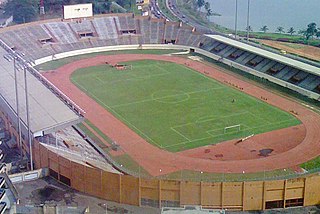
The Stade Félix-Houphouët-Boigny, nicknamed Le Félicia, is a multi-purpose stadium, which can host football, rugby union and athletics, in Abidjan, Ivory Coast. It is the national stadium of the Ivory Coast national football team. It is named after the first president of the country, Félix Houphouët-Boigny, and is located in the commune of Le Plateau. The stadium has a capacity of 50,000. It also hosts matches of ASEC Abidjan. It has been the site of several deadly stampedes.

Abidjan is the economic capital of the Ivory Coast. As of the 2021 census, Abidjan's population was 6.3 million, which is 21.5 percent of overall population of the country, making it the sixth most populous city proper in Africa, after Lagos, Cairo, Kinshasa, Dar es Salaam, and Johannesburg. A cultural crossroads of West Africa, Abidjan is characterised by a high level of industrialisation and urbanisation. It also is one of the most populous French-speaking cities in Africa.

Ivory Coast, also known as Côte d'Ivoire, officially the Republic of Côte d'Ivoire, is a country on the southern coast of West Africa. Its capital is Yamoussoukro, in the centre of the country, while its largest city and economic centre is the port city of Abidjan. It borders Guinea to the northwest, Liberia to the west, Mali to the northwest, Burkina Faso to the northeast, Ghana to the east, and the Gulf of Guinea to the south. Its official language is French, and indigenous languages are also widely used, including Bété, Baoulé, Dioula, Dan, Anyin, and Cebaara Senufo. In total, there are around 78 different languages spoken in Ivory Coast. The country has a religiously diverse population, including numerous followers of Christianity, Islam, and indigenous faiths.
A suicide bombing took place outside a Coptic Orthodox church in Alexandria, Egypt, following a New Year service, killing 23 people.
The 2011 Alexandria bombing was an attack on Coptic Christians in Alexandria, Egypt, on Saturday, 1 January 2011. 23 people died and another 97 were injured as a result of the attack, which occurred as Christian worshipers were leaving a New Year service. The attack was the deadliest act of violence against Egypt's Coptic Christians in a decade, since the Kosheh massacre in 2000 left 20 Copts dead. The target of the bombing was the Saints Church, a Coptic church located across the street from the Masjid Sharq El-Madina mosque.

The Coptic Orthodox Church, also known as the Coptic Orthodox Patriarchate of Alexandria, is an Oriental Orthodox Christian church based in Egypt, servicing Africa and the Middle East. The head of the church and the See of Alexandria is the Pope of Alexandria on the Holy Apostolic See of Saint Mark, who also carries the title of Father of fathers, Shepherd of Shepherds, Ecumenical Judge and the thirteenth among the Apostles. The See of Alexandria is titular, and today, the Coptic Pope presides from Saint Mark's Coptic Orthodox Cathedral in the Abbassia District in Cairo. The church follows the Coptic Rite for its liturgy, prayer and devotional patrimony. The church has approximately 25 million members worldwide and is Egypt's largest Christian denomination.

Alexandria is the second largest city in Egypt, and the largest city on the Mediterranean coast. Founded in c. 331 BC by Alexander the Great, Alexandria grew rapidly and became a major centre of Hellenic civilisation, eventually replacing Memphis, in present-day Greater Cairo, as Egypt's capital. During the Hellenistic period, it was home to the Lighthouse of Alexandria, which ranked among the Seven Wonders of the Ancient World, as well as the storied Library of Alexandria. Today, the library is reincarnated in the disc-shaped, ultramodern Bibliotheca Alexandrina. Its 15th-century seafront Qaitbay Citadel is now a museum. Called the "Bride of the Mediterranean" by locals, Alexandria is a popular tourist destination and an important industrial centre due to its natural gas and oil pipelines from Suez.
A bomb explodes as Coptic Christians in Alexandria, Egypt, leave a new year service, killing 23 people.
The 2011 Alexandria bombing was an attack on Coptic Christians in Alexandria, Egypt, on Saturday, 1 January 2011. 23 people died and another 97 were injured as a result of the attack, which occurred as Christian worshipers were leaving a New Year service. The attack was the deadliest act of violence against Egypt's Coptic Christians in a decade, since the Kosheh massacre in 2000 left 20 Copts dead. The target of the bombing was the Saints Church, a Coptic church located across the street from the Masjid Sharq El-Madina mosque.

Copts are a Christian ethnoreligious group indigenous to North Africa who have primarily inhabited the area of modern Egypt and Sudan since antiquity. Most ethnic Copts are Coptic Oriental Orthodox Christians. They are the largest Christian denomination in Egypt and the Middle East, as well as in Sudan and Libya. Copts have historically spoken the Coptic language, a direct descendant of the Demotic Egyptian that was spoken in late antiquity.

Alexandria is the second largest city in Egypt, and the largest city on the Mediterranean coast. Founded in c. 331 BC by Alexander the Great, Alexandria grew rapidly and became a major centre of Hellenic civilisation, eventually replacing Memphis, in present-day Greater Cairo, as Egypt's capital. During the Hellenistic period, it was home to the Lighthouse of Alexandria, which ranked among the Seven Wonders of the Ancient World, as well as the storied Library of Alexandria. Today, the library is reincarnated in the disc-shaped, ultramodern Bibliotheca Alexandrina. Its 15th-century seafront Qaitbay Citadel is now a museum. Called the "Bride of the Mediterranean" by locals, Alexandria is a popular tourist destination and an important industrial centre due to its natural gas and oil pipelines from Suez.

Egypt, officially the Arab Republic of Egypt, is a transcontinental country spanning the northeast corner of Africa and southwest corner of Asia via a land bridge formed by the Sinai Peninsula. It is bordered by the Mediterranean Sea to the north, the Gaza Strip of Palestine and Israel to the northeast, the Red Sea to the east, Sudan to the south, and Libya to the west. The Gulf of Aqaba in the northeast separates Egypt from Jordan and Saudi Arabia. Cairo is the capital and largest city of Egypt, while Alexandria, the second-largest city, is an important industrial and tourist hub at the Mediterranean coast. At approximately 100 million inhabitants, Egypt is the 14th-most populated country in the world.
Estonia officially adopts the Euro currency and becomes the 17th Eurozone country.

Estonia, formally the Republic of Estonia, is a country by the Baltic Sea in Northern Europe. It is bordered to the north by the Gulf of Finland across from Finland, to the west by the sea across from Sweden, to the south by Latvia, and to the east by Lake Peipus and Russia. The territory of Estonia consists of the mainland, the larger islands of Saaremaa and Hiiumaa, and over 2,200 other islands and islets on the eastern coast of the Baltic Sea, covering a total area of 45,339 square kilometres (17,505 sq mi). The capital city Tallinn and Tartu are the two largest urban areas of the country. The Estonian language is the autochthonous and the official language of Estonia; it is the first language of the majority of its population, as well as the world's second most spoken Finnic language.

The eurozone (EZ), officially called the euro area, is a group of 19 member states of the European Union (EU) that have fully implemented the Economic and Monetary Union of the European Union and have thus adopted the euro (€) as their primary currency and sole legal tender: Austria, Belgium, Cyprus, Estonia, Finland, France, Germany, Greece, Ireland, Italy, Latvia, Lithuania, Luxembourg, Malta, the Netherlands, Portugal, Slovakia, Slovenia, and Spain. The monetary authority of the eurozone is the Eurosystem. The eight non-eurozone members of the European Union are Bulgaria, Czech Republic, Croatia, Denmark, Hungary, Poland, Romania, and Sweden. They continue to use their own national currencies, although all but one of them (Denmark) are obliged to join once they meet the euro convergence criteria. No state has left, and there are no provisions to do so or to be expelled.
A suicide bomber killed 105 spectators at a volleyball game in the Lakki Marwat District of Pakistan.
The 2010 Lakki Marwat suicide bombing occurred on 1 January 2010, in the village of Shah Hassan Khel, Lakki Marwat District, in the Khyber-Pakhtunkhwa province of Pakistan. At least 105 people died and over 100 were injured, many of them critically, when the suicide bomber blew up his sport utility vehicle filled with explosives in the middle of a crowd that had gathered to watch a volleyball game.

Volleyball is a team sport in which two teams of six players are separated by a net. Each team tries to score points by grounding a ball on the other team's court under organized rules. It has been a part of the official program of the Summer Olympic Games since Tokyo 1964. Beach volleyball was introduced to the programme at the Atlanta 1996. The adapted version of volleyball at the Summer Paralympic Games is sitting volleyball.

Lakki Marwat is a district in Bannu Division of Khyber Pakhtunkhwa province in Pakistan. It was created as an administrative district on July 1, 1992, prior to which it was a tehsil of Bannu District.
A suicide car bomber detonates at a volleyball tournament in Lakki Marwat, Pakistan, killing 105 and injuring 100 more.
The 2010 Lakki Marwat suicide bombing occurred on 1 January 2010, in the village of Shah Hassan Khel, Lakki Marwat District, in the Khyber-Pakhtunkhwa province of Pakistan. At least 105 people died and over 100 were injured, many of them critically, when the suicide bomber blew up his sport utility vehicle filled with explosives in the middle of a crowd that had gathered to watch a volleyball game.
A nightclub fire in Bangkok, Thailand, killed 66 patrons celebrating the New Year.
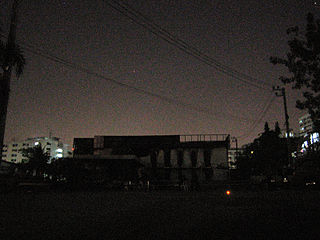
The Santika Club fire occurred on Thursday 1 January 2009, in the Santika Club nightclub in Ekkamai, Watthana, Bangkok, Thailand, where New Year celebrations were taking place. A total of 66 people were killed and another 222 injured when fire swept through the nightclub during the New Year's celebration as a band, coincidentally called "Burn", was playing. By another coincidence, the party was named "Santika's Last Night". The fire broke out at 00:35. and citizens of thirteen countries were among the injured.
Sixty-six people die in a nightclub fire in Bangkok, Thailand.

The Santika Club fire occurred on Thursday 1 January 2009, in the Santika Club nightclub in Ekkamai, Watthana, Bangkok, Thailand, where New Year celebrations were taking place. A total of 66 people were killed and another 222 injured when fire swept through the nightclub during the New Year's celebration as a band, coincidentally called "Burn", was playing. By another coincidence, the party was named "Santika's Last Night". The fire broke out at 00:35. and citizens of thirteen countries were among the injured.

Bangkok, officially known in Thai as Krung Thep Maha Nakhon and colloquially as Krung Thep, is the capital and most populous city of Thailand. The city occupies 1,568.7 square kilometres (605.7 sq mi) in the Chao Phraya River delta in central Thailand and has an estimated population of 10.539 million as of 2020, 15.3 percent of the country's population. Over 14 million people lived within the surrounding Bangkok Metropolitan Region at the 2010 census, making Bangkok an extreme primate city, dwarfing Thailand's other urban centres in both size and importance to the national economy.
Adam Air Flight 574 crashed into the sea off Polewali, Indonesia, killing all 102 people on board, when the pilots inadvertently disconnected the autopilot.

Adam Air Flight 574 was a scheduled domestic passenger flight operated by Adam Air between the Indonesian cities of Surabaya and Manado that crashed into the Makassar Strait near Polewali in Sulawesi on 1 January 2007. All 102 people on board died, making it the deadliest aviation accident involving a Boeing 737-400. A national investigation was launched into the disaster. The final report, released on 25 March 2008, concluded that the pilots lost control of the aircraft after they became preoccupied with troubleshooting the inertial navigation system and inadvertently disconnected the autopilot. Despite a series of safety incidents, which contributed to the shut down of Adam Air in June 2008, this was the only incident resulting in fatalities during the airline's 5-year existence.
Polewali is the capital of the Polewali Mandar Regency of West Sulawesi, Indonesia.

An autopilot is a system used to control the path of an aircraft, marine craft or spacecraft without requiring constant manual control by a human operator. Autopilots do not replace human operators. Instead, the autopilot assists the operator's control of the vehicle, allowing the operator to focus on broader aspects of operations.
Bulgaria and Romania join the EU.

Bulgaria, officially the Republic of Bulgaria, is a country in Southeast Europe. It is situated on the eastern flank of the Balkans, and is bordered by Romania to the north, Serbia and North Macedonia to the west, Greece and Turkey to the south, and the Black Sea to the east. Bulgaria covers a territory of 110,994 square kilometres (42,855 sq mi), and is the sixteenth-largest country in Europe. Sofia is the nation's capital and largest city; other major cities are Plovdiv, Varna and Burgas.

Romania is a country located at the crossroads of Central, Eastern, and Southeast Europe. It borders Bulgaria to the south, Ukraine to the north, Hungary to the west, Serbia to the southwest, Moldova to the east, and the Black Sea to the southeast. It has a predominantly temperate-continental climate, and an area of 238,397 km2 (92,046 sq mi), with a population of around 19 million. Romania is the twelfth-largest country in Europe and the sixth-most populous member state of the European Union. Its capital and largest city is Bucharest, followed by Iași, Cluj-Napoca, Timișoara, Constanța, Craiova, Brașov, and Galați.

On 1 January 2007, Bulgaria and Romania became member states of the European Union (EU) in the fifth wave of EU enlargement.
Adam Air Flight 574 breaks apart in mid-air and crashes near the Makassar Strait, Indonesia, killing all 102 people on board.

Adam Air Flight 574 was a scheduled domestic passenger flight operated by Adam Air between the Indonesian cities of Surabaya and Manado that crashed into the Makassar Strait near Polewali in Sulawesi on 1 January 2007. All 102 people on board died, making it the deadliest aviation accident involving a Boeing 737-400. A national investigation was launched into the disaster. The final report, released on 25 March 2008, concluded that the pilots lost control of the aircraft after they became preoccupied with troubleshooting the inertial navigation system and inadvertently disconnected the autopilot. Despite a series of safety incidents, which contributed to the shut down of Adam Air in June 2008, this was the only incident resulting in fatalities during the airline's 5-year existence.

Makassar Strait is a strait between the islands of Borneo and Sulawesi in Indonesia. To the north it joins the Celebes Sea, while to the south it meets the Java Sea. To the northeast, it forms the Sangkulirang Bay south of the Mangkalihat Peninsula. The strait is an important regional shipping route in Southeast Asia.

Indonesia, officially the Republic of Indonesia, is a country in Southeast Asia and Oceania between the Indian and Pacific oceans. It consists of over 17,000 islands, including Sumatra, Java, Sulawesi, and parts of Borneo and New Guinea. Indonesia is the world's largest archipelagic state and the 14th-largest country by area, at 1,904,569 square kilometres. With over 275 million people, Indonesia is the world's fourth-most populous country and the most populous Muslim-majority country. Java, the world's most populous island, is home to more than half of the country's population.
In a vote of confidence, General Pervez Musharraf wins 658 out of 1,170 votes in the Electoral College of Pakistan, and according to Article 41(8) of the Constitution of Pakistan, is "deemed to be elected" to the office of President until October 2007.
A motion of no confidence, also variously called a vote of no confidence, no-confidence motion, motion of confidence, or vote of confidence, is a statement or vote about whether a person in a position of responsibility like in government or management is still deemed fit to hold that position, such as because they are inadequate in some aspect, fail to carry out their obligations, or make decisions that other members feel to be detrimental. The parliamentary motion demonstrates to the head of government that the elected Parliament either has or no longer has confidence in one or more members of the appointed government. In some countries, a no-confidence motion being passed against an individual minister requires the minister to resign. In most cases, if the minister in question is the premier, all other ministers must also resign.

General Pervez Musharraf NI(M) HI(M) TBt is a former Pakistani politician and four-star general of the Pakistan Army who became the tenth president of Pakistan after the successful military takeover of the federal government in 1999. He also served as the 10th Chairman Joint Chiefs of Staff Committee from 1998 to 2001 and the 7th Chief of Army Staff from 1998 to 2007.
The President of Pakistan is chosen by an electoral college, in Pakistan. According to Article 41(3) of the Constitution of Pakistan, this electoral college consists of the Senate, the National Assembly of Pakistan, and the Provincial Assemblies of the four provinces. Members of the National Assembly and Provincial Assemblies are directly elected by the people in competitive multi-party elections. Members of the Senate are indirectly elected by the provincial assemblies, for a term of six years.
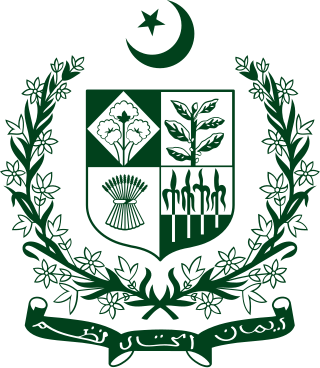
The Constitution of Pakistan, also known as the 1973 Constitution, is the supreme law of Pakistan. Drafted by the government of Zulfikar Ali Bhutto, with additional assistance from the country's opposition parties, it was approved by the Parliament on 10 April and ratified on 14 August 1973. The Constitution is intended to guide Pakistan's law, its political culture, and system. It identifies the state, people and their fundamental rights, state's constitutional law and orders, and also the constitutional structure and establishment of the institutions and the country's armed forces. The first three chapters establish the rules, mandate, and separate powers of the three branches of the government: a bicameral legislature; an executive branch governed by the Prime Minister as chief executive; and an apex federal judiciary headed by Supreme Court. The Constitution designates the President of Pakistan as a ceremonial Head of State who is to represent the unity of the state. The first six articles of the constitution outline the political system as federal parliamentary republic system; as well as Islam as its state religion. The Constitution also encapsulates provisions stipulating the legal system's compliance with Islamic injunctions contained in the Quran and Sunnah.

The president of Pakistan, officially the President of the Islamic Republic of Pakistan, is the ceremonial head of state of Pakistan and the commander-in-chief of the Pakistan Armed Forces.
Euro currency is introduced in 11 member nations of the European Union (with the exception of the United Kingdom, Denmark, Greece and Sweden; Greece adopts the euro two years later).

The euro is the official currency of 19 out of the 27 member states of the European Union (EU). This group of states is known as the eurozone or, officially, the euro area, and includes about 340 million citizens as of 2019. The euro is divided into 100 cents.

The European Union (EU) is a supranational political and economic union of 27 member states that are located primarily in Europe. The union has a total area of 4,233,255.3 km2 (1,634,469.0 sq mi) and an estimated total population of about 447 million. The EU has often been described as a sui generis political entity combining the characteristics of both a federation and a confederation.
Argentinian physicist Juan Maldacena published a landmark paper initiating the study of AdS/CFT correspondence, which links string theory and quantum gravity.
Juan Martín Maldacena is an Argentine theoretical physicist and the Carl P. Feinberg Professor in the School of Natural Sciences at the Institute for Advanced Study, Princeton. He has made significant contributions to the foundations of string theory and quantum gravity. His most famous discovery is the AdS/CFT correspondence, a realization of the holographic principle in string theory.
In theoretical physics, the anti-de Sitter/conformal field theory correspondence, sometimes called Maldacena duality or gauge/gravity duality, is a conjectured relationship between two kinds of physical theories. On one side are anti-de Sitter spaces (AdS) which are used in theories of quantum gravity, formulated in terms of string theory or M-theory. On the other side of the correspondence are conformal field theories (CFT) which are quantum field theories, including theories similar to the Yang–Mills theories that describe elementary particles.
In physics, string theory is a theoretical framework in which the point-like particles of particle physics are replaced by one-dimensional objects called strings. String theory describes how these strings propagate through space and interact with each other. On distance scales larger than the string scale, a string looks just like an ordinary particle, with its mass, charge, and other properties determined by the vibrational state of the string. In string theory, one of the many vibrational states of the string corresponds to the graviton, a quantum mechanical particle that carries the gravitational force. Thus, string theory is a theory of quantum gravity.
Quantum gravity (QG) is a field of theoretical physics that seeks to describe gravity according to the principles of quantum mechanics; it deals with environments in which neither gravitational nor quantum effects can be ignored, such as in the vicinity of black holes or similar compact astrophysical objects, such as neutron stars.
Following a currency reform, Russia begins to circulate new rubles to stem inflation and promote confidence.
The monetary reform of 1998 in Russia was launched on January 1, 1998. Preparation started in August 1997. Replacement of the old banknotes occurred gradually, until 2002.

The ruble or rouble is the currency of the Russian Federation. The ruble is subdivided into 100 kopecks. The first Russian ruble replaced the Soviet ruble in September 1993 at par. In 1998, preceding the financial crisis, the current ruble was redenominated with the new code "RUB" and was exchanged at the rate of 1 RUB = 1,000 RUR.

In economics, inflation refers to a general increase in the prices of goods and services in an economy. When the general price level rises, each unit of currency buys fewer goods and services; consequently, inflation corresponds to a reduction in the purchasing power of money. The opposite of inflation is deflation, a sustained decrease in the general price level of goods and services. The common measure of inflation is the inflation rate, the annualized percentage change in a general price index. As prices do not all increase at the same rate, the consumer price index (CPI) is often used for this purpose. The employment cost index is also used for wages in the United States.
Argentinian physicist Juan Maldacena published a landmark paper initiating the study of AdS/CFT correspondence, which links string theory and quantum gravity.
Juan Martín Maldacena is an Argentine theoretical physicist and the Carl P. Feinberg Professor in the School of Natural Sciences at the Institute for Advanced Study, Princeton. He has made significant contributions to the foundations of string theory and quantum gravity. His most famous discovery is the AdS/CFT correspondence, a realization of the holographic principle in string theory.
In theoretical physics, the anti-de Sitter/conformal field theory correspondence, sometimes called Maldacena duality or gauge/gravity duality, is a conjectured relationship between two kinds of physical theories. On one side are anti-de Sitter spaces (AdS) which are used in theories of quantum gravity, formulated in terms of string theory or M-theory. On the other side of the correspondence are conformal field theories (CFT) which are quantum field theories, including theories similar to the Yang–Mills theories that describe elementary particles.
In physics, string theory is a theoretical framework in which the point-like particles of particle physics are replaced by one-dimensional objects called strings. String theory describes how these strings propagate through space and interact with each other. On distance scales larger than the string scale, a string looks just like an ordinary particle, with its mass, charge, and other properties determined by the vibrational state of the string. In string theory, one of the many vibrational states of the string corresponds to the graviton, a quantum mechanical particle that carries the gravitational force. Thus, string theory is a theory of quantum gravity.
Quantum gravity (QG) is a field of theoretical physics that seeks to describe gravity according to the principles of quantum mechanics; it deals with environments in which neither gravitational nor quantum effects can be ignored, such as in the vicinity of black holes or similar compact astrophysical objects, such as neutron stars.
The World Trade Organization comes into being.

The World Trade Organization (WTO) is an intergovernmental organization that regulates and facilitates international trade. With effective cooperation in the United Nations System, governments use the organization to establish, revise, and enforce the rules that govern international trade. It officially commenced operations on 1 January 1995, pursuant to the 1994 Marrakesh Agreement, thus replacing the General Agreement on Tariffs and Trade (GATT) that had been established in 1948. The WTO is the world's largest international economic organization, with 164 member states representing over 98% of global trade and global GDP.
The Draupner wave in the North Sea in Norway is detected, confirming the existence of freak waves.

Rogue waves are unusually large, unpredictable, and suddenly appearing surface waves that can be extremely dangerous to ships, even to large ones. They are distinct from tsunamis, which are often almost unnoticeable in deep waters and are caused by the displacement of water due to other phenomena. A rogue wave appearing at the shore is sometimes referred to as a sneaker wave.

The North Sea lies between Great Britain, Norway, Denmark, Germany, the Netherlands and Belgium. An epeiric sea on the European continental shelf, it connects to the Atlantic Ocean through the English Channel in the south and the Norwegian Sea in the north. It is more than 970 kilometres (600 mi) long and 580 kilometres (360 mi) wide, covering 570,000 square kilometres (220,000 sq mi).

Norway, officially the Kingdom of Norway, is a Nordic country in Northern Europe, the mainland territory of which comprises the western and northernmost portion of the Scandinavian Peninsula. The remote Arctic island of Jan Mayen and the archipelago of Svalbard also form part of Norway. Bouvet Island, located in the Subantarctic, is a dependency of Norway; it also lays claims to the Antarctic territories of Peter I Island and Queen Maud Land. The capital and largest city in Norway is Oslo.
Austria, Finland and Sweden join the EU.

The Republic of Austria, commonly just Austria, is a country in the southern part of Central Europe, lying in the Eastern Alps. It is a federation of nine states, one of which is the capital, Vienna, the most populous city and state. A landlocked country, Austria is bordered by Germany to the northwest, the Czech Republic to the north, Slovakia to the northeast, Hungary to the east, Slovenia and Italy to the south, and Switzerland and Liechtenstein to the west. The country occupies an area of 83,871 km2 (32,383 sq mi) and has a population of 9 million.

Finland, officially the Republic of Finland, is a Nordic country in Northern Europe. It shares land borders with Sweden to the northwest, Norway to the north, and Russia to the east, with the Gulf of Bothnia to the west and the Gulf of Finland across Estonia to the south. Finland covers an area of 338,455 square kilometres (130,678 sq mi) with a population of 5.6 million. Helsinki is the capital and largest city, forming a larger metropolitan area with the neighbouring cities of Espoo, Kauniainen, and Vantaa. The vast majority of the population are ethnic Finns. Finnish, alongside Swedish, are the official languages. Swedish is the native language of 5.2% of the population. Finland's climate varies from humid continental in the south to the boreal in the north. The land cover is primarily a boreal forest biome, with more than 180,000 recorded lakes.

Sweden, formally the Kingdom of Sweden, is a Nordic country in Scandinavia. It borders Norway to the west and north, Finland to the east, and is connected to Denmark in the southwest by a bridge–tunnel across the Öresund. At 450,295 square kilometres (173,860 sq mi), Sweden is the largest Nordic country, the third-largest country in the European Union, and the fifth-largest country in Europe. The capital and largest city is Stockholm. Sweden has a total population of 10.5 million, and a low population density of 25.5 inhabitants per square kilometre (66/sq mi), with around 87% of Swedes residing in urban areas in the central and southern half of the country.

The 1995 enlargement of the European Union saw Austria, Finland, and Sweden accede to the European Union (EU). This was the EU's fourth enlargement and came into effect on 1 January of that year. All these states were previous members of the European Free Trade Association (EFTA) and had traditionally been less interested in joining the EU than other European countries. Norway had negotiated to join alongside the other three but following the signing of the treaty, membership was turned down by the Norwegian electorate in the 1994 national referendum. Switzerland also applied for membership on 26 May 1992, but withdrew it after a negative referendum result on 6 December 1992.
The Zapatista Army of National Liberation initiates twelve days of armed conflict in the Mexican state of Chiapas.
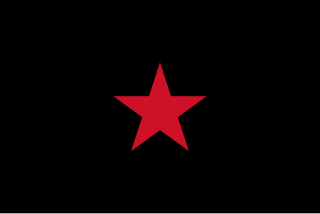
The Zapatista Army of National Liberation, often referred to as the Zapatistas, is a far-left political and militant group that controls a substantial amount of territory in Chiapas, the southernmost state of Mexico.

Chiapas, officially the Free and Sovereign State of Chiapas, is one of the states that make up the 32 federal entities of Mexico. It comprises 124 municipalities as of September 2017 and its capital and largest city is Tuxtla Gutiérrez. Other important population centers in Chiapas include Ocosingo, Tapachula, San Cristóbal de las Casas, Comitán, and Arriaga. Chiapas is the southernmost state in Mexico, and it borders the states of Oaxaca to the west, Veracruz to the northwest, and Tabasco to the north, and the Petén, Quiché, Huehuetenango, and San Marcos departments of Guatemala to the east and southeast. Chiapas has a significant coastline on the Pacific Ocean to the southwest.
The North American Free Trade Agreement (NAFTA) comes into effect.

The North American Free Trade Agreement was an agreement signed by Canada, Mexico, and the United States that created a trilateral trade bloc in North America. The agreement came into force on January 1, 1994, and superseded the 1988 Canada–United States Free Trade Agreement between the United States and Canada. The NAFTA trade bloc formed one of the largest trade blocs in the world by gross domestic product.
Dissolution of Czechoslovakia: Czechoslovakia is divided into the Czech Republic and Slovak Republic.
The dissolution of Czechoslovakia took effect on December 31, 1992, and was the self-determined split of the federal republic of Czechoslovakia into the independent countries of the Czech Republic and Slovakia. Both mirrored the Czech Socialist Republic and the Slovak Socialist Republic, which had been created in 1969 as the constituent states of the Czechoslovak Federal Republic.

Czechoslovakia was a sovereign state in Central Europe, created in 1918, when it declared its independence from Austria-Hungary. In 1938, after the Munich Agreement, the Sudetenland became part of Germany, while the country lost further territories to Hungary and Poland. Between 1939 and 1945 the state ceased to exist, as Slovakia proclaimed its independence and the remaining territories in the east became part of Hungary, while in the remainder of the Czech Lands the German Protectorate of Bohemia and Moravia was proclaimed. In 1939, after the outbreak of World War II, former Czechoslovak President Edvard Beneš formed a government-in-exile and sought recognition from the Allies.

The Czech Republic, also known as Czechia, is a landlocked country in Central Europe. Historically known as Bohemia, it is bordered by Austria to the south, Germany to the west, Poland to the northeast, and Slovakia to the southeast. The Czech Republic has a hilly landscape that covers an area of 78,871 square kilometers (30,452 sq mi) with a mostly temperate continental and oceanic climate. The capital and largest city is Prague; other major cities and urban areas include Brno, Ostrava, Plzeň and Liberec.
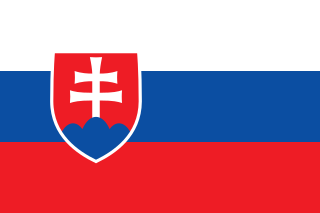
Slovakia, officially the Slovak Republic, is a landlocked country in Central Europe. It is bordered by Poland to the north, Ukraine to the east, Hungary to the south, Austria to the southwest, and the Czech Republic to the northwest. Slovakia's mostly mountainous territory spans about 49,000 square kilometres (19,000 sq mi), with a population of over 5.4 million. The capital and largest city is Bratislava, while the second largest city is Košice.
David Dinkins is sworn in as New York City's first black mayor.
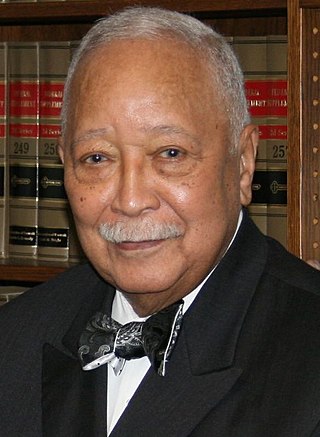
David Norman Dinkins was an American politician, lawyer, and author who served as the 106th mayor of New York City from 1990 to 1993, becoming the first African American to hold the office.
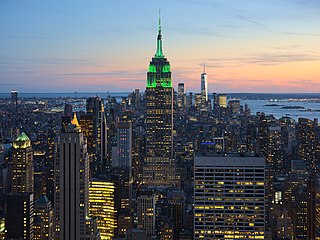
New York, often called New York City or the acronym NYC, is the most populous city in the United States. With a 2020 population of 8,804,190 distributed over 300.46 square miles (778.2 km2), New York City is also the most densely populated major city in the United States, and is more than twice as populous as second-place Los Angeles. New York City lies at the southern tip of New York State, and constitutes the geographical and demographic center of both the Northeast megalopolis and the New York metropolitan area, the largest metropolitan area in the world by urban landmass. With over 20.1 million people in its metropolitan statistical area and 23.5 million in its combined statistical area as of 2020, New York is one of the world's most populous megacities, and over 58 million people live within 250 mi (400 km) of the city. New York City is a global cultural, financial, and media center with a significant influence on commerce, health care and life sciences, entertainment, research, technology, education, politics, tourism, dining, art, fashion, and sports. New York is the most photographed city in the world. Home to the headquarters of the United Nations, New York is an important center for international diplomacy, an established safe haven for global investors, and is sometimes described as the capital of the world.

The mayor of New York City, officially Mayor of the City of New York, is head of the executive branch of the government of New York City and the chief executive of New York City. The mayor's office administers all city services, public property, police and fire protection, most public agencies, and enforces all city and state laws within New York City.
The Montreal Protocol comes into force, stopping the use of chemicals contributing to ozone depletion.

The Montreal Protocol is an international treaty designed to protect the ozone layer by phasing out the production of numerous substances that are responsible for ozone depletion. It was agreed on 16 September 1987, and entered into force on 1 January 1989. Since then, it has undergone nine revisions, in 1990 (London), 1991 (Nairobi), 1992 (Copenhagen), 1993 (Bangkok), 1995 (Vienna), 1997 (Montreal), 1998 (Australia), 1999 (Beijing) and 2016 (Kigali) As a result of the international agreement, the ozone hole in Antarctica is slowly recovering. Climate projections indicate that the ozone layer will return to 1980 levels between 2050 and 2070. Due to its widespread adoption and implementation, it has been hailed as an example of successful international co-operation. Former UN Secretary-General Kofi Annan stated that "perhaps the single most successful international agreement to date has been the Montreal Protocol". In comparison, effective burden-sharing and solution proposals mitigating regional conflicts of interest have been among the success factors for the ozone depletion challenge, where global regulation based on the Kyoto Protocol has failed to do so. In this case of the ozone depletion challenge, there was global regulation already being installed before a scientific consensus was established. Also, overall public opinion was convinced of possible imminent risks.

Ozone depletion consists of two related events observed since the late 1970s: a steady lowering of about four percent in the total amount of ozone in Earth's atmosphere, and a much larger springtime decrease in stratospheric ozone around Earth's polar regions. The latter phenomenon is referred to as the ozone hole. There are also springtime polar tropospheric ozone depletion events in addition to these stratospheric events.
The Evangelical Lutheran Church in America comes into existence, creating the largest Lutheran denomination in the United States.
The Evangelical Lutheran Church in America (ELCA) is a mainline Protestant Lutheran church headquartered in Chicago, Illinois. The ELCA was officially formed on January 1, 1988, by the merging of three Lutheran church bodies. As of 2021, it has approximately 3.04 million baptized members in 8,724 congregations.

Lutheranism is one of the largest branches of Protestantism, identifying primarily with the theology of Martin Luther, the 16th-century German monk and reformer whose efforts to reform the theology and practice of the Catholic Church launched the Protestant Reformation. The reaction of the government and church authorities to the international spread of his writings, beginning with the Ninety-five Theses, divided Western Christianity. During the Reformation, Lutheranism became the state religion of numerous states of northern Europe, especially in northern Germany, Scandinavia and the then Livonian Order. Lutheran clergy became civil servants and the Lutheran churches became part of the state.

A religious denomination is a subgroup within a religion that operates under a common name and tradition among other activities. The term refers to the various Christian denominations. It is also used to describe the five major branches of Judaism. Within Islam, it can refer to the branches or sects, as well as their various subdivisions such as sub-sects, schools of jurisprudence, schools of theology and religious movements.
The Isleta Pueblo tribe elect Verna Williamson to be their first female governor.

Pueblo of Isleta is an unincorporated community and Tanoan pueblo in Bernalillo County, New Mexico, United States, originally established in the c. 14th century. The Southern Tiwa name of the pueblo is Shiewhibak (Shee-eh-whíb-bak) meaning "a knife laid on the ground to play whib", a traditional footrace. Its people are a federally recognized tribe.
The first British mobile phone call is made by Michael Harrison to his father Sir Ernest Harrison, chairman of Vodafone.

A mobile phone, cellular phone, cell phone, cellphone, handphone, hand phone or pocket phone, sometimes shortened to simply mobile, cell, or just phone, is a portable telephone that can make and receive calls over a radio frequency link while the user is moving within a telephone service area. The radio frequency link establishes a connection to the switching systems of a mobile phone operator, which provides access to the public switched telephone network (PSTN). Modern mobile telephone services use a cellular network architecture and, therefore, mobile telephones are called cellular telephones or cell phones in North America. In addition to telephony, digital mobile phones (2G) support a variety of other services, such as text messaging, MMS, email, Internet access, short-range wireless communications, business applications, video games and digital photography. Mobile phones offering only those capabilities are known as feature phones; mobile phones which offer greatly advanced computing capabilities are referred to as smartphones.
Sir Ernest Thomas Harrison was an English businessman, best known as chairman of electronics company Racal and the first chairman of its spun-out mobile telephony division, Vodafone.

Vodafone Group plc is a British multinational telecommunications company. Its registered office and global headquarters are in Newbury, Berkshire, England. It predominantly operates services in Asia, Africa, Europe, and Oceania.
The original American Telephone & Telegraph Company is divested of its 22 Bell System companies as a result of the settlement of the 1974 United States Department of Justice antitrust suit against AT&T.
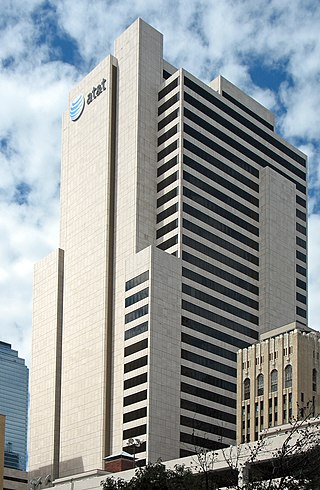
AT&T Corporation, originally the American Telephone and Telegraph Company, is the subsidiary of AT&T Inc. that provides voice, video, data, and Internet telecommunications and professional services to businesses, consumers, and government agencies.

The Bell System was a system of telecommunication companies, led by the Bell Telephone Company and later by the American Telephone and Telegraph Company (AT&T), that dominated the telephone services industry in North America for over one hundred years from its creation in 1877 until its antitrust breakup in 1983. The system of companies was often colloquially called Ma Bell, as it held a vertical monopoly over telecommunication products and services in most areas of the United States and Canada. At the time of the breakup of the Bell System in the early 1980s, it had assets of $150 billion and employed over one million people.

The United States Department of Justice (DOJ), also known as the Justice Department, is a federal executive department of the United States government tasked with the enforcement of federal law and administration of justice in the United States. It is equivalent to the justice or interior ministries of other countries. The department is headed by the U.S. attorney general, who reports directly to the president of the United States and is a member of the president's Cabinet. The current attorney general is Merrick Garland, who was sworn in on March 11, 2021.
Competition law is the field of law that promotes or seeks to maintain market competition by regulating anti-competitive conduct by companies. Competition law is implemented through public and private enforcement. It is also known as antitrust law, trust busting, anti-monopoly law, and trade practices law.

The breakup of the Bell System was mandated on January 8, 1982, by an agreed consent decree providing that AT&T Corporation would, as had been initially proposed by AT&T, relinquish control of the Bell Operating Companies, which had provided local telephone service in the United States. This effectively took the monopoly that was the Bell System and split it into entirely separate companies that would continue to provide telephone service. AT&T would continue to be a provider of long-distance service, while the now-independent Regional Bell Operating Companies (RBOCs), nicknamed the "Baby Bells", would provide local service, and would no longer be directly supplied with equipment from AT&T subsidiary Western Electric.
Brunei becomes independent of the United Kingdom.

Brunei, formally Brunei Darussalam, is a country located on the north coast of the island of Borneo in Southeast Asia. Apart from its South China Sea coast, it is completely surrounded by the Malaysian state of Sarawak. It is separated into two parts by the Sarawak district of Limbang. Brunei is the only sovereign state entirely on Borneo; the remainder of the island is divided between Malaysia and Indonesia. As of 2020, its population was 460,345, of whom about 100,000 live in the capital and largest city, Bandar Seri Begawan. The government is an absolute monarchy ruled by its Sultan, entitled the Yang di-Pertuan, and implements a combination of English common law and sharia law, as well as general Islamic practices.
The ARPANET officially changes to using TCP/IP, the Internet Protocol, effectively creating the Internet.

The Advanced Research Projects Agency Network (ARPANET) was the first wide-area packet-switched network with distributed control and one of the first networks to implement the TCP/IP protocol suite. Both technologies became the technical foundation of the Internet. The ARPANET was established by the Advanced Research Projects Agency (ARPA) of the United States Department of Defense.
The Internet Protocol (IP) is the network layer communications protocol in the Internet protocol suite for relaying datagrams across network boundaries. Its routing function enables internetworking, and essentially establishes the Internet.

The Internet is the global system of interconnected computer networks that uses the Internet protocol suite (TCP/IP) to communicate between networks and devices. It is a network of networks that consists of private, public, academic, business, and government networks of local to global scope, linked by a broad array of electronic, wireless, and optical networking technologies. The Internet carries a vast range of information resources and services, such as the inter-linked hypertext documents and applications of the World Wide Web (WWW), electronic mail, telephony, and file sharing.
Peruvian Javier Pérez de Cuéllar becomes the first Latin American to hold the title of Secretary-General of the United Nations.

Peru, officially the Republic of Peru, is a country in western South America. It is bordered in the north by Ecuador and Colombia, in the east by Brazil, in the southeast by Bolivia, in the south by Chile, and in the south and west by the Pacific Ocean. Peru is a megadiverse country with habitats ranging from the arid plains of the Pacific coastal region in the west to the peaks of the Andes mountains extending from the north to the southeast of the country to the tropical Amazon basin rainforest in the east with the Amazon River. Peru has a population of 32 million, and its capital and largest city is Lima. At 1.28 million km2, Peru is the 19th largest country in the world, and the third largest in South America.

Javier Felipe Ricardo Pérez de Cuéllar de la Guerra was a Peruvian diplomat and politician who served as the fifth Secretary-General of the United Nations from 1982 to 1991. He later served as Prime Minister of Peru from 2000 to 2001.

Latin America, also spelled LatAm is a large cultural region in the Americas where Romance languages — languages derived from Latin — are predominantly spoken. The term was coined in the nineteenth century, to refer to regions in the Americas that were ruled by the Spanish, Portuguese and French empires. The term does not have a precise definition, but it is "commonly used to describe South America, Central America, Mexico, and the islands of the Caribbean." In a narrow sense, it refers to Spanish America plus Brazil, . The term "Latin America" is broader than categories such as Hispanic America, which specifically refers to Spanish-speaking countries; and Ibero-America, which specifically refers to both Spanish and Portuguese-speaking countries while leaving French and British excolonies aside.

The secretary-general of the United Nations is the chief administrative officer of the United Nations and head of the United Nations Secretariat, one of the six principal organs of the United Nations.
Greece is admitted into the European Community.
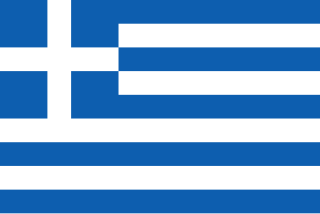
Greece, officially the Hellenic Republic, is a country in Southeast Europe. It is situated on the southern tip of the Balkans, and is located at the crossroads of Europe, Asia, and Africa. Greece shares land borders with Albania to the northwest, North Macedonia and Bulgaria to the north, and Turkey to the northeast. The Aegean Sea lies to the east of the mainland, the Ionian Sea to the west, and the Sea of Crete and the Mediterranean Sea to the south. Greece has the longest coastline on the Mediterranean Basin, featuring thousands of islands. The country consists of nine traditional geographic regions, and has a population of approximately 10.4 million. Athens is the nation's capital and largest city, followed by Thessaloniki and Patras.
Normal diplomatic relations are established between the People's Republic of China and the United States.

The relationship between the People's Republic of China (PRC) and the United States of America (USA) has been complex since 1949 with mutual distrust leading to complications. The relationship is one of close economic ties, as well as hegemonic rivalry in the Asia-Pacific. It has been described by world leaders and academics as the world's most important bilateral relationship of the 21st century.

China, officially the People's Republic of China (PRC), is a country in East Asia. It is the world's most populous country, with a population exceeding 1.4 billion, slightly ahead of India. China spans the equivalent of five time zones and borders fourteen countries by land, the most of any country in the world, tied with Russia. China also has a narrow maritime boundary with the disputed Taiwan. Covering an area of approximately 9.6 million square kilometers (3,700,000 sq mi), it is the world's third largest country by total land area. The country consists of 22 provinces, five autonomous regions, four municipalities, and two Special Administrative Regions. The national capital is Beijing, and the most populous city and financial center is Shanghai.
Air India Flight 855, a Boeing 747, crashes into the Arabian Sea off the coast of Bombay, India, due to instrument failure, spatial disorientation, and pilot error, killing all 213 people on board.

Air India Flight 855 was a scheduled passenger flight from Santa Cruz Airport, Bombay to Dubai International Airport, Dubai. On New Years Day in 1978, the Boeing 747 operating the flight crashed about 3 km off the coast of Bandra, Bombay. All 213 passengers and crew on board were killed. An investigation into the crash determined the most likely probable cause was the captain becoming spatially disoriented after the failure of one of the flight instruments in the cockpit. It was Air India's deadliest aircraft crash until the bombing of Flight 182 in 1985. It was also the deadliest aviation accident in India until the Charkhi Dadri mid-air collision in 1996. As of 2022, Flight 855 is still the second deadliest aircraft crash in both of these categories.

The Boeing 747 is a large, long-range wide-body airliner designed and manufactured by Boeing Commercial Airplanes in the United States. After introducing the 707 in October 1958, Pan Am wanted a jet 2+1⁄2 times its size, to reduce its seat cost by 30% to democratize air travel. In 1965, Joe Sutter left the 737 development program to design the 747, the first twin-aisle airliner. In April 1966, Pan Am ordered 25 Boeing 747-100 aircraft and in late 1966, Pratt & Whitney agreed to develop its JT9D engine, a high-bypass turbofan. On September 30, 1968, the first 747 was rolled out of the custom-built Everett Plant, the world's largest building by volume. The first flight took place on February 9, 1969, and the 747 was certified in December of that year. It entered service with Pan Am on January 22, 1970. The 747 was the first airplane dubbed "Jumbo Jet", the first wide-body airliner.
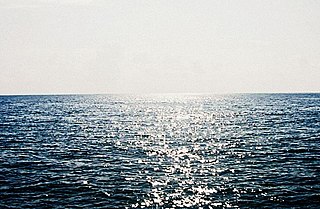
The Arabian Sea is a region of the northern Indian Ocean bounded on the north by Pakistan, Iran and the Gulf of Oman, on the west by the Gulf of Aden, Guardafui Channel and the Arabian Peninsula, on the southeast by the Laccadive Sea and the Maldives, on the southwest by Somalia, and on the east by India. Its total area is 3,862,000 km2 (1,491,000 sq mi) and its maximum depth is 4,652 meters (15,262 ft). The Gulf of Aden in the west connects the Arabian Sea to the Red Sea through the strait of Bab-el-Mandeb, and the Gulf of Oman is in the northwest, connecting it to the Persian Gulf.

Mumbai is the capital city of the Indian state of Maharashtra and the de facto financial centre of India. According to the United Nations, as of 2018, Mumbai is the second-most populous city in India after Delhi and the eighth-most populous city in the world with a population of roughly 20 million ). As per the Indian government population census of 2011, Mumbai was the most populous city in India with an estimated city proper population of 12.5 million (1.25 crore) living under the Brihanmumbai Municipal Corporation. Mumbai is the centre of the Mumbai Metropolitan Region, the sixth most populous metropolitan area in the world with a population of over 23 million. Mumbai lies on the Konkan coast on the west coast of India and has a deep natural harbour. In 2008, Mumbai was named an alpha world city. It has the highest number of millionaires and billionaires among all cities in India.
Spatial disorientation results in a person being unable to determine their position or relative motion, commonly occurring during periods of challenging visibility, since vision is the dominant sense for orientation. The auditory system, vestibular system, and proprioceptive system collectively work to coordinate movement with balance, and can also create illusory nonvisual sensations, resulting in spatial disorientation in the absence of strong visual cues.
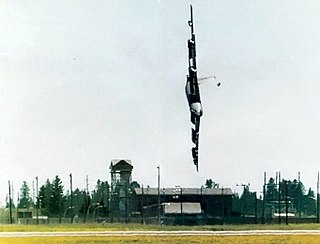
Pilot error generally refers to an accident in which an action or decision made by the pilot was the cause or a contributing factor that led to the accident, but also includes the pilot's failure to make a correct decision or take proper action. Errors are intentional actions that fail to achieve their intended outcomes. Chicago Convention defines accident as "An occurrence associated with the operation of an aircraft [...] in which [...] a person is fatally or seriously injured [...] except when the injuries are [...] inflicted by other persons." Hence the definition of the "pilot error" does not include deliberate crash.
A bomb explodes on board Middle East Airlines Flight 438 over Qaisumah, Saudi Arabia, killing all 81 people on board.

Middle East Airlines Flight 438 was an international passenger flight operated by a Boeing 720 from Beirut, Lebanon, to Muscat, Oman, with a stopover in Abu Dhabi, United Arab Emirates. On 1 January 1976 the aircraft operating the flight was destroyed by a bomb, killing all 81 people on board. The bombers were never identified.

Qaisumah or Al Qaysumah is a village belonging to the city of Hafar al-Batin, in Eastern Province, Saudi Arabia. It is located at around 28°18′35″N 46°7′39″E.

Saudi Arabia, officially the Kingdom of Saudi Arabia (KSA), is a country in Western Asia. It covers the bulk of the Arabian Peninsula, and has a land area of about 2,150,000 km2 (830,000 sq mi), making it the fifth-largest country in Asia, the second-largest in the Arab world, and the largest in Western Asia and the Middle East. It is bordered by the Red Sea to the west; Jordan, Iraq, and Kuwait to the north; the Persian Gulf, Qatar and the United Arab Emirates to the east; Oman to the southeast; and Yemen to the south. Bahrain is an island country off the east coast. The Gulf of Aqaba in the northwest separates Saudi Arabia from Egypt. Saudi Arabia is the only country with a coastline along both the Red Sea and the Persian Gulf, and most of its terrain consists of arid desert, lowland, steppe, and mountains. Its capital and largest city is Riyadh. The country is home to Mecca and Medina, the two holiest cities in Islam.
Denmark, Ireland and the United Kingdom are admitted into the European Economic Community.

Denmark is a Nordic country in Northern Europe. It is the most populous and politically central constituent of the Kingdom of Denmark, a constitutionally unitary state that includes the autonomous territories of the Faroe Islands and Greenland in the North Atlantic Ocean. European Denmark is the southernmost of the Scandinavian countries, lying southwest of Sweden, south of Norway, and north of Germany.

Ireland, also known as the Republic of Ireland, is a country in north-western Europe consisting of 26 of the 32 counties of the island of Ireland. The capital and largest city is Dublin, on the eastern side of the island. Around 2.1 million of the country's population of 5.13 million people resides in the Greater Dublin Area. The sovereign state shares its only land border with Northern Ireland, which is part of the United Kingdom. It is otherwise surrounded by the Atlantic Ocean, with the Celtic Sea to the south, St George's Channel to the south-east, and the Irish Sea to the east. It is a unitary, parliamentary republic. The legislature, the Oireachtas, consists of a lower house, Dáil Éireann; an upper house, Seanad Éireann; and an elected President who serves as the largely ceremonial head of state, but with some important powers and duties. The head of government is the Taoiseach, who is elected by the Dáil and appointed by the President; the Taoiseach in turn appoints other government ministers.

The United Kingdom of Great Britain and Northern Ireland, commonly known as the United Kingdom (UK) or Britain, is a country in Europe, off the north-western coast of the continental mainland. It comprises England, Scotland, Wales and Northern Ireland. The United Kingdom includes the island of Great Britain, the north-eastern part of the island of Ireland, and many smaller islands within the British Isles. Northern Ireland shares a land border with the Republic of Ireland; otherwise, the United Kingdom is surrounded by the Atlantic Ocean, the North Sea, the English Channel, the Celtic Sea and the Irish Sea. The total area of the United Kingdom is 242,495 square kilometres (93,628 sq mi), with an estimated 2020 population of more than 67 million people.

The European Economic Community (EEC) was a regional organization created by the Treaty of Rome of 1957, aiming to foster economic integration among its member states. It was subsequently renamed the European Community (EC) upon becoming integrated into the first pillar of the newly formed European Union in 1993. In the popular language, however, the singular European Community was sometimes inaccuratelly used in the wider sense of the plural European Communities, in spite of the latter designation covering all the three constituent entities of the first pillar.
Cigarette advertisements are banned on American television.

A cigarette is a narrow cylinder containing a combustible material, typically tobacco, that is rolled into thin paper for smoking. The cigarette is ignited at one end, causing it to smolder; the resulting smoke is orally inhaled via the opposite end. Cigarette smoking is the most common method of tobacco consumption. The term cigarette, as commonly used, refers to a tobacco cigarette, but the word is sometimes used to refer to other substances, such as a cannabis cigarette or an herbal cigarette. A cigarette is distinguished from a cigar by its usually smaller size, use of processed leaf, and paper wrapping, which is typically white.

Nicotine marketing is the marketing of nicotine-containing products or use. Traditionally, the tobacco industry markets cigarette smoking, but it is increasingly marketing other products, such as electronic cigarettes and heated tobacco products. Products are marketed through social media, stealth marketing, mass media, and sponsorship. Expenditures on nicotine marketing are in the tens of billions a year; in the US alone, spending was over US$1 million per hour in 2016; in 2003, per-capita marketing spending was $290 per adult smoker, or $45 per inhabitant. Nicotine marketing is increasingly regulated; some forms of nicotine advertising are banned in many countries. The World Health Organization recommends a complete tobacco advertising ban.

Television is one of the major mass media outlets in the United States. As of 2011, household ownership of television sets in the country is 96.7%, with approximately 114,200,000 American households owning at least one television set as of August 2013. The majority of households have more than one set. The peak ownership percentage of households with at least one television set occurred during the 1996–97 season, with 98.4% ownership. In 1948, 1 percent of U.S. households owned at least one television while 75 percent did by 1955, and by 1992, 60 percent of all U.S. households received cable television subscriptions.
The defined beginning of Unix time, at 00:00:00.

Unix time is a date and time representation widely used in computing. It measures time by the number of seconds that have elapsed since 00:00:00 UTC on 1 January 1970, the beginning of the Unix epoch.
The People's Democratic Party of Afghanistan, which later helped the country become a republic, was founded.
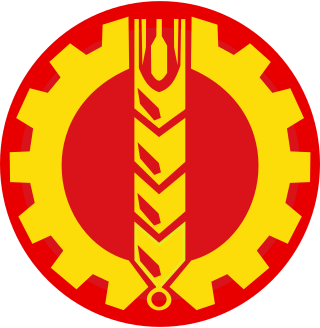
The People's Democratic Party of Afghanistan (PDPA) was a Marxist–Leninist political party in Afghanistan established on 1 January 1965. Four members of the party won seats in the 1965 Afghan parliamentary election, reduced to two seats in 1969, albeit both before parties were fully legal. For most of its existence, the party was split between the hardline Khalq and moderate Parcham factions, each of which claimed to represent the "true" PDPA.
The Republic of Afghanistan may refer to:Republic of Afghanistan (1973–1978) Democratic Republic of Afghanistan (1978–1992), known as the Republic of Afghanistan from 1987 to 1992 Islamic Republic of Afghanistan (2004–2021)
The People's Democratic Party of Afghanistan is founded in Kabul, Afghanistan.

The People's Democratic Party of Afghanistan (PDPA) was a Marxist–Leninist political party in Afghanistan established on 1 January 1965. Four members of the party won seats in the 1965 Afghan parliamentary election, reduced to two seats in 1969, albeit both before parties were fully legal. For most of its existence, the party was split between the hardline Khalq and moderate Parcham factions, each of which claimed to represent the "true" PDPA.
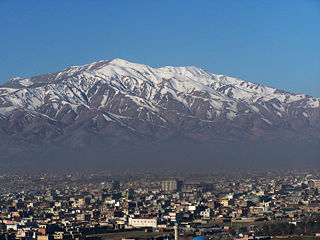
Kabul is the capital and largest city of Afghanistan. Located in the eastern half of the country, it is also a municipality, forming part of the Kabul Province; it is administratively divided into 22 municipal districts. According to 2021 estimates, the population of Kabul was 4.6 million. In contemporary times, the city has served as Afghanistan's political, cultural, and economical centre, and rapid urbanisation has made Kabul the 75th-largest city in the world and the country's primate city.
The Federation of Rhodesia and Nyasaland is divided into the independent republics of Zambia and Malawi, and the British-controlled Rhodesia.

The Federation of Rhodesia and Nyasaland, also known as the Central African Federation or CAF, was a colonial federation that consisted of three southern African territories: the self-governing British colony of Southern Rhodesia and the British protectorates of Northern Rhodesia and Nyasaland. It existed between 1953 and 1963.

Zambia, officially the Republic of Zambia, is a landlocked country at the crossroads of Central, Southern and East Africa, although it is typically referred to as being in Southern Africa at its most central point. Its neighbours are the Democratic Republic of the Congo to the north, Tanzania to the northeast, Malawi to the east, Mozambique to the southeast, Zimbabwe and Botswana to the south, Namibia to the southwest, and Angola to the west. The capital city of Zambia is Lusaka, located in the south-central part of Zambia. The nation's population of around 19.5 million is concentrated mainly around Lusaka in the south and the Copperbelt Province to the north, the core economic hubs of the country.

Malawi, officially the Republic of Malawi, is a landlocked country in Southeastern Africa that was formerly known as Nyasaland. It is bordered by Zambia to the west, Tanzania to the north and northeast, and Mozambique to the east, south and southwest. Malawi spans over 118,484 km2 (45,747 sq mi) and has an estimated population of 19,431,566. Malawi's capital is Lilongwe. Its second-largest is Blantyre, its third-largest is Mzuzu and its fourth-largest is its former capital, Zomba. The name Malawi comes from the Maravi, an old name for the Chewa people who inhabit the area. The country is nicknamed "The Warm Heart of Africa" because of the friendliness of its people.
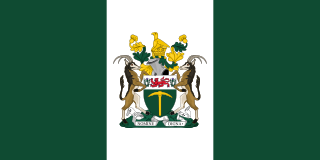
Rhodesia, officially from 1970 the Republic of Rhodesia, was a state in Southern Africa from 1965 to 1979, equivalent in territory to modern Zimbabwe. Rhodesia was the de facto successor state to the British colony of Southern Rhodesia, which had been self-governing since achieving responsible government in 1923. A landlocked nation, Rhodesia was bordered by South Africa to the south, Bechuanaland to the southwest, Zambia to the northwest, and Mozambique to the east. From 1965 to 1979, Rhodesia was one of two independent states on the African continent governed by a white minority of European descent and culture, the other being South Africa.
Western Samoa achieves independence from New Zealand; its name is changed to the Independent State of Western Samoa.

Western Samoa Mandate, then Western Samoa Trust Territory, officially Territory of Western Samoa was the name of Western Samoa during its civil administration by New Zealand between 1920 and Samoan independence in 1962. Six years earlier, German Samoa was captured by the British shortly after the outbreak of World War I, but it would not be formally annexed by the British Empire until then.

New Zealand is an island country in the southwestern Pacific Ocean. It consists of two main landmasses—the North Island and the South Island —and over 700 smaller islands. It is the sixth-largest island country by area, covering 268,021 square kilometres (103,500 sq mi). New Zealand is about 2,000 kilometres (1,200 mi) east of Australia across the Tasman Sea and 1,000 kilometres (600 mi) south of the islands of New Caledonia, Fiji, and Tonga. The country's varied topography and sharp mountain peaks, including the Southern Alps, owe much to tectonic uplift and volcanic eruptions. New Zealand's capital city is Wellington, and its most populous city is Auckland.

Samoa, officially the Independent State of Samoa and until 1997 known as Western Samoa, is a Polynesian island country consisting of two main islands ; two smaller, inhabited islands ; and several smaller, uninhabited islands, including the Aleipata Islands. Samoa is located 64 km (40 mi) west of American Samoa, 889 km (552 mi) northeast of Tonga, 1,152 km (716 mi) northeast of Fiji, 483 km (300 mi) east of Wallis and Futuna, 1,151 km (715 mi) southeast of Tuvalu, 519 km (322 mi) south of Tokelau, 4,190 km (2,600 mi) southwest of Hawaii, and 610 km (380 mi) northwest of Niue. The capital city is Apia. The Lapita people discovered and settled the Samoan Islands around 3,500 years ago. They developed a Samoan language and Samoan cultural identity.
Cameroon achieves independence from France and the United Kingdom.

Cameroon, officially the Republic of Cameroon, is a country in west-central Africa. It is bordered by Nigeria to the west and north; Chad to the northeast; the Central African Republic to the east; and Equatorial Guinea, Gabon and the Republic of the Congo to the south. Its coastline lies on the Bight of Biafra, part of the Gulf of Guinea and the Atlantic Ocean. Due to its strategic position at the crossroads between West Africa and Central Africa, it has been categorized as being in both camps. Its nearly 27 million people speak 250 native languages.
Cuban Revolution: Fulgencio Batista, dictator of Cuba, is overthrown by Fidel Castro's forces.

The Cuban Revolution was carried out after the 1952 Cuban coup d'état which placed Fulgencio Batista as head of state and the failed mass strike in opposition that followed. After failing to contest Batista in court Fidel Castro organized an armed attack on the Cuban military's Moncada Barracks. The rebels were arrested and while in prison formed the 26th of July Movement. After gaining amnesty the M-26-7 rebels organized an expedition from Mexico on the Granma yacht to invade Cuba. In the following years the M-26-7 rebel army would slowly defeat the Cuban army in the countryside, while its urban wing would engage in sabotage and rebel army recruitment. Over time the originally critical and ambivalent Popular Socialist Party would come to support the 26th of July Movement in late 1958. By the time the rebels were to oust Batista the revolution was being driven by the Popular Socialist Party, 26th of July Movement, and the Directorio Revolucionario Estudiantil.

Fulgencio Batista y Zaldívar was a Cuban military officer and politician who served as the elected president of Cuba from 1940 to 1944 and as its U.S.-backed military dictator from 1952 to 1959, when he was overthrown by the Cuban Revolution.

Cuba, officially the Republic of Cuba, is an island country comprising the island of Cuba, as well as Isla de la Juventud and several minor archipelagos. Cuba is located where the northern Caribbean Sea, Gulf of Mexico, and Atlantic Ocean meet. Cuba is located east of the Yucatán Peninsula (Mexico), south of both the American state of Florida and the Bahamas, west of Hispaniola, and north of both Jamaica and the Cayman Islands. Havana is the largest city and capital; other major cities include Santiago de Cuba and Camagüey. The official area of the Republic of Cuba is 109,884 km2 (42,426 sq mi) but a total of 350,730 km² including the exclusive economic zone. Cuba is the second-most populous country in the Caribbean after Haiti, with over 11 million inhabitants.

Fidel Alejandro Castro Ruz was a Cuban revolutionary and politician who was the leader of Cuba from 1959 to 2008, serving as the prime minister of Cuba from 1959 to 1976 and president from 1976 to 2008. Ideologically a Marxist–Leninist and Cuban nationalist, he also served as the first secretary of the Communist Party of Cuba from 1961 until 2011. Under his administration, Cuba became a one-party communist state; industry and business were nationalized, and state socialist reforms were implemented throughout society.
The European Economic Community is established.

The European Economic Community (EEC) was a regional organization created by the Treaty of Rome of 1957, aiming to foster economic integration among its member states. It was subsequently renamed the European Community (EC) upon becoming integrated into the first pillar of the newly formed European Union in 1993. In the popular language, however, the singular European Community was sometimes inaccuratelly used in the wider sense of the plural European Communities, in spite of the latter designation covering all the three constituent entities of the first pillar.
The revised Thai criminal code came into force, strengthening the law on lèse-majesté in Thailand to include insult, and treating it as a crime against national security.
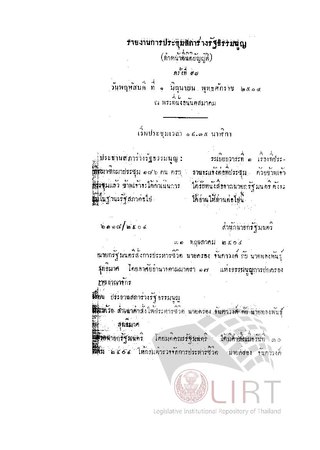
Lèse-majesté in Thailand is a crime according to Section 112 of the Thai Criminal Code. It is illegal to defame, insult, or threaten the monarch of Thailand. Modern Thai lèse-majesté law has been on the statute books since 1908. Thailand is the only constitutional monarchy to have strengthened its lèse-majesté law since World War II. With penalties ranging from three to fifteen years imprisonment for each count, it has been described as the "world's harshest lèse majesté law" and "possibly the strictest criminal-defamation law anywhere"; its enforcement "has been in the interest of the palace".

Insult is the infringement of another human's honor by whatsoever means of expression, in particular an offensive statement or gesture communicated, and is a crime in some countries. In a few countries seen as the same, in most the distinction between insult and defamation is that, from a focusing point of view, the former ascribes a value whereas the latter attributes or imputes a fact.

National security, or national defence, is the security and defence of a sovereign state, including its citizens, economy, and institutions, which is regarded as a duty of government. Originally conceived as protection against military attack, national security is widely understood to include also non-military dimensions, including the security from terrorism, minimization of crime, economic security, energy security, environmental security, food security, and cyber-security. Similarly, national security risks include, in addition to the actions of other nation states, action by violent non-state actors, by narcotic cartels, and by multinational corporations, and also the effects of natural disasters.
George Town, Penang, is made a city by a royal charter of Queen Elizabeth II of the United Kingdom.

George Town, formerly known as Tanjung Penaga is the capital city of the Malaysian state of Penang. George Town is Malaysia's sixth most populous city with 708,127 inhabitants as of 2010, while Greater Penang, with a population of 2,412,616, is the second largest conurbation in the country after Greater Kuala Lumpur. The historical core of George Town has been inscribed as a UNESCO World Heritage Site since 2008.

A royal charter is a formal grant issued by a monarch under royal prerogative as letters patent. Historically, they have been used to promulgate public laws, the most famous example being the English Magna Carta of 1215, but since the 14th century have only been used in place of private acts to grant a right or power to an individual or a body corporate. They were, and are still, used to establish significant organisations such as boroughs, universities and learned societies.
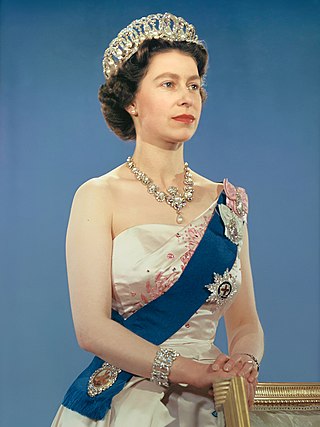
Elizabeth II was Queen of the United Kingdom and other Commonwealth realms from 6 February 1952 until her death in 2022. She was queen regnant of 32 sovereign states during her lifetime, and was head of state of 15 realms at the time of her death. Her reign of 70 years and 214 days was the longest of any British monarch and the longest verified reign of any female monarch in history.
Lèse majesté in Thailand is strengthened to include "insult" and changed to a crime against national security, after the Thai criminal code of 1956 went into effect.: 6, 18

Lèse-majesté in Thailand is a crime according to Section 112 of the Thai Criminal Code. It is illegal to defame, insult, or threaten the monarch of Thailand. Modern Thai lèse-majesté law has been on the statute books since 1908. Thailand is the only constitutional monarchy to have strengthened its lèse-majesté law since World War II. With penalties ranging from three to fifteen years imprisonment for each count, it has been described as the "world's harshest lèse majesté law" and "possibly the strictest criminal-defamation law anywhere"; its enforcement "has been in the interest of the palace".

Insult is the infringement of another human's honor by whatsoever means of expression, in particular an offensive statement or gesture communicated, and is a crime in some countries. In a few countries seen as the same, in most the distinction between insult and defamation is that, from a focusing point of view, the former ascribes a value whereas the latter attributes or imputes a fact.

National security, or national defence, is the security and defence of a sovereign state, including its citizens, economy, and institutions, which is regarded as a duty of government. Originally conceived as protection against military attack, national security is widely understood to include also non-military dimensions, including the security from terrorism, minimization of crime, economic security, energy security, environmental security, food security, and cyber-security. Similarly, national security risks include, in addition to the actions of other nation states, action by violent non-state actors, by narcotic cartels, and by multinational corporations, and also the effects of natural disasters.
Sudan achieves independence from Egypt and the United Kingdom.

Sudan, officially the Republic of the Sudan, is a country in Northeast Africa. It shares borders with the Central African Republic to the southwest, Chad to the west, Egypt to the north, Eritrea to the northeast, Ethiopia to the southeast, Libya to the northwest, South Sudan to the south and the Red Sea. It has a population of 45.70 million people as of 2022 and occupies 1,886,068 square kilometres, making it Africa's third-largest country by area, and the third-largest by area in the Arab League. It was the largest country by area in Africa and the Arab League until the secession of South Sudan in 2011, since which both titles have been held by Algeria. Its capital is Khartoum and its most populated city is Omdurman.

Egypt, officially the Arab Republic of Egypt, is a transcontinental country spanning the northeast corner of Africa and southwest corner of Asia via a land bridge formed by the Sinai Peninsula. It is bordered by the Mediterranean Sea to the north, the Gaza Strip of Palestine and Israel to the northeast, the Red Sea to the east, Sudan to the south, and Libya to the west. The Gulf of Aqaba in the northeast separates Egypt from Jordan and Saudi Arabia. Cairo is the capital and largest city of Egypt, while Alexandria, the second-largest city, is an important industrial and tourist hub at the Mediterranean coast. At approximately 100 million inhabitants, Egypt is the 14th-most populated country in the world.
United Nations cease-fire takes effect in Kashmir from one minute before midnight. War between India and Pakistan stops accordingly.

The United Nations (UN) is an intergovernmental organization whose stated purposes are to maintain international peace and security, develop friendly relations among nations, achieve international cooperation, and be a centre for harmonizing the actions of nations. It is the world's largest and most familiar international organization. The UN is headquartered on international territory in New York City, and has other main offices in Geneva, Nairobi, Vienna, and The Hague.

A ceasefire, also spelled cease fire, is a temporary stoppage of a war in which each side agrees with the other to suspend aggressive actions. Ceasefires may be between state actors or involve non-state actors.
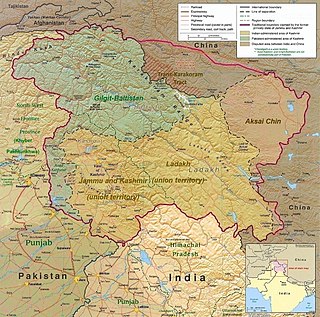
Kashmir is the northernmost geographical region of the Indian subcontinent. Until the mid-19th century, the term "Kashmir" denoted only the Kashmir Valley between the Great Himalayas and the Pir Panjal Range. Today, the term encompasses a larger area that includes the Indian-administered territories of Jammu and Kashmir and Ladakh, the Pakistani-administered territories of Azad Kashmir and Gilgit-Baltistan, and the Chinese-administered territories of Aksai Chin and the Trans-Karakoram Tract.

The Indo-Pakistani War of 1947–1948, or the First Kashmir War, was a war fought between India and Pakistan over the princely state of Jammu and Kashmir from 1947 to 1948. It was the first of four Indo-Pakistani wars that was fought between the two newly independent nations. Pakistan precipitated the war a few weeks after its independence by launching tribal lashkar (militias) from Waziristan, in an effort to capture Kashmir and to preempt the possibility of its ruler joining India. The inconclusive result of the war still affects the geopolitics of both countries.
The British railway network is nationalized to form British Railways.
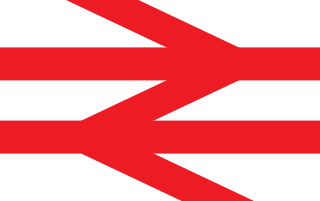
The United Kingdom consists of Great Britain and Northern Ireland, and previously consisted of Great Britain and the whole of Ireland. Rail transport systems developed independently on the two island masses of Great Britain and Ireland, and most of the railway construction in the Republic of Ireland was undertaken before the creation of the Irish Free State in 1922. Thus, the logical division to discuss the history and present-day state of railways in these areas is by geographical division, rather than the nationalist division of nation states.
Nationalization or collectivization is the process of transforming privately-owned assets into public assets by bringing them under the public ownership of a national government or state. Nationalization usually refers to private assets or to assets owned by lower levels of government being transferred to the state. Nationalization contrasts with privatization and with demutualization. When previously nationalized assets are privatized and subsequently returned to public ownership at a later stage, they are said to have undergone renationalization. Industries often subject to nationalization include the commanding heights of the economy – telecommunications, electric power, fossil fuels, railways, airlines, iron ore, media, postal services, banks, and water – though, in many jurisdictions, many such entities have no history of private ownership.
British Railways (BR), which from 1965 traded as British Rail, was a state-owned company that operated most of the overground rail transport in Great Britain from 1948 to 1997. It was formed from the nationalisation of the Big Four British railway companies, and was privatised in stages between 1994 and 1997. Originally a trading brand of the Railway Executive of the British Transport Commission, it became an independent statutory corporation in January 1963, when it was formally renamed the British Railways Board.
Cold War: The American and British occupation zones in Allied-occupied Germany, after World War II, merge to form the Bizone, which later (with the French zone) became part of West Germany.

The Cold War is a term commonly used to refer to a period of geopolitical tension between the United States and the Soviet Union and their respective allies, the Western Bloc and the Eastern Bloc. Historians do not fully agree on its starting and ending points, but the period is generally considered to span from the announcement of the Truman Doctrine on 12 March 1947 to the dissolution of the Soviet Union on 26 December 1991. The term cold war is used because there was no large-scale fighting directly between the two superpowers, but they each supported major regional conflicts known as proxy wars. The conflict was based around the ideological and geopolitical struggle for global influence by these two superpowers, following their temporary alliance and victory against Nazi Germany and Imperial Japan in 1945. Aside from the nuclear arsenal development and conventional military deployment, the struggle for dominance was expressed via indirect means such as psychological warfare, propaganda campaigns, espionage, far-reaching embargoes, rivalry at sports events, and technological competitions such as the Space Race.

Germany was already de facto occupied by the Allies from the real fall of Nazi Germany in World War II on 8 May 1945 to the establishment of the East Germany on 7 October 1949. The Allies asserted joint authority and sovereignty at the 1945 Berlin Declaration. At first, defining Allied-occupied Germany as all territories of the former German Reich before Nazi annexing Austria; however later in the 1945 Potsdam Conference of Allies, the Potsdam Agreement decided the new German border as it stands today. Said border gave Poland and the Soviet Union all regions of Germany east of the Oder–Neisse line and divided the remaining "Germany as a whole" into the four occupation zones for administrative purposes under the three Western Allies and the Soviet Union. Although the three of Allies agreed about the occupation and division in Germany in the legal protocol in London 1944 before, the four occupied zones with new border of Germany were only agreed by 3 Allies at the February 1945 Yalta Conference.

The Bizone or Bizonia was the combination of the American and the British occupation zones on 1 January 1947 during the occupation of Germany after World War II. With the addition of the French occupation zone on 1 August 1948 the entity became the Trizone. Later, on 23 May 1949, the Trizone became the Federal Republic of Germany, commonly known as West Germany.

West Germany is the common English name for the Federal Republic of Germany between its formation on 23 May 1949 and the German reunification through the accession of East Germany on 3 October 1990. During the Cold War, the western portion of Germany and the associated territory of West Berlin were parts of the Western Bloc. West Germany was formed as a political entity during the Allied occupation of Germany after World War II, established from eleven states formed in the three Allied zones of occupation/Trizone held by the United States, the United Kingdom, and France. The FRG's provisional capital was the city of Bonn, and the Cold War era country is retrospectively designated as the Bonn Republic.
The Canadian Citizenship Act 1946 comes into effect, converting British subjects into Canadian citizens. Prime Minister William Lyon Mackenzie King becomes the first Canadian citizen.

The Canadian Citizenship Act was a statute passed by the Parliament of Canada in 1946 which created the legal status of Canadian citizenship. The Act defined who were Canadian citizens, separate and independent from the status of the British subject and repealed earlier Canadian legislation relating to Canadian nationals and citizens as sub-classes of British subject status.

The term "British subject" has several different meanings depending on the time period. Before 1949, it referred to almost all subjects of the British Empire. Between 1949 and 1983, the term was synonymous with Commonwealth citizen. Currently, it refers to people possessing a class of British nationality largely granted under limited circumstances to those connected with Ireland or British India born before 1949. Individuals with this nationality are British nationals and Commonwealth citizens, but not British citizens.

Canadian nationality law details the conditions in which a person is a national of Canada. With few exceptions, almost all individuals born in the country are automatically citizens at birth. Foreign nationals may naturalize after living in Canada for at least three years while holding permanent residence and showing proficiency in the English or French language. As Commonwealth citizens, Canadian citizens have favoured status when residing in the United Kingdom; those living in the U.K. are eligible to vote and serve in public office or non-reserved government positions.

William Lyon Mackenzie King was a Canadian statesman and politician who served as the tenth prime minister of Canada for three non-consecutive terms from 1921 to 1926, 1926 to 1930, and 1935 to 1948. A Liberal, he was the dominant politician in Canada from the early 1920s to the late 1940s. King is best known for his leadership of Canada throughout the Great Depression and the Second World War. He played a major role in laying the foundations of the Canadian welfare state and established Canada's international reputation as a middle power fully committed to world order. With a total of 21 years and 154 days in office, he remains the longest-serving prime minister in Canadian history.
World War II: In retaliation for the massacre of captured Americans by Waffen SS soldiers, U.S. Army personnel killed an estimated 80 Wehrmacht prisoners near Chenogne, Belgium.

World War II or the Second World War, often abbreviated as WWII or WW2, was a world war that lasted from 1939 to 1945. It involved the vast majority of the world's countries—including all of the great powers—forming two opposing military alliances: the Allies and the Axis powers. World War II was a total war that directly involved more than 100 million personnel from more than 30 countries.

The Malmedy massacre was a German war crime committed by soldiers of the Waffen-SS on 17 December 1944, at the Baugnez crossroads near the city of Malmedy, Belgium, during the Battle of the Bulge. Soldiers of Kampfgruppe Peiper summarily killed eighty-four U.S. Army prisoners of war (POWs) who had surrendered after a brief battle. The Waffen-SS soldiers had grouped the U.S. POWs in a farmer's field, where they used machine guns to shoot and kill the grouped POWs; the prisoners of war who survived the gunfire of the massacre then were killed with a coup de grâce gun-shot to the head.
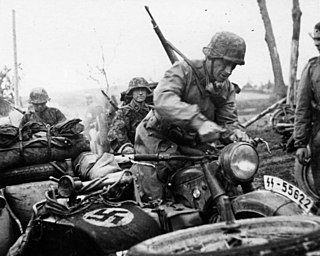
The Waffen-SS was the combat branch of the Nazi Party's Schutzstaffel (SS) organisation. Its formations included men from Nazi Germany, along with volunteers and conscripts from both occupied and unoccupied lands.

The United States Army (USA) is the land service branch of the United States Armed Forces. It is one of the eight U.S. uniformed services, and is designated as the Army of the United States in the U.S. Constitution. The oldest and most senior branch of the U.S. military in order of precedence, the modern U.S. Army has its roots in the Continental Army, which was formed 14 June 1775 to fight the American Revolutionary War (1775–1783)—before the United States was established as a country. After the Revolutionary War, the Congress of the Confederation created the United States Army on 3 June 1784 to replace the disbanded Continental Army. The United States Army considers itself to be a continuation of the Continental Army, and thus considers its institutional inception to be the origin of that armed force in 1775.
The Chenogne massacre was a war crime committed by members of the 11th Armored Division, an American combat unit, near Chenogne, Belgium, on January 1, 1945, during the Battle of the Bulge.

The Wehrmacht was the unified armed forces of Nazi Germany from 1935 to 1945. It consisted of the Heer (army), the Kriegsmarine (navy) and the Luftwaffe. The designation "Wehrmacht" replaced the previously used term Reichswehr and was the manifestation of the Nazi regime's efforts to rearm Germany to a greater extent than the Treaty of Versailles permitted.
Chenogne(Walloon: Dj'none) is a village of Wallonia in the municipality of Vaux-sur-Sûre, district of Sibret, located in the province of Luxembourg, Belgium.
Second World War: The Luftwaffe launched Operation Bodenplatte in an attempt to cripple Allied air forces in the Low Countries.

World War II or the Second World War, often abbreviated as WWII or WW2, was a world war that lasted from 1939 to 1945. It involved the vast majority of the world's countries—including all of the great powers—forming two opposing military alliances: the Allies and the Axis powers. World War II was a total war that directly involved more than 100 million personnel from more than 30 countries.

The Luftwaffe was the aerial-warfare branch of the German Wehrmacht before and during World War II. Germany's military air arms during World War I, the Luftstreitkräfte of the Imperial Army and the Marine-Fliegerabteilung of the Imperial Navy, had been disbanded in May 1920 in accordance with the terms of the 1919 Treaty of Versailles which banned Germany from having any air force.

Operation Bodenplatte, launched on 1 January 1945, was an attempt by the Luftwaffe to cripple Allied air forces in the Low Countries during the Second World War. The goal of Bodenplatte was to gain air superiority during the stagnant stage of the Battle of the Bulge so that the German Army and Waffen-SS forces could resume their advance. The operation was planned for 16 December 1944, but was delayed repeatedly due to bad weather until New Year's Day, the first day that happened to be suitable.

The Allies, formally referred to as the United Nations from 1942, were an international military coalition formed during the Second World War (1939–1945) to oppose the Axis powers, led by Nazi Germany, Imperial Japan, and Fascist Italy. Its principal members by 1941 were the United Kingdom, United States, Soviet Union, and China.
World War II: The German Luftwaffe launches Operation Bodenplatte, a massive, but failed, attempt to knock out Allied air power in northern Europe in a single blow.

World War II or the Second World War, often abbreviated as WWII or WW2, was a world war that lasted from 1939 to 1945. It involved the vast majority of the world's countries—including all of the great powers—forming two opposing military alliances: the Allies and the Axis powers. World War II was a total war that directly involved more than 100 million personnel from more than 30 countries.

The Luftwaffe was the aerial-warfare branch of the German Wehrmacht before and during World War II. Germany's military air arms during World War I, the Luftstreitkräfte of the Imperial Army and the Marine-Fliegerabteilung of the Imperial Navy, had been disbanded in May 1920 in accordance with the terms of the 1919 Treaty of Versailles which banned Germany from having any air force.

Operation Bodenplatte, launched on 1 January 1945, was an attempt by the Luftwaffe to cripple Allied air forces in the Low Countries during the Second World War. The goal of Bodenplatte was to gain air superiority during the stagnant stage of the Battle of the Bulge so that the German Army and Waffen-SS forces could resume their advance. The operation was planned for 16 December 1944, but was delayed repeatedly due to bad weather until New Year's Day, the first day that happened to be suitable.

The Allies, formally referred to as the United Nations from 1942, were an international military coalition formed during the Second World War (1939–1945) to oppose the Axis powers, led by Nazi Germany, Imperial Japan, and Fascist Italy. Its principal members by 1941 were the United Kingdom, United States, Soviet Union, and China.
The Declaration by United Nations is signed by twenty-six nations.

The Declaration by United Nations was the main treaty that formalized the Allies of World War II and was signed by 47 national governments between 1942 and 1945. On 1 January 1942, during the Arcadia Conference, the Allied "Big Four"—the United Kingdom, the United States, the Soviet Union, and China—signed a short document which later came to be known as the United Nations Declaration, and the next day the representatives of 22 other nations added their signatures.
Alcatraz Island in San Francisco Bay becomes a United States federal prison.

Alcatraz Island is a small island in San Francisco Bay, 1.25 miles (2.01 km) offshore from San Francisco, California, United States. The island was developed in the mid-19th century with facilities for a lighthouse, a military fortification, and a military prison. In 1934, the island was converted into a federal prison, Alcatraz Federal Penitentiary. The strong currents around the island and cold water temperatures made escape nearly impossible, and the prison became one of the most notorious in American history. The prison closed in 1963, and the island is now a major tourist attraction.

San Francisco Bay is a large tidal estuary in the U.S. state of California, and gives its name to the San Francisco Bay Area. It is dominated by the big cities of San Francisco, San Jose, and Oakland.

The Federal Bureau of Prisons (BOP) is a United States federal law enforcement agency under the Department of Justice that is responsible for the care, custody, and control of incarcerated individuals who have committed federal crimes; that is, violations of the United States Code.
A "Law for the Prevention of Genetically Diseased Offspring" comes into effect in Nazi Germany.

Nazi eugenics refers to the social policies of eugenics in Nazi Germany. The racial ideology of Nazism placed the biological improvement of the German people by selective breeding of "Nordic" or "Aryan" traits at its center. These policies were used to justify the involuntary sterilization and mass-murder of those deemed "undesirable".

Nazi Germany was the German state between 1933 and 1945, when Adolf Hitler and the Nazi Party controlled the country, transforming it into a dictatorship. Under Hitler's rule, Germany quickly became a totalitarian state where nearly all aspects of life were controlled by the government. The Third Reich, meaning "Third Realm" or "Third Empire", alluded to the Nazi claim that Nazi Germany was the successor to the earlier Holy Roman Empire (800–1806) and German Empire (1871–1918). The Third Reich, which Hitler and the Nazis referred to as the Thousand-Year Reich, ended in May 1945 after just 12 years when the Allies defeated Germany, ending World War II in Europe.
The United States Post Office Department issues a set of 12 stamps commemorating the 200th anniversary of George Washington's birth.

The United States Post Office Department was the predecessor of the United States Postal Service, in the form of a Cabinet department, officially from 1872 to 1971. It was headed by the postmaster general.

The Washington Bicentennial stamps of 1932 are postage stamps issued by the United States government in 1932 to commemorate the 200th anniversary of U.S. President George Washington's birth. Twelve stamps were issued as a collection, with each one depicting the President in a different period in his life.

Presidents' Day, also called Washington's Birthday at the federal governmental level, is a holiday in the United States celebrated on the third Monday of February to honor all persons who served as presidents of the United States and, since 1879, has been the federal holiday honoring George Washington, who led the Continental Army to victory in the American Revolutionary War, presided at the Constitutional Convention of 1787, and was the first U.S. president.
The former municipalities of Point Grey, British Columbia and South Vancouver, British Columbia are amalgamated into Vancouver.
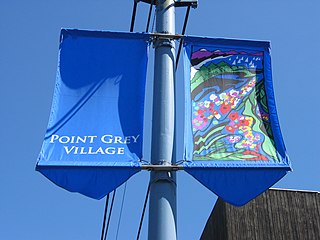
West Point Grey is a neighbourhood in the northwest of the city of Vancouver, British Columbia, Canada. It is located on Point Grey and is bordered by 16th Avenue to the south, Alma Street to the east, English Bay to the north, and Blanca Street to the west. Notable beaches within the West Point Grey boundary include Spanish Banks, Locarno and Jericho. Immediately to the south is Pacific Spirit Regional Park and to the east is Kitsilano.
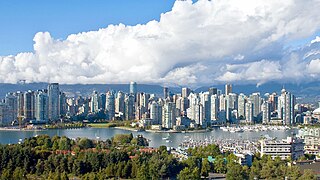
Vancouver is a major city in western Canada, located in the Lower Mainland region of British Columbia. As the most populous city in the province, the 2021 census recorded 662,248 people in the city, up from 631,486 in 2016. The Greater Vancouver area had a population of 2.6 million in 2021, making it the third-largest metropolitan area in Canada. Greater Vancouver, along with the Fraser Valley, comprises the Lower Mainland with a regional population of over 3 million. Vancouver has the highest population density in Canada, with over 5,700 people per square kilometre, and fourth highest in North America.
A merger, consolidation or amalgamation, in a political or administrative sense, is the combination of two or more political or administrative entities, such as municipalities, counties, districts, etc., into a single entity. This term is used when the process occurs within a sovereign entity.
Joseph Stalin's personal secretary, Boris Bazhanov, crossed the Iranian border and defected from the Soviet Union.

Joseph Vissarionovich Stalin was a Georgian revolutionary and Soviet political leader who led the Soviet Union from 1924 until his death in 1953. He held power as General Secretary of the Communist Party of the Soviet Union (1922–1952) and Chairman of the Council of Ministers of the Soviet Union (1941–1953). Initially governing the country as part of a collective leadership, he consolidated power to become a dictator by the 1930s. Ideologically adhering to the Leninist interpretation of Marxism, he formalised these ideas as Marxism–Leninism, while his own policies are called Stalinism.
Boris Georgiyevich Bazhanov was a Soviet secretary of the Secretariat of the Communist Party of the Soviet Union who defected from the Soviet Union on 1 January 1928.
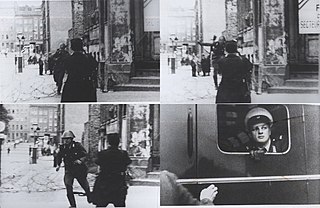
Emigration from the Eastern Bloc was a point of controversy during the Cold War. After World War II, emigration restrictions were imposed by countries in the Eastern Bloc, which consisted of the Soviet Union and its satellite states in Central and Eastern Europe. Legal emigration was in most cases only possible in order to reunite families or to allow members of minority ethnic groups to return to their homelands.
Boris Bazhanov defects through Iran. He is the only assistant of Joseph Stalin's secretariat to have defected from the Eastern Bloc.
Boris Georgiyevich Bazhanov was a Soviet secretary of the Secretariat of the Communist Party of the Soviet Union who defected from the Soviet Union on 1 January 1928.

Iran, officially the Islamic Republic of Iran, and also called Persia, is a country in Western Asia. It is bordered by Iraq and Turkey to the west, by Azerbaijan and Armenia to the northwest, by the Caspian Sea and Turkmenistan to the north, by Afghanistan and Pakistan to the east, and by the Gulf of Oman and the Persian Gulf to the south. It covers an area of 1.64 million square kilometres, making it the 17th-largest country. Iran has a population of 86 million, making it the 17th-most populous country in the world, and the second-largest in the Middle East. Its largest cities, in descending order, are the capital Tehran, Mashhad, Isfahan, Karaj, Shiraz, and Tabriz.

Joseph Vissarionovich Stalin was a Georgian revolutionary and Soviet political leader who led the Soviet Union from 1924 until his death in 1953. He held power as General Secretary of the Communist Party of the Soviet Union (1922–1952) and Chairman of the Council of Ministers of the Soviet Union (1941–1953). Initially governing the country as part of a collective leadership, he consolidated power to become a dictator by the 1930s. Ideologically adhering to the Leninist interpretation of Marxism, he formalised these ideas as Marxism–Leninism, while his own policies are called Stalinism.

Emigration from the Eastern Bloc was a point of controversy during the Cold War. After World War II, emigration restrictions were imposed by countries in the Eastern Bloc, which consisted of the Soviet Union and its satellite states in Central and Eastern Europe. Legal emigration was in most cases only possible in order to reunite families or to allow members of minority ethnic groups to return to their homelands.
New Mexican oil legislation goes into effect, leading to the formal outbreak of the Cristero War.
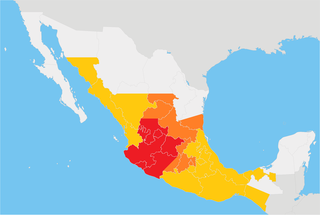
The Cristero War, also known as the Cristero Rebellion or La Cristiada [la kɾisˈtjaða], was a widespread struggle in central and western Mexico from 1 August 1926 to 21 June 1929 in response to the implementation of secularist and anticlerical articles of the 1917 Constitution. The rebellion was instigated as a response to an executive decree by Mexican President Plutarco Elías Calles to strictly enforce Article 130 of the Constitution, a decision known as Calles Law. Calles sought to eliminate the power of the Catholic Church in Mexico, its affiliated organizations and to suppress popular religiosity.
Britain's Railways are grouped into the Big Four: LNER, GWR, SR, and LMS.
Under the Railways Act 1921 the majority of the railway companies in Great Britain were grouped into four main companies, often termed the Big Four. The grouping took effect from 1 January 1923.

The London and North Eastern Railway (LNER) was the second largest of the "Big Four" railway companies created by the Railways Act 1921 in Britain. It operated from 1 January 1923 until nationalisation on 1 January 1948. At that time, it was divided into the new British Railways' Eastern Region, North Eastern Region, and partially the Scottish Region.
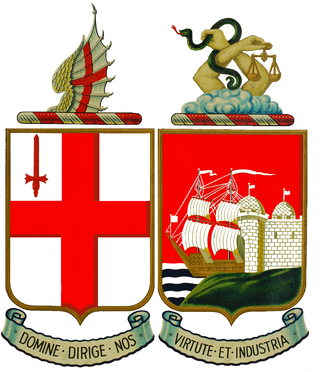
The Great Western Railway (GWR) was a British railway company that linked London with the southwest, west and West Midlands of England and most of Wales. It was founded in 1833, received its enabling Act of Parliament on 31 August 1835 and ran its first trains in 1838 with the initial route completed between London and Bristol in 1841. It was engineered by Isambard Kingdom Brunel, who chose a broad gauge of 7 ft —later slightly widened to 7 ft 1⁄4 in —but, from 1854, a series of amalgamations saw it also operate 4 ft 8+1⁄2 in standard-gauge trains; the last broad-gauge services were operated in 1892.

The Southern Railway (SR), sometimes shortened to 'Southern', was a British railway company established in the 1923 Grouping. It linked London with the Channel ports, South West England, South coast resorts and Kent. The railway was formed by the amalgamation of several smaller railway companies, the largest of which were the London and South Western Railway (LSWR), the London, Brighton and South Coast Railway (LB&SCR) and the South Eastern and Chatham Railway (SE&CR). The construction of what was to become the Southern Railway began in 1838 with the opening of the London and Southampton Railway, which was renamed the London & South Western Railway.

The London, Midland and Scottish Railway (LMS) was a British railway company. It was formed on 1 January 1923 under the Railways Act of 1921, which required the grouping of over 120 separate railways into four. The companies merged into the LMS included the London and North Western Railway, Midland Railway, the Lancashire and Yorkshire Railway, several Scottish railway companies, and numerous other, smaller ventures.
The St. Petersburg–Tampa Airboat Line in the U.S. state of Florida became the first scheduled airline using a winged aircraft.
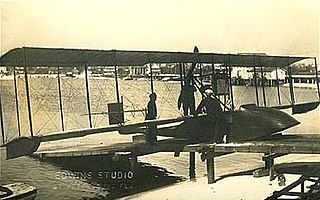
The St. Petersburg–Tampa Airboat Line was the first scheduled airline using a fixed wing aircraft. The airline provided service between St. Petersburg, Florida and neighboring Tampa across Tampa Bay a distance of about 23 miles. It was in service from January to May 1914.

Florida is a state located in the Southeastern region of the United States. Florida is bordered to the west by the Gulf of Mexico, to the northwest by Alabama, to the north by Georgia, to the east by the Bahamas and Atlantic Ocean, and to the south by the Straits of Florida and Cuba; it is the only state that borders both the Gulf of Mexico and the Atlantic Ocean. Spanning 65,758 square miles (170,310 km2), Florida ranks 22nd in area among the 50 states, and with a population of over 21 million, is the third-most populous. The state capital is Tallahassee and the most populous city is Jacksonville. The Miami metropolitan area, with a population of almost 6.2 million, is the most populous urban area in Florida and the ninth-most populous in the United States; other urban conurbations with over one million people are Tampa Bay, Orlando, and Jacksonville.
The SPT Airboat Line becomes the world's first scheduled airline to use a winged aircraft.

The St. Petersburg–Tampa Airboat Line was the first scheduled airline using a fixed wing aircraft. The airline provided service between St. Petersburg, Florida and neighboring Tampa across Tampa Bay a distance of about 23 miles. It was in service from January to May 1914.

A fixed-wing aircraft is a heavier-than-air flying machine, such as an airplane, which is capable of flight using wings that generate lift caused by the aircraft's forward airspeed and the shape of the wings. Fixed-wing aircraft are distinct from rotary-wing aircraft, and ornithopters. The wings of a fixed-wing aircraft are not necessarily rigid; kites, hang gliders, variable-sweep wing aircraft and airplanes that use wing morphing are all examples of fixed-wing aircraft.
The Republic of China is established.
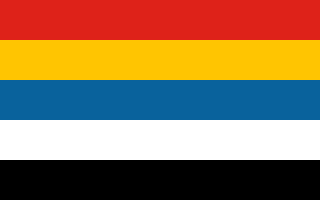
The Republic of China (ROC), between 1912 and 1949, was a sovereign state recognised as the official designation of China when it was based on Mainland China, prior to the relocation of its central government to Taiwan as a result of the Chinese Civil War. At a population of 541 million in 1949, it was the world's most populous country. Covering 11.4 million square kilometres, it consisted of 35 provinces, 1 special administrative region, 2 regions, 12 special municipalities, 14 leagues, and 4 special banners. The People's Republic of China (PRC), which rules mainland China today, considers ROC as a country that ceased to exist since 1949; thus, the history of ROC before 1949 is often referred to as Republican Era of China. The ROC, now based in Taiwan, today considers itself a continuation of the country, thus calling the period of its mainland governance as the Mainland Period of the Republic of China in Taiwan.
Captain David Beatty is promoted to Rear admiral, and becomes the youngest admiral in the Royal Navy (except for Royal family members) since Horatio Nelson.

Admiral of the Fleet David Richard Beatty, 1st Earl Beatty was a Royal Navy officer. After serving in the Mahdist War and then the response to the Boxer Rebellion, he commanded the 1st Battlecruiser Squadron at the Battle of Jutland in 1916, a tactically indecisive engagement after which his aggressive approach was contrasted with the caution of his commander Admiral Sir John Jellicoe. He is remembered for his comment at Jutland that "There seems to be something wrong with our bloody ships today", after two of his ships exploded. Later in the war he succeeded Jellicoe as Commander in Chief of the Grand Fleet, in which capacity he received the surrender of the German High Seas Fleet at the end of the war. He then followed Jellicoe's path a second time, serving as First Sea Lord—a position that Beatty held longer than any other First Sea Lord. While First Sea Lord, he was involved in negotiating the Washington Naval Treaty of 1922 in which it was agreed that the United States, Britain and Japan should set their navies in a ratio of 5:5:3, with France and Italy maintaining smaller ratio fleets of 1.75 each.
Rear admiral is a senior naval flag officer rank, equivalent to a major general and air vice marshal and above that of a commodore and captain, but below that of a vice admiral. It is regarded as a two star "admiral" rank. It is often regarded as a two-star rank with a NATO code of OF-7.
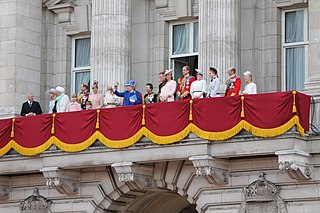
The British royal family comprises King Charles III and his close relations. There is no strict legal or formal definition of who is or is not a member, although the Royal Household has issued different lists outlining who is a part of the royal family. They support the monarch in undertaking public engagements and often pursue charitable work and interests. The royal family are regarded as British cultural icons.
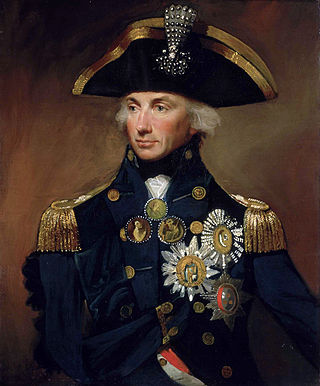
Vice-Admiral Horatio Nelson, 1st Viscount Nelson, 1st Duke of Bronte was a British flag officer in the Royal Navy. His inspirational leadership, grasp of strategy, and unconventional tactics brought about a number of decisive British naval victories during the French Revolutionary and Napoleonic Wars. He is widely regarded as one of the greatest naval commanders in history.
The first American college football bowl game, the Rose Bowl between Michigan and Stanford, is held in Pasadena, California.

College football refers to American or Canadian football played by teams of student athletes. It was through college football play that American football rules first gained popularity in the United States.
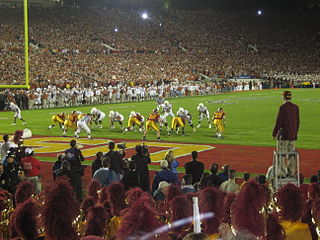
In North America, a bowl game is one of a number of post-season college football games that are primarily played by teams belonging to the NCAA's Division I Football Bowl Subdivision (FBS). For most of its history, the Division I Bowl Subdivision had avoided using a playoff tournament to determine an annual national champion, which was instead traditionally determined by a vote of sports writers and other non-players. In place of such a playoff, various cities across the United States developed their own regional festivals featuring post-season college football games. Prior to 2002, bowl game statistics were not included in players' career totals. Despite attempts to establish a permanent system to determine the FBS national champion on the field, various bowl games continue to be held because of the vested economic interests entrenched in them.

The Rose Bowl Game is an annual American college football bowl game, usually played on January 1 at the Rose Bowl in Pasadena, California. When New Year's Day falls on a Sunday, the game is played on Monday, January 2. The Rose Bowl Game is nicknamed "The Granddaddy of Them All" because it is the oldest currently operating bowl game. It was first played in 1902 as the Tournament East–West football game, and has been played annually since 1916. Since 1945, it has been the highest attended college football bowl game. Previous sponsors include Capital One (2021–2022), Northwestern Mutual (2015–2020), Vizio (2011–2014), Citi (2004–2010), Sony/PlayStation 2 (2003), and AT&T (1999–2002). The game is a part of the Pasadena Tournament of Roses Association's "America's New Year Celebration", which also includes the historic Rose Parade. Winners of the game received the Leishman Trophy, named for former Tournament of Roses presidents, William L. Leishman and Lathrop K. Leishman who played an important part in the history of this game.
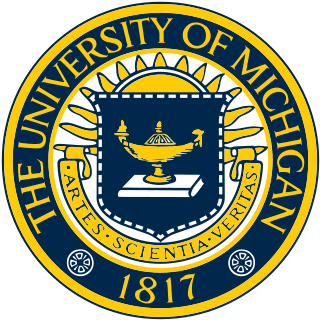
The University of Michigan is a public research university in Ann Arbor, Michigan. Founded in 1817 by an act of the old Michigan Territory as the Catholepistemiad, or the "School of Universal Knowledge," 20 years before the territory became a state, the university is Michigan's oldest. The institution was moved to Ann Arbor in 1837 onto 40 acres (16 ha) of what is now known as Central Campus, a U.S. historic district. The university has been governed by an elected board of regents independently of the state since 1850, when the state's second constitution was officially adopted.

Stanford University, officially Leland Stanford Junior University, is a private research university in Stanford, California. The campus occupies 8,180 acres, among the largest in the United States, and enrolls over 17,000 students. Stanford is ranked among the top universities in the world.

Pasadena is a city in Los Angeles County, California, 11 miles (18 km) northeast of downtown Los Angeles. It is the most populous city and the primary cultural center of the San Gabriel Valley. Old Pasadena is the city's original commercial district.
The Southern Nigeria Protectorate is established within the British Empire.

Southern Nigeria was a British protectorate in the coastal areas of modern-day Nigeria formed in 1900 from the union of the Niger Coast Protectorate with territories chartered by the Royal Niger Company below Lokoja on the Niger River.
The British colonies of New South Wales, Queensland, Victoria, South Australia, Tasmania, and Western Australia federate as the Commonwealth of Australia; Edmund Barton is appointed the first Prime Minister.

New South Wales is a state on the east coast of Australia. It borders Queensland to the north, Victoria to the south, and South Australia to the west. Its coast borders the Coral and Tasman Seas to the east. The Australian Capital Territory and Jervis Bay Territory are enclaves within the state. New South Wales' state capital is Sydney, which is also Australia's most populous city. In December 2021, the population of New South Wales was over 8 million, making it Australia's most populous state. Just under two-thirds of the state's population, 5.3 million, live in the Greater Sydney area.

Queensland is a state situated in northeastern Australia, and is the second-largest and third-most populous of the Australian states. It is bordered by the Northern Territory, South Australia and New South Wales to the west, southwest and south respectively. To the east, Queensland is bordered by the Coral Sea and the Pacific Ocean; to its north is the Torres Strait, separating the Australian mainland from Papua New Guinea. With an area of 1,852,642 square kilometres (715,309 sq mi), Queensland is the world's sixth-largest sub-national entity; it is larger than all but 15 countries. Due to its size, Queensland's geographical features and climates are diverse, including tropical rainforests, rivers, coral reefs, mountain ranges and sandy beaches in its tropical and sub-tropical coastal regions, as well as deserts and savanna in the semi-arid and desert climatic regions of its interior.

Victoria is a state in southeastern Australia. It is the second-smallest state with a land area of 227,444 km2 (87,817 sq mi), the second most populated state with a population of over 6.5 million, and the most densely populated state in Australia. Victoria is bordered with New South Wales to the north and South Australia to the west, and is bounded by the Bass Strait to the south, the Great Australian Bight portion of the Southern Ocean to the southwest, and the Tasman Sea to the southeast. The state encompasses a range of climates and geographical features from its temperate coastal and central regions to the Victorian Alps in the northeast and the semi-arid north-west.

South Australia is a state in the southern central part of Australia. It covers some of the most arid parts of the country. With a total land area of 984,321 square kilometres (380,048 sq mi), it is the fourth-largest of Australia's states and territories by area, and second smallest state by population. It has a total of 1.8 million people. Its population is the second most highly centralised in Australia, after Western Australia, with more than 77 percent of South Australians living in the capital Adelaide, or its environs. Other population centres in the state are relatively small; Mount Gambier, the second-largest centre, has a population of 33,233.

Tasmania is an island state of Australia. It is located 240 kilometres (150 miles) to the south of the Australian mainland, separated from it by the Bass Strait, with the archipelago containing the southernmost point of the country. The state encompasses the main island of Tasmania, the 26th-largest island in the world, and the surrounding 1000 islands. It is Australia's least populous state, with 569,825 residents as of December 2021. The state capital and largest city is Hobart, with around 40 percent of the population living in the Greater Hobart area.

Western Australia is a state of Australia occupying the western 33 percent of the land area of Australia excluding external territories. It is bounded by the Indian Ocean to the north and west, the Southern Ocean to the south, the Northern Territory to the north-east, and South Australia to the south-east. Western Australia is Australia's largest state, with a total land area of 2,527,013 square kilometres (975,685 sq mi). It is the second-largest country subdivision in the world, surpassed only by Russia's Sakha Republic. As of 2021, the state has 2.76 million inhabitants – 11 percent of the national total. The vast majority live in the south-west corner; 79 percent of the population lives in the Perth area, leaving the remainder of the state sparsely populated.

The Federation of Australia was the process by which the six separate British self-governing colonies of Queensland, New South Wales, Victoria, Tasmania, South Australia, and Western Australia agreed to unite and form the Commonwealth of Australia, establishing a system of federalism in Australia. The colonies of Fiji and New Zealand were originally part of this process, but they decided not to join the federation. Following federation, the six colonies that united to form the Commonwealth of Australia as states kept the systems of government that they had developed as separate colonies, but they also agreed to have a federal government that was responsible for matters concerning the whole nation. When the Constitution of Australia came into force, on 1 January 1901, the colonies collectively became states of the Commonwealth of Australia.

Australia, officially the Commonwealth of Australia, is a sovereign country comprising the mainland of the Australian continent, the island of Tasmania, and numerous smaller islands. With an area of 7,617,930 square kilometres (2,941,300 sq mi), Australia is the largest country by area in Oceania and the world's sixth-largest country. Australia is the oldest, flattest, and driest inhabited continent, with the least fertile soils. It is a megadiverse country, and its size gives it a wide variety of landscapes and climates, with deserts in the centre, tropical rainforests in the north-east, and mountain ranges in the south-east.
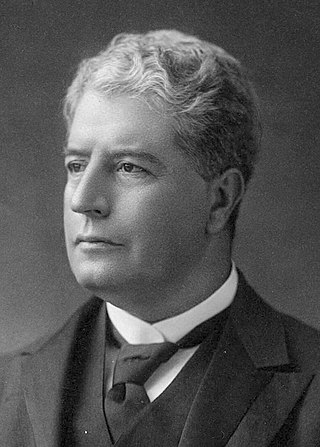
Sir Edmund "Toby" Barton, was an Australian politician and judge who served as the first prime minister of Australia from 1901 to 1903, holding office as the leader of the Protectionist Party. He resigned to become a founding member of the High Court of Australia, where he served until his death.

The prime minister of Australia is the head of government of the Commonwealth of Australia. The prime minister heads the executive branch of the federal government of Australia and is also accountable to federal parliament under the principles of responsible government. The current prime minister is Anthony Albanese of the Australian Labor Party, who became prime minister on 23 May 2022.
Nigeria becomes British protectorate with Frederick Lugard as high commissioner.

Nigeria, officially the Federal Republic of Nigeria, is a country in West Africa. It is situated between the Sahel to the north and the Gulf of Guinea to the south in the Atlantic Ocean. It covers an area of 923,769 square kilometres (356,669 sq mi), and with a population of over 225 million, it is the most populous country in Africa, and the world's sixth-most populous country. Nigeria borders Niger in the north, Chad in the northeast, Cameroon in the east, and Benin in the west. Nigeria is a federal republic comprising 36 states and the Federal Capital Territory, where the capital, Abuja, is located. The largest city in Nigeria is Lagos, one of the largest metropolitan areas in the world and the second-largest in Africa.

Frederick John Dealtry Lugard, 1st Baron Lugard, known as Sir Frederick Lugard between 1901 and 1928, was a British soldier, mercenary, explorer of Africa and colonial administrator. He was Governor of Hong Kong (1907–1912), the last Governor of Southern Nigeria Protectorate (1912–1914), the first High Commissioner (1900–1906) and last Governor (1912–1914) of Northern Nigeria Protectorate and the first Governor-General of Nigeria (1914–1919).
Spanish rule ends in Cuba.

The Captaincy General of Cuba was an administrative district of the Spanish Empire created in 1607 as part of Habsburg Spain's attempt to better defend and administer its Caribbean possessions. It also involved creating captaincies general in Puerto Rico, Guatemala and Yucatán.

Cuba, officially the Republic of Cuba, is an island country comprising the island of Cuba, as well as Isla de la Juventud and several minor archipelagos. Cuba is located where the northern Caribbean Sea, Gulf of Mexico, and Atlantic Ocean meet. Cuba is located east of the Yucatán Peninsula (Mexico), south of both the American state of Florida and the Bahamas, west of Hispaniola, and north of both Jamaica and the Cayman Islands. Havana is the largest city and capital; other major cities include Santiago de Cuba and Camagüey. The official area of the Republic of Cuba is 109,884 km2 (42,426 sq mi) but a total of 350,730 km² including the exclusive economic zone. Cuba is the second-most populous country in the Caribbean after Haiti, with over 11 million inhabitants.
New York, New York annexes land from surrounding counties, creating the City of Greater New York. The four initial boroughs, Manhattan, Brooklyn, Queens, and The Bronx, are joined on January 25 by Staten Island to create the modern city of five boroughs.

New York, often called New York City or the acronym NYC, is the most populous city in the United States. With a 2020 population of 8,804,190 distributed over 300.46 square miles (778.2 km2), New York City is also the most densely populated major city in the United States, and is more than twice as populous as second-place Los Angeles. New York City lies at the southern tip of New York State, and constitutes the geographical and demographic center of both the Northeast megalopolis and the New York metropolitan area, the largest metropolitan area in the world by urban landmass. With over 20.1 million people in its metropolitan statistical area and 23.5 million in its combined statistical area as of 2020, New York is one of the world's most populous megacities, and over 58 million people live within 250 mi (400 km) of the city. New York City is a global cultural, financial, and media center with a significant influence on commerce, health care and life sciences, entertainment, research, technology, education, politics, tourism, dining, art, fashion, and sports. New York is the most photographed city in the world. Home to the headquarters of the United Nations, New York is an important center for international diplomacy, an established safe haven for global investors, and is sometimes described as the capital of the world.

The City of Greater New York was the term used by many politicians and scholars for the expanded City of New York created on January 1, 1898, by consolidating the existing City of New York with Brooklyn, western Queens County, and Staten Island. The section of the Bronx west of the Bronx River had been annexed to the City and County of New York in 1874 and was known as the Annexed District. The section of the Bronx east of the Bronx River had been annexed to New York City, and New York County, in 1895.

New York City is composed of five boroughs: The Bronx, Brooklyn, Manhattan, Queens, and Staten Island. Each borough is coextensive with a respective county of New York State, making New York City the largest U.S. municipality situated in multiple counties. The boroughs of Queens and the Bronx are also Queens County and Bronx County. The other three counties are named differently from their boroughs: Manhattan is New York County, Brooklyn is Kings County, and Staten Island is Richmond County.

Manhattan, known regionally as the City, is the most densely populated and geographically smallest of the five boroughs of New York City. The borough is also coextensive with New York County, one of the original counties of the U.S. state of New York. Located near the southern tip of New York State, Manhattan is based in the Eastern Time Zone and constitutes both the geographical and demographic center of the Northeast megalopolis and the urban core of the New York metropolitan area, the largest metropolitan area in the world by urban landmass. Over 58 million people live within 250 miles of Manhattan, which serves as New York City’s economic and administrative center, cultural identifier, and the city’s historical birthplace. Manhattan has been described as the cultural, financial, media, and entertainment capital of the world, is considered a safe haven for global real estate investors, and hosts the United Nations headquarters. New York City is the headquarters of the global art market, centered in Manhattan.

Brooklyn is a borough of New York City, coextensive with Kings County, in the U.S. state of New York. Kings County is the most populous county in the State of New York, and the second-most densely populated county in the United States, behind New York County (Manhattan). Brooklyn is also New York City's most populous borough, with 2,736,074 residents in 2020.
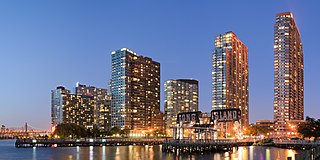
Queens is a borough of New York City, coextensive with Queens County, in the U.S. state of New York. Located on Long Island, it is the largest New York City borough by area. It is bordered by the borough of Brooklyn at the western tip of Long Island to its west, and Nassau County to its east. Queens also shares water borders with the boroughs of Manhattan, the Bronx, and Staten Island.

The Bronx is a borough of New York City, coextensive with Bronx County, in the state of New York. It is south of Westchester County; north and east of the New York City borough of Manhattan, across the Harlem River; and north of the New York City borough of Queens, across the East River. The Bronx has a land area of 42 square miles (109 km2) and a population of 1,472,654 in the 2020 census. If each borough were ranked as a city, the Bronx would rank as the ninth-most-populous in the U.S. Of the five boroughs, it has the fourth-largest area, fourth-highest population, and third-highest population density. It is the only borough of New York City not primarily on an island. With a population that is 54.8% Hispanic as of 2020, it is the only majority-Hispanic county in the Northeastern United States and the fourth-most-populous nationwide.
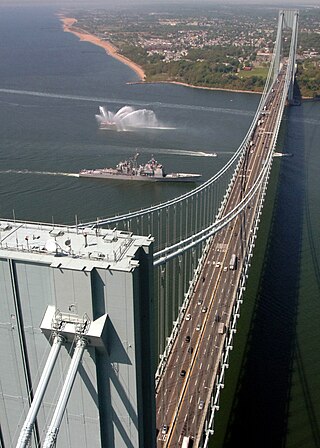
Staten Island is a borough of New York City, coextensive with Richmond County, in the U.S. state of New York. Located in the city's southwest portion, the borough is separated from New Jersey by the Arthur Kill and the Kill Van Kull and from the rest of New York by New York Bay. With a population of 495,747 in the 2020 Census, Staten Island is the least populated borough but the third largest in land area at 58.5 sq mi (152 km2).
The immigration station on Ellis Island in New York Harbor opened, and would process almost 12 million immigrants to the United States over the course of its existence.

Ellis Island is a federally owned island in New York Harbor, situated within the U.S. states of New York and New Jersey, that was the busiest immigrant inspection and processing station in the United States. From 1892 to 1954, nearly 12 million immigrants arriving at the Port of New York and New Jersey were processed there under federal law. Today, it is part of the Statue of Liberty National Monument and is accessible to the public only by ferry. The north side of the island is the site of the main building, now a national museum of immigration. The south side of the island, including the Ellis Island Immigrant Hospital, is open to the public only through guided tours.

New York Harbor is at the mouth of the Hudson River where it empties into New York Bay near the East River tidal estuary, and then into the Atlantic Ocean on the east coast of the United States. It is one of the largest natural harbors in the world, and is frequently named the best natural harbor in the world. It is also known as Upper New York Bay, which is enclosed by the New York City boroughs of Manhattan, Brooklyn, and Staten Island and the Hudson County, New Jersey, municipalities of Jersey City and Bayonne. The name may also refer to the entirety of New York Bay including Lower New York Bay. Although the United States Board on Geographic Names does not use the term, New York Harbor has important historical, governmental, commercial, and ecological usages.

Immigration has been a major source of population growth and cultural change throughout much of the history of the United States. In absolute numbers, the United States has a larger immigrant population than any other country in the world, with 47 million immigrants as of 2015. This represents 19.1% of the 244 million international migrants worldwide, and 14.4% of the United States population. Some other countries have larger proportions of immigrants, such as Australia with 30% and Canada with 21.9%.
Ellis Island begins processing immigrants into the United States.

Ellis Island is a federally owned island in New York Harbor, situated within the U.S. states of New York and New Jersey, that was the busiest immigrant inspection and processing station in the United States. From 1892 to 1954, nearly 12 million immigrants arriving at the Port of New York and New Jersey were processed there under federal law. Today, it is part of the Statue of Liberty National Monument and is accessible to the public only by ferry. The north side of the island is the site of the main building, now a national museum of immigration. The south side of the island, including the Ellis Island Immigrant Hospital, is open to the public only through guided tours.

Immigration has been a major source of population growth and cultural change throughout much of the history of the United States. In absolute numbers, the United States has a larger immigrant population than any other country in the world, with 47 million immigrants as of 2015. This represents 19.1% of the 244 million international migrants worldwide, and 14.4% of the United States population. Some other countries have larger proportions of immigrants, such as Australia with 30% and Canada with 21.9%.
Eritrea is consolidated into a colony by the Italian government.
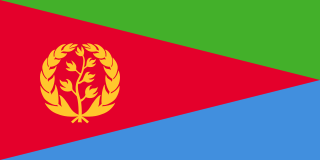
Eritrea, officially the State of Eritrea, is a country in the Horn of Africa region of Eastern Africa, with its capital and largest city at Asmara. It is bordered by Ethiopia in the south, Sudan in the west, and Djibouti in the southeast. The northeastern and eastern parts of Eritrea have an extensive coastline along the Red Sea. The nation has a total area of approximately 117,600 km2 (45,406 sq mi), and includes the Dahlak Archipelago and several of the Hanish Islands.

In modern parlance, a colony is a territory subject to a form of foreign rule. Though dominated by the foreign colonizers, colonies remain separate from the administration of the original country of the colonizers, the metropolitan state. This administrative colonial separation makes colonies neither incorporated territories nor client states. Some colonies have been organized either as dependent territories that are not sufficiently self-governed, or as self-governed colonies controlled by colonial settlers.

The government of Italy is in the form of a democratic republic, and was established by a constitution in 1948. It consists of legislative, executive, and judicial subdivisions, as well as a Head of State, or President.
Twenty-five nations adopt Sandford Fleming's proposal for standard time (and also, time zones).

Sir Sandford Fleming was a Scottish Canadian engineer and inventor. Born and raised in Scotland, he emigrated to colonial Canada at the age of 18. He promoted worldwide standard time zones, a prime meridian, and use of the 24-hour clock as key elements to communicating the accurate time, all of which influenced the creation of Coordinated Universal Time. He designed Canada's first postage stamp, produced a great deal of work in the fields of land surveying and map making, engineered much of the Intercolonial Railway and the first several hundred kilometers of the Canadian Pacific Railway, and was a founding member of the Royal Society of Canada and founder of the Canadian Institute.

Standard time is the synchronisation of clocks within a geographical region to a single time standard, rather than a local mean time standard. Generally, standard time agrees with the local mean time at some meridian that passes through the region, often near the centre of the region. Historically, standard time was established during the 19th century to aid weather forecasting and train travel. Applied globally in the 20th century, the geographical regions became time zones. The standard time in each time zone has come to be defined as an offset from Universal Time. A further offset is applied for part of the year in regions with daylight saving time.

A time zone is an area which observes a uniform standard time for legal, commercial and social purposes. Time zones tend to follow the boundaries between countries and their subdivisions instead of strictly following longitude, because it is convenient for areas in frequent communication to keep the same time.
Queen Victoria of the United Kingdom is proclaimed Empress of India.

Victoria was Queen of the United Kingdom of Great Britain and Ireland from 20 June 1837 until her death in 1901. Her reign of 63 years and seven months was longer than that of any previous British monarch and is known as the Victorian era. It was a period of industrial, political, scientific, and military change within the United Kingdom, and was marked by a great expansion of the British Empire. In 1876, the British Parliament voted to grant her the additional title of Empress of India.
Emperor or Empress of India was a title used by British monarchs from 1 May 1876 to 22 June 1948, that was used to signify their rule over British India, as its imperial head of state. The image of the emperor or empress was used to signify British authority—his or her profile, for instance, appearing on currency, in government buildings, railway stations, courts, on statues etc. "God Save the King" was the national anthem of British India. Oaths of allegiance were made to the emperor or empress and the lawful successors by the governors-general, princes, governors, commissioners in India in events such as imperial durbars.
American Civil War: The Emancipation Proclamation takes effect in Confederate territory.

The American Civil War was a civil war in the United States. It was fought between the Union and the Confederacy, the latter formed by states that had seceded. The central cause of the war was the dispute over whether slavery would be permitted to expand into the western territories, leading to more slave states, or be prevented from doing so, which was widely believed would place slavery on a course of ultimate extinction.

The Emancipation Proclamation, officially Proclamation 95, was a presidential proclamation and executive order issued by United States President Abraham Lincoln on January 1, 1863, during the Civil War. The Proclamation changed the legal status of more than 3.5 million enslaved African Americans in the secessionist Confederate states from enslaved to free. As soon as slaves escaped the control of their enslavers, either by fleeing to Union lines or through the advance of federal troops, they were permanently free. In addition, the Proclamation allowed for former slaves to "be received into the armed service of the United States."

The Confederate States of America (CSA), commonly referred to as the Confederate States, the Confederacy, or "the South", was an unrecognized breakaway republic in North America that existed from February 8, 1861, to May 9, 1865. The Confederacy comprised U.S. states that declared secession and warred against the United States during the American Civil War. Eleven U.S. states, nicknamed Dixie, declared secession and formed the main part of the CSA. They were South Carolina, Mississippi, Florida, Alabama, Georgia, Louisiana, Texas, Virginia, Arkansas, Tennessee, and North Carolina. Kentucky, and Missouri also had declarations of secession and full representation in the Confederate Congress during their Union army occupation.
Liberal forces supporting Benito Juárez enter Mexico City.
The Liberal Party was a political coalition that emerged in Mexico after independence. Strongly influenced by French Revolutionary thought, and the republican institutions of the United States, it championed the principles of 19th century liberalism, and promoted republicanism, federalism, and anti-clericalism. They were opposed by the Conservatives.
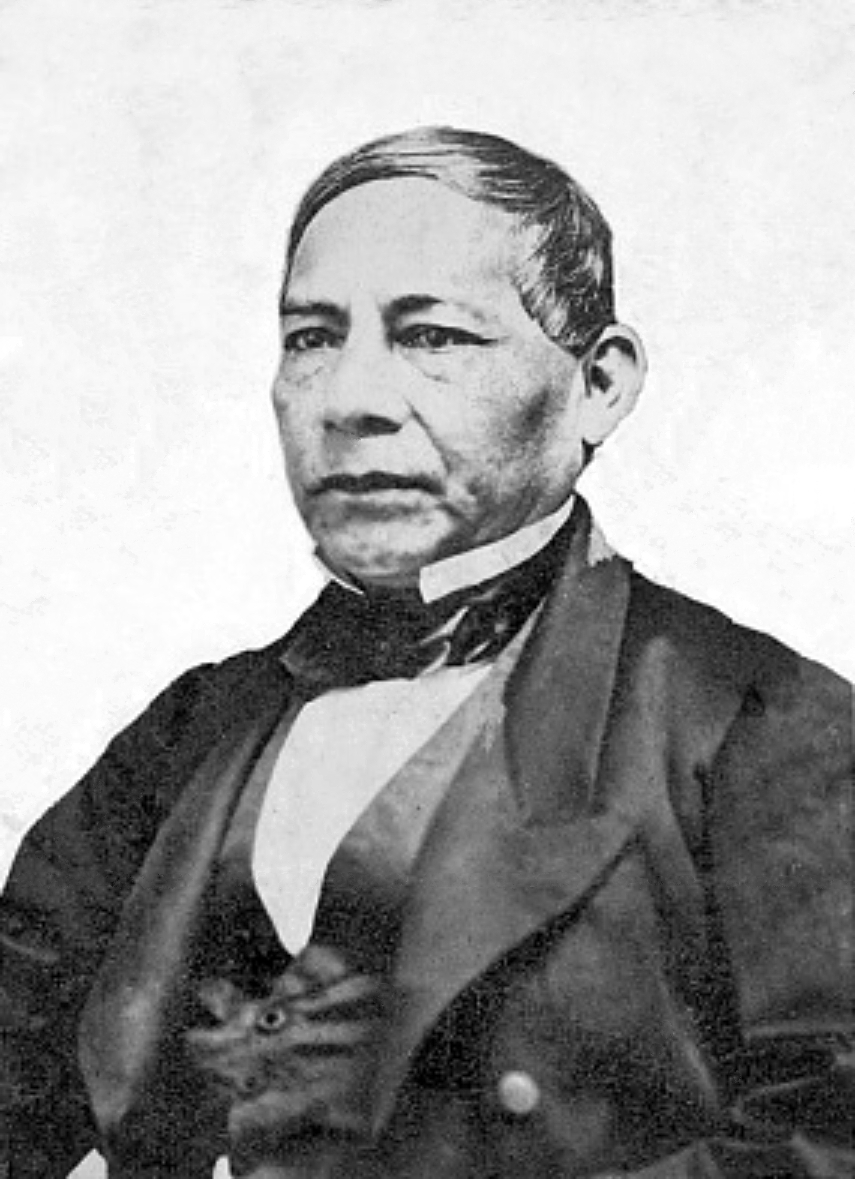
Benito Pablo Juárez García was a Mexican liberal politician and lawyer who served as the 26th president of Mexico from 1858 until his death in office in 1872. A Zapotec, he was the first indigenous president of Mexico and the first indigenous head of state in the postcolonial Americas.

Mexico City is the capital and largest city of Mexico, and the most populous city in North America. One of the world's alpha cities, it is located in the Valley of Mexico within the high Mexican central plateau, at an altitude of 2,240 meters (7,350 ft). The city has 16 boroughs or demarcaciones territoriales, which are in turn divided into neighborhoods or colonias.
The first Polish stamp is issued, replacing the Russian stamps previously in use.
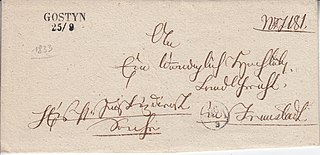
Poczta Polska, the Polish postal service, was founded in 1558 and postal markings were first introduced in 1764. The three partitions of Poland in 1772, 1793 and 1795 saw the independent nation of Poland disappear. The postal services in the areas occupied by Germany and Austria were absorbed into those countries' postal services. In 1772 the area occupied by Austria was created into the Kingdom of Galicia, a part of the Austrian Empire. This lasted till 1918. The Duchy of Warsaw was created briefly, between 1807 and 1813, by Napoleon I of France, from Polish lands ceded by the Kingdom of Prussia under the terms of the Treaties of Tilsit. In 1815, following Napoleons' defeat in 1813, the Congress of Vienna, created Congress Poland out of the Duchy of Warsaw and also established the Free City of Kraków. Congress Poland was placed under the control of Russia and the postal service was given autonomy in 1815. In 1851 the postal service was put under the control of the Russian post office department regional office in St Petersburg. In 1855 control was restored for a while to the Congress Kingdom but following the uprising in 1863 again came under Russian control from 1866 and continued until World War I. In November 1918 the Second Polish Republic was created.

This a survey of the postage stamps and postal history of the Russian Empire, the Soviet Union and the modern Russian Federation.
The world's first "Mercy" Hospital is founded in Pittsburgh, United States, by a group of Sisters of Mercy from Ireland; the name will go on to grace over 30 major hospitals throughout the world.

UPMC Mercy is a main hospital facility of the University of Pittsburgh Medical Center (UPMC) and is located in the Uptown section of the city of Pittsburgh, Pennsylvania, adjacent to Duquesne University, and a few blocks from the PPG Paints Arena and downtown Pittsburgh. It is the first chartered hospital to have been founded in the city of Pittsburgh and it is also the first hospital in the world to have been established by the Sisters of Mercy. It is also the first teaching hospital in the region, accepting residents to teaching positions beginning in 1848, one year after opening its doors.
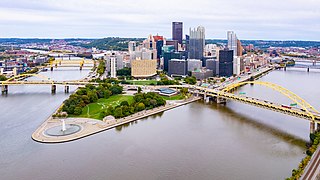
Pittsburgh is a city in the Commonwealth of Pennsylvania and the county seat of Allegheny County. It is the second-most populous city in Pennsylvania, behind Philadelphia, and 68th-largest city in the U.S. with a population of 302,971 as of the 2020 census. The city anchors the Pittsburgh metropolitan area of Western Pennsylvania; its population of 2.37 million is the largest in both the Ohio Valley and Appalachia, the second-largest in Pennsylvania, and the 27th-largest in the U.S. It is the principal city of the greater Pittsburgh–New Castle–Weirton combined statistical area that extends into Ohio and West Virginia.
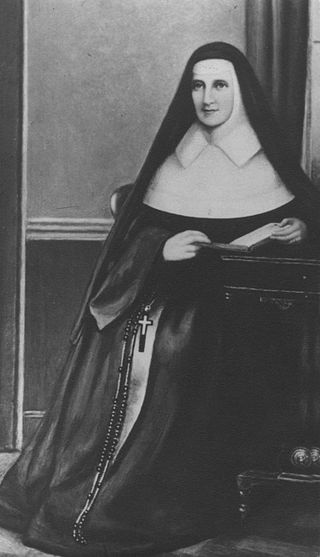
The Sisters of Mercy is a religious institute of Catholic women founded in 1831 in Dublin, Ireland, by Catherine McAuley. As of 2019, the institute had about 6200 sisters worldwide, organized into a number of independent congregations. They also started many education and health care facilities around the world.
Most of Germany forms the Zollverein customs union, the first such union between sovereign states.

The Zollverein, or German Customs Union, was a coalition of German states formed to manage tariffs and economic policies within their territories. Organized by the 1833 Zollverein treaties, it formally started on 1 January 1834. However, its foundations had been in development from 1818 with the creation of a variety of custom unions among the German states. By 1866, the Zollverein included most of the German states. The Zollverein was not part of the German Confederation (1815-1866).
The Greek Constitution of 1822 is adopted by the First National Assembly at Epidaurus.
The Greek Constitution of 1822 was a document adopted by the First National Assembly of Epidaurus on 1 January 1822. Formally it was the Provisional Regime of Greece, sometimes translated as Temporary Constitution of Greece. Considered to be the first constitution of Modern Greece, it was an attempt to achieve temporary governmental and military organisation until the future establishment of a national parliament."All the indigenous inhabitants of the Greek Territory who believe in Christ are Greeks."

The First National Assembly of Epidaurus was the first meeting of the Greek National Assembly, a national representative political gathering of the Greek revolutionaries.
Frankenstein; or, The Modern Prometheus, a novel by the British author Mary Shelley, was first published anonymously in London.

Frankenstein; or, The Modern Prometheus is an 1818 novel written by English author Mary Shelley. Frankenstein tells the story of Victor Frankenstein, a young scientist who creates a sapient creature in an unorthodox scientific experiment. Shelley started writing the story when she was 18, and the first edition was published anonymously in London on 1 January 1818, when she was 20. Her name first appeared in the second edition, which was published in Paris in 1821.

Mary Wollstonecraft Shelley was an English novelist who wrote the Gothic novel Frankenstein; or, The Modern Prometheus (1818), which is considered an early example of science fiction. She also edited and promoted the works of her husband, the Romantic poet and philosopher Percy Bysshe Shelley. Her father was the political philosopher William Godwin and her mother was the philosopher and women's rights advocate Mary Wollstonecraft.
Major-General Lachlan Macquarie officially becomes Governor of New South Wales.

Major General Lachlan Macquarie, CB was a British Army officer and colonial administrator from Scotland. Macquarie served as the fifth Governor of New South Wales from 1810 to 1821, and had a leading role in the social, economic, and architectural development of the colony. He is considered by historians to have had a crucial influence on the transition of New South Wales from a penal colony to a free settlement and therefore to have played a major role in the shaping of Australian society in the early nineteenth century.
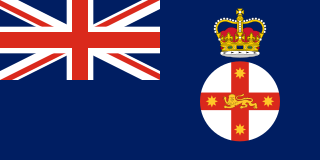
The governor of New South Wales is the viceregal representative of the Australian monarch, King Charles III, in the state of New South Wales. In an analogous way to the governor-general of Australia at the national level, the governors of the Australian states perform constitutional and ceremonial functions at the state level. The governor is appointed by the king on the advice of the premier of New South Wales, and serves in office for an unfixed period of time—known as serving At His Majesty's pleasure—though five years is the general standard of office term. The current governor is retired jurist Margaret Beazley, who succeeded David Hurley on 2 May 2019.
As a result of the lobbying efforts by the abolitionist movement>!== (emblem pictured)-->, the importation of slaves into the United States was officially banned, although slavery itself was not yet abolished.

Abolitionism, or the abolitionist movement, is the movement to end slavery. In Western Europe and the Americas, abolitionism was a historic movement that sought to end the Atlantic slave trade and liberate the enslaved people.

The legal institution of human chattel slavery, comprising the enslavement primarily of Africans and African Americans, was prevalent in the United States of America from its founding in 1776 until 1865, predominantly in the South. Slavery was established throughout European colonization in the Americas. From 1526, during early colonial days, it was practiced in what became Britain's colonies, including the Thirteen Colonies that formed the United States. Under the law, an enslaved person was treated as property that could be bought, sold, or given away. Slavery lasted in about half of U.S. states until abolition. In the decades after the end of Reconstruction, many of slavery's economic and social functions were continued through segregation, sharecropping, and convict leasing.

The Act Prohibiting Importation of Slaves of 1807 is a United States federal law that provided that no new slaves were permitted to be imported into the United States. It took effect on January 1, 1808, the earliest date permitted by the United States Constitution.
The United States bans the importation of slaves.

The Act Prohibiting Importation of Slaves of 1807 is a United States federal law that provided that no new slaves were permitted to be imported into the United States. It took effect on January 1, 1808, the earliest date permitted by the United States Constitution.
The French Republican Calendar is abolished.

The French Republican calendar, also commonly called the French Revolutionary calendar, was a calendar created and implemented during the French Revolution, and used by the French government for about 12 years from late 1793 to 1805, and for 18 days by the Paris Commune in 1871.
French rule ends in Haiti. Haiti becomes the first black-majority republic and second independent country in North America after the United States.
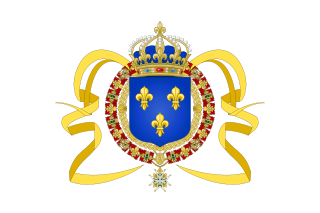
Saint-Domingue was a French colony in the western portion of the Caribbean island of Hispaniola, in the area of modern-day Haiti, from 1659 to 1804. The name derives from the Spanish main city in the island, Santo Domingo, which came to refer specifically to the Spanish-held Captaincy General of Santo Domingo, now the Dominican Republic. The borders between the two were fluid and changed over time until they were finally solidified in the Dominican War of Independence in 1844.
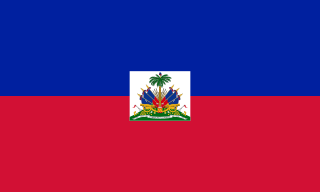
Haiti, officially the Republic of Haiti, and formerly known as Hayti, is a country located on the island of Hispaniola in the Greater Antilles archipelago of the Caribbean Sea, east of Cuba and Jamaica, and south of The Bahamas and the Turks and Caicos Islands. It occupies the western three-eighths of the island which it shares with the Dominican Republic. To its south-west lies the small Navassa Island, which is claimed by Haiti but is disputed as a United States territory under federal administration. Haiti is 27,750 km2 (10,714 sq mi) in size, the third largest country in the Caribbean by area, and has an estimated population of 11.4 million, making it the most populous country in the Caribbean. The capital is Port-au-Prince.

North America is a continent in the Northern Hemisphere and almost entirely within the Western Hemisphere. It is bordered to the north by the Arctic Ocean, to the east by the Atlantic Ocean, to the southeast by South America and the Caribbean Sea, and to the west and south by the Pacific Ocean. Because it is on the North American Tectonic Plate, Greenland is included as a part of North America geographically.

The United States of America, commonly known as the United States or informally America, is a country in North America. It consists of 50 states, a federal district, five major unincorporated territories, nine Minor Outlying Islands, and 326 Indian reservations. It is the third-largest country by both land and total area. The United States shares land borders with Canada to its north and with Mexico to its south. It has maritime borders with the Bahamas, Cuba, Russia, and other nations. With a population of over 331 million, it is the third most populous country in the world. The national capital is Washington, D.C., and the most populous city and financial center is New York City.
Italian astronomer Giuseppe Piazzi discovered the dwarf planet Ceres, naming it after the Roman goddess of agriculture and of motherly love.

Giuseppe Piazzi was an Italian Catholic priest of the Theatine order, mathematician, and astronomer. He established an observatory at Palermo, now the Osservatorio Astronomico di Palermo – Giuseppe S. Vaiana. Perhaps his most famous discovery was the first dwarf planet, Ceres.

Ceres is a dwarf planet in the asteroid belt between the orbits of Mars and Jupiter. It was the first asteroid discovered, on 1 January 1801, by Giuseppe Piazzi at Palermo Astronomical Observatory in Sicily and announced as a new planet. Ceres was later classified as an asteroid and then a dwarf planet – the only one always inside Neptune's orbit.

In ancient Roman religion, Ceres was a goddess of agriculture, grain crops, fertility and motherly relationships. She was originally the central deity in Rome's so-called plebeian or Aventine Triad, then was paired with her daughter Proserpina in what Romans described as "the Greek rites of Ceres". Her seven-day April festival of Cerealia included the popular Ludi Ceriales. She was also honoured in the May lustratio of the fields at the Ambarvalia festival, at harvest-time, and during Roman marriages and funeral rites. She is usually depicted as a mature woman.
Pursuant to the Acts of Union 1800, Great Britain and Ireland merged to become the United Kingdom of Great Britain and Ireland.

The Acts of Union 1800 were parallel acts of the Parliament of Great Britain and the Parliament of Ireland which united the Kingdom of Great Britain and the Kingdom of Ireland to create the United Kingdom of Great Britain and Ireland. The acts came into force on 1 January 1801, and the merged Parliament of the United Kingdom had its first meeting on 22 January 1801.

The United Kingdom of Great Britain and Ireland was a sovereign state in the British Isles that existed between 1801 and 1922, when it included all of Ireland. It was established by the Acts of Union 1800, which merged the Kingdom of Great Britain and the Kingdom of Ireland into a unified state. The establishment of the Irish Free State in 1922 led to the remainder later being renamed the United Kingdom of Great Britain and Northern Ireland in 1927.
The legislative union of Kingdom of Great Britain and Kingdom of Ireland is completed, and the United Kingdom of Great Britain and Ireland is proclaimed.

The Kingdom of Great Britain was a sovereign country in Western Europe from 1 May 1707 to the end of 31 December 1800. The state was created by the 1706 Treaty of Union and ratified by the Acts of Union 1707, which united the kingdoms of England and Scotland to form a single kingdom encompassing the whole island of Great Britain and its outlying islands, with the exception of the Isle of Man and the Channel Islands. The unitary state was governed by a single parliament at the Palace of Westminster, but distinct legal systems – English law and Scots law – remained in use.
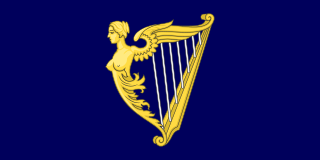
The Kingdom of Ireland was a monarchy on the island of Ireland that was a client state of England and then of Great Britain. It existed from 1542 until 1801. It was ruled by the monarchs of England and then of Great Britain, and administered from Dublin Castle by a viceroy appointed by the English king: the Lord Deputy of Ireland. It had a parliament, composed of Anglo-Irish and native nobles. From 1661 until 1801, the administration controlled an army. A Protestant state church, the Church of Ireland, was established. Although styled a kingdom, for most of its history it was, de facto, an English dependency. This status was enshrined in Poynings' Law and in the Declaratory Act of 1719.

The United Kingdom of Great Britain and Ireland was a sovereign state in the British Isles that existed between 1801 and 1922, when it included all of Ireland. It was established by the Acts of Union 1800, which merged the Kingdom of Great Britain and the Kingdom of Ireland into a unified state. The establishment of the Irish Free State in 1922 led to the remainder later being renamed the United Kingdom of Great Britain and Northern Ireland in 1927.
Ceres, the largest and first known object in the Asteroid belt, is discovered by Giuseppe Piazzi.

Ceres is a dwarf planet in the asteroid belt between the orbits of Mars and Jupiter. It was the first asteroid discovered, on 1 January 1801, by Giuseppe Piazzi at Palermo Astronomical Observatory in Sicily and announced as a new planet. Ceres was later classified as an asteroid and then a dwarf planet – the only one always inside Neptune's orbit.

The asteroid belt is a torus-shaped region in the Solar System, located roughly between the orbits of the planets Jupiter and Mars. It contains a great many solid, irregularly shaped bodies, of many sizes, but much smaller than planets, called asteroids or minor planets. This asteroid belt is also called the main asteroid belt or main belt to distinguish it from other asteroid populations in the Solar System such as near-Earth asteroids and trojan asteroids.

Giuseppe Piazzi was an Italian Catholic priest of the Theatine order, mathematician, and astronomer. He established an observatory at Palermo, now the Osservatorio Astronomico di Palermo – Giuseppe S. Vaiana. Perhaps his most famous discovery was the first dwarf planet, Ceres.
Quasi-War: An American convoy of four merchant vessels escorted by a schooner was attacked by a squadron of armed barges manned by Haitians.

The Quasi-War was an undeclared naval war fought from 1798 to 1800 between the United States and the French First Republic, primarily in the Caribbean and off the East Coast of the United States. The ability of Congress to authorize military action without a formal declaration of war was later confirmed by the Supreme Court and formed the basis of many similar actions since, including American participation in the Vietnam War and the 1991 Gulf War.

A convoy is a group of vehicles, typically motor vehicles or ships, traveling together for mutual support and protection. Often, a convoy is organized with armed defensive support and can help maintain cohesion within a unit. It may also be used in a non-military sense, for example when driving through remote areas.
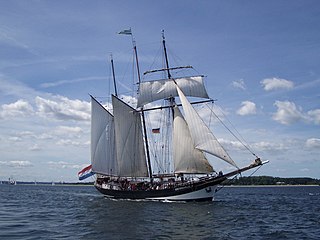
A schooner is a type of sailing vessel defined by its rig: fore-and-aft rigged on all of two or more masts and, in the case of a two-masted schooner, the foremast generally being shorter than the mainmast. A common variant, the topsail schooner also has a square topsail on the foremast, to which may be added a topgallant. Differing definitions leave uncertain whether the addition of a fore course would make such a vessel a brigantine. Many schooners are gaff-rigged, but other examples include Bermuda rig and the staysail schooner.
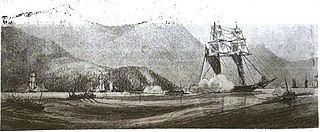
The action of 1 January 1800 was a naval battle of the Quasi-War that took place off the coast of present-day Haiti, near the island of Gonâve in the Bight of Léogâne. The battle was fought between an American convoy of four merchant vessels escorted by the United States naval schooner USS Experiment, and a squadron of armed barges manned by Haitians known as picaroons.

Barge nowadays generally refers to a flat-bottomed inland waterway vessel which does not have its own means of mechanical propulsion. The first modern barges were pulled by tugs, but nowadays most are pushed by pusher boats, or other vessels. The term barge has a rich history, and therefore there are many other types of barges.
The first edition of The Times of London, previously The Daily Universal Register, is published.

The Times is a British daily national newspaper based in London. It began in 1785 under the title The Daily Universal Register, adopting its current name on 1 January 1788. The Times and its sister paper The Sunday Times are published by Times Newspapers, since 1981 a subsidiary of News UK, in turn wholly owned by News Corp. The Times and The Sunday Times, which do not share editorial staff, were founded independently, and have only had common ownership since 1966. In general, the political position of The Times is considered to be centre-right.
The Times began publication in London as The Daily Universal Register.

The Times is a British daily national newspaper based in London. It began in 1785 under the title The Daily Universal Register, adopting its current name on 1 January 1788. The Times and its sister paper The Sunday Times are published by Times Newspapers, since 1981 a subsidiary of News UK, in turn wholly owned by News Corp. The Times and The Sunday Times, which do not share editorial staff, were founded independently, and have only had common ownership since 1966. In general, the political position of The Times is considered to be centre-right.
American Revolutionary War: One thousand five hundred soldiers of the 6th Pennsylvania Regiment under General Anthony Wayne's command rebel against the Continental Army's winter camp in Morristown, New Jersey in the Pennsylvania Line Mutiny of 1781.
The 6th Pennsylvania Regiment, first known as the 5th Pennsylvania Battalion, was a unit of the United States of America (U.S.) Army, raised December 9, 1775, at Philadelphia, Pennsylvania, for service with the Continental Army. The regiment would see action during the New York Campaign, Battle of Brandywine, Battle of Germantown, Battle of Monmouth, and Green Spring. The regiment was disbanded on January 1, 1783.

Anthony Wayne was an American soldier, officer, statesman, and one of the Founding Fathers of the United States. He adopted a military career at the outset of the American Revolutionary War, where his military exploits and fiery personality quickly earned him promotion to brigadier general and the nickname "Mad Anthony". He later served as the Senior Officer of the Army on the Ohio Country frontier and led the Legion of the United States.
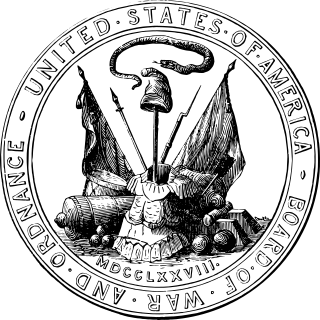
The Continental Army was the army of the United Colonies in the Revolutionary-era United States. It was formed by the Second Continental Congress after the outbreak of the American Revolutionary War, and was established by a resolution of Congress on June 14, 1775. The Continental Army was created to coordinate military efforts of the Colonies in their war for independence against the British, who sought to keep their American lands under control. General George Washington was the commander-in-chief of the army throughout the war.

Morristown is a town and the county seat of Morris County, New Jersey. Morristown has been called "the military capital of the American Revolution" because of its strategic role in the war for independence from Great Britain. Today this history is visible in a variety of locations throughout the town that collectively make up Morristown National Historical Park.

The Pennsylvania Line Mutiny was a mutiny of Continental Army soldiers, who demanded higher pay and better housing conditions, and was the cause of the legend and stories surrounding the American heroine Tempe Wick. The mutiny began on January 1, 1781, and ended with a negotiated settlement on January 8, 1781. The negotiated terms were finally concluded by January 29, 1781. The mutiny was the most successful and important insurrection of Continental Army soldiers during the American Revolutionary War.
American Revolutionary War: The town of Norfolk, Virginia, was burned and destroyed by the combined actions of British and Whig forces.

The American Revolutionary War, also known as the Revolutionary War or American War of Independence, secured American independence from Great Britain. Fighting began on April 19, 1775, followed by the Lee Resolution on July 2, 1776, and the Declaration of Independence on July 4, 1776. The American Patriots were supported by the Kingdom of France and, to a lesser extent, the Dutch Republic and the Spanish Empire, in a conflict taking place in North America, the Caribbean, and the Atlantic Ocean.

Norfolk is an independent city in the Commonwealth of Virginia in the United States. Incorporated in 1705, it had a population of 238,005 as of the 2020 census, making it the third-most populous city in Virginia after neighboring Virginia Beach and Chesapeake, and the 94th-largest city in the nation.

The Burning of Norfolk was an incident that occurred on January 1, 1776, during the American Revolutionary War. British Royal Navy ships in the harbor of Norfolk, Virginia, began shelling the town, and landing parties came ashore to burn specific properties. The town, whose significantly Tory (Loyalist) population had fled, was occupied by Whig (Revolutionary) forces from Virginia and North Carolina. Although these forces worked to drive off the landing parties, they did nothing to impede the progress of the flames, and began burning and looting Tory properties.

Patriots, also known as Revolutionaries, Continentals, Rebels, or American Whigs, were the colonists of the Thirteen Colonies who rejected British rule during the American Revolution, and declared the United States of America an independent nation in July 1776. Their decision was based on the political philosophy of republicanism—as expressed by such spokesmen as Thomas Jefferson, John Adams, and Thomas Paine. They were opposed by the Loyalists, who supported continued British rule.
American Revolutionary War: Norfolk, Virginia is burned by combined Royal Navy and Continental Army action.

The American Revolutionary War, also known as the Revolutionary War or American War of Independence, secured American independence from Great Britain. Fighting began on April 19, 1775, followed by the Lee Resolution on July 2, 1776, and the Declaration of Independence on July 4, 1776. The American Patriots were supported by the Kingdom of France and, to a lesser extent, the Dutch Republic and the Spanish Empire, in a conflict taking place in North America, the Caribbean, and the Atlantic Ocean.

Norfolk is an independent city in the Commonwealth of Virginia in the United States. Incorporated in 1705, it had a population of 238,005 as of the 2020 census, making it the third-most populous city in Virginia after neighboring Virginia Beach and Chesapeake, and the 94th-largest city in the nation.

The Burning of Norfolk was an incident that occurred on January 1, 1776, during the American Revolutionary War. British Royal Navy ships in the harbor of Norfolk, Virginia, began shelling the town, and landing parties came ashore to burn specific properties. The town, whose significantly Tory (Loyalist) population had fled, was occupied by Whig (Revolutionary) forces from Virginia and North Carolina. Although these forces worked to drive off the landing parties, they did nothing to impede the progress of the flames, and began burning and looting Tory properties.

The Royal Navy (RN) is the United Kingdom's naval warfare force. Although warships were used by English and Scottish kings from the early medieval period, the first major maritime engagements were fought in the Hundred Years' War against France. The modern Royal Navy traces its origins to the early 16th century; the oldest of the UK's armed services, it is consequently known as the Senior Service.

The Continental Army was the army of the United Colonies in the Revolutionary-era United States. It was formed by the Second Continental Congress after the outbreak of the American Revolutionary War, and was established by a resolution of Congress on June 14, 1775. The Continental Army was created to coordinate military efforts of the Colonies in their war for independence against the British, who sought to keep their American lands under control. General George Washington was the commander-in-chief of the army throughout the war.
General George Washington hoists the first United States flag, the Grand Union Flag, at Prospect Hill.

George Washington was an American military officer, statesman, and Founding Father who served as the first president of the United States from 1789 to 1797. Appointed by the Continental Congress as commander of the Continental Army, Washington led the Patriot forces to victory in the American Revolutionary War and served as the president of the Constitutional Convention of 1787, which created the Constitution of the United States and the American federal government. Washington has been called the "Father of his Country" for his manifold leadership in the formative days of the country.

The United States of America, commonly known as the United States or informally America, is a country in North America. It consists of 50 states, a federal district, five major unincorporated territories, nine Minor Outlying Islands, and 326 Indian reservations. It is the third-largest country by both land and total area. The United States shares land borders with Canada to its north and with Mexico to its south. It has maritime borders with the Bahamas, Cuba, Russia, and other nations. With a population of over 331 million, it is the third most populous country in the world. The national capital is Washington, D.C., and the most populous city and financial center is New York City.
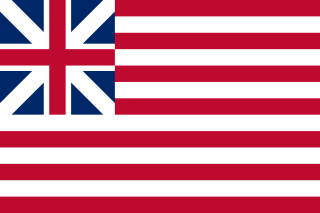
The "Grand Union Flag" is considered to be the first national flag of the United States of America. Similar to the current U.S. flag, the Grand Union Flag has 13 alternating red and white stripes, representative of the Thirteen Colonies. The upper inner corner, or canton, features the Union Jack, or flag of the Kingdom of Great Britain, of which the colonies were subjects.

The Prospect Hill Monument, also occasionally called the Prospect Hill Tower is a stone structure in Somerville, Massachusetts. It is a block away from the heart of Union Square (Somerville), a neighborhood in Somerville. Its name is formally the Prospect Hill Memorial Flag Tower and Observatory.
The hymn "Amazing Grace" was probably first used in a prayer meeting in Olney, England, without the music familiar to modern listeners.

A hymn is a type of song, and partially synonymous with devotional song, specifically written for the purpose of adoration or prayer, and typically addressed to a deity or deities, or to a prominent figure or personification. The word hymn derives from Greek ὕμνος (hymnos), which means "a song of praise". A writer of hymns is known as a hymnist. The singing or composition of hymns is called hymnody. Collections of hymns are known as hymnals or hymn books. Hymns may or may not include instrumental accompaniment.
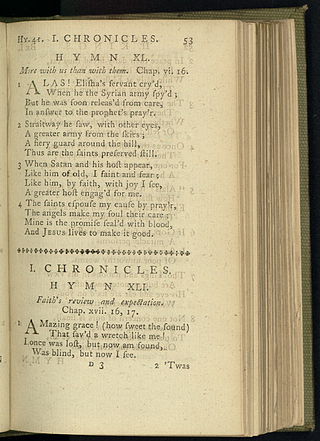
"Amazing Grace" is a Christian hymn published in 1779 with words written in 1772 by English Anglican clergyman and poet John Newton (1725–1807). It is an immensely popular hymn, particularly in the United States, where it is used for both religious and secular purposes.

Olney is a market town and civil parish in the unitary authority area of the City of Milton Keynes in Buckinghamshire, England. At the 2011 Census, it had a population of 6,477 people. It lies on the River Great Ouse and is the northernmost town in Buckinghamshire, close to the borders of Bedfordshire and Northamptonshire, and equidistant from Northampton, Bedford, Wellingborough and Central Milton Keynes. It is a popular tourist destination, perhaps best known for the § Olney Pancake Race and for the Olney Hymns by William Cowper and John Newton.
The hymn that became known as "Amazing Grace", then titled "1 Chronicles 17:16–17", is first used to accompany a sermon led by John Newton in the town of Olney, Buckinghamshire, England.

"Amazing Grace" is a Christian hymn published in 1779 with words written in 1772 by English Anglican clergyman and poet John Newton (1725–1807). It is an immensely popular hymn, particularly in the United States, where it is used for both religious and secular purposes.
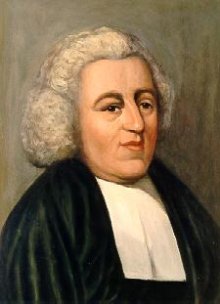
John Newton was an English evangelical Anglican cleric and slavery abolitionist. He had previously been a captain of slave ships and an investor in the slave trade. He served as a sailor in the Royal Navy and was himself enslaved for a time in West Africa. He is noted for being author of the hymns Amazing Grace and Glorious Things of Thee Are Spoken.

Olney is a market town and civil parish in the unitary authority area of the City of Milton Keynes in Buckinghamshire, England. At the 2011 Census, it had a population of 6,477 people. It lies on the River Great Ouse and is the northernmost town in Buckinghamshire, close to the borders of Bedfordshire and Northamptonshire, and equidistant from Northampton, Bedford, Wellingborough and Central Milton Keynes. It is a popular tourist destination, perhaps best known for the § Olney Pancake Race and for the Olney Hymns by William Cowper and John Newton.
The first traveler's cheques, which could be used in 90 European cities, are issued by the London Credit Exchange Company.

A traveller's cheque is a medium of exchange that can be used in place of hard currency. They can be denominated in one of a number of major world currencies and are preprinted, fixed-amount cheques designed to allow the person signing it to make an unconditional payment to someone else as a result of having paid the issuer for that privilege.
Bouvet Island in the South Atlantic Ocean, the most remote island in the world, was discovered by French explorer Jean-Baptiste Charles Bouvet de Lozier.
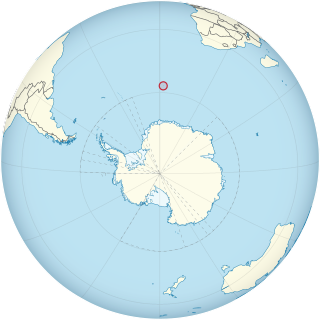
Bouvet Island is an island claimed by Norway, and declared an uninhabited protected nature reserve. It is a subantarctic volcanic island, situated in the South Atlantic Ocean at the southern end of the Mid-Atlantic Ridge, making it the world's most remote island. It is not part of the southern region covered by the Antarctic Treaty System.
This article lists extreme locations on Earth that hold geographical records or are otherwise known for their geophysical or meteorological superlatives. All of these locations are Earth-wide extremes; extremes of individual continents or countries are not listed.

Jean-Baptiste Charles Bouvet de Lozier was a French sailor, explorer, and governor of the Mascarene Islands.
Bouvet Island, the world's remotest island, is discovered by French explorer Jean-Baptiste Charles Bouvet de Lozier.

Bouvet Island is an island claimed by Norway, and declared an uninhabited protected nature reserve. It is a subantarctic volcanic island, situated in the South Atlantic Ocean at the southern end of the Mid-Atlantic Ridge, making it the world's most remote island. It is not part of the southern region covered by the Antarctic Treaty System.

Jean-Baptiste Charles Bouvet de Lozier was a French sailor, explorer, and governor of the Mascarene Islands.
John V is proclaimed King of Portugal and the Algarves in Lisbon.

Dom John V, known as the Magnanimous and the Portuguese Sun King, was King of Portugal from 9 December 1706 until his death in 1750. His reign saw the rise of Portugal and its monarchy to new levels of prosperity, wealth, and prestige among European courts.

The Algarve is the southernmost NUTS II region of continental Portugal. It has an area of 4,997 km2 (1,929 sq mi) with 467,495 permanent inhabitants and incorporates 16 municipalities.
Russia begins using the Anno Domini era instead of the Anno Mundi era of the Byzantine Empire.

The terms anno Domini (AD) and before Christ (BC) are used to label or number years in the Julian and Gregorian calendars. The term anno Domini is Medieval Latin and means 'in the year of the Lord', but is often presented using "our Lord" instead of "the Lord", taken from the full original phrase "anno Domini nostri Jesu Christi", which translates to 'in the year of our Lord Jesus Christ'. The form "BC" is specific to English and equivalent abbreviations are used in other languages: the Latin form is Ante Christum natum but is rarely seen.

Anno Mundi, abbreviated as AM or A.M., or Year After Creation, is a calendar era based on the biblical accounts of the creation of the world and subsequent history. Two such calendar eras have seen notable use historically:Since the Middle Ages, the Hebrew calendar has been based on rabbinic calculations of the year of creation from the Hebrew Masoretic Text of the Bible. This calendar is used within Jewish communities for religious purposes and is one of two official calendars in Israel. On the Hebrew calendar, the day begins at sunset. The calendar's epoch, corresponding to the calculated date of the world's creation, is equivalent to sunset on the Julian proleptic calendar date 6 October 3761 BC. The new year begins at Rosh Hashanah, in Tishrei. Anno mundi 5783, or AM 5783 began at sunset on 25 September 2022 according to the Gregorian calendar. The Byzantine calendar was used in the Eastern Roman Empire and many Christian Orthodox countries and Eastern Orthodox Churches and was based on the Septuagint text of the Bible. That calendar is similar to the Julian calendar except that its reference date is equivalent to 1 September 5509 BC on the Julian proleptic calendar.

The Byzantine Empire, also referred to as the Eastern Roman Empire or Byzantium, was the continuation of the Roman Empire in its eastern provinces during Late Antiquity and the Middle Ages, when its capital city was Constantinople. It survived the fragmentation and fall of the Western Roman Empire in the 5th century AD and continued to exist for an additional thousand years until the fall of Constantinople to the Ottoman Empire in 1453. During most of its existence, the empire remained the most powerful economic, cultural, and military force in Europe. The terms "Byzantine Empire" and "Eastern Roman Empire" were coined after the end of the realm; its citizens continued to refer to their empire as the Roman Empire, and to themselves as Romans—a term which Greeks continued to use for themselves into Ottoman times. Although the Roman state continued and its traditions were maintained, modern historians distinguish Byzantium from its earlier incarnation because it was centered on Constantinople, oriented towards Greek rather than Latin culture, and characterised by Eastern Orthodox Christianity.
Charles II is crowned King of Scotland at Scone Palace.

Charles II was King of Scotland from 1649 until 1651, and King of England, Scotland and Ireland from the 1660 Restoration of the monarchy until his death in 1685.
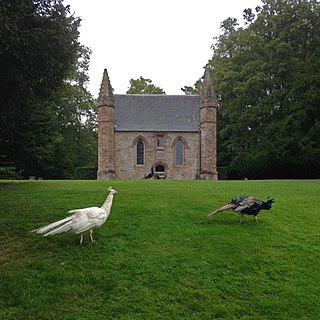
Charles II of England (1630–1685) was crowned King of Scotland at Scone Palace on 1 January 1651. His father, Charles I, had been executed in London at Whitehall Palace on 30 January 1649. Charles arrived in Scotland in June 1650 where there was support for his rule following the Treaty of Breda. Charles resided at old Gowrie House in Perth and held meetings in the summer house by the Tay. The master of the Scottish mint was ordered to strike or cast medallions called "coronation pieces". On Christmas Day 1650, the herald James Balfour announced the discovery of an original manuscript signed by Robert the Bruce in 1326 entailing the Scottish crown to the Stuart dynasty.

The monarchy of the United Kingdom, commonly referred to as the British monarchy, is the constitutional form of government by which a hereditary sovereign reigns as the head of state of the United Kingdom, the Crown Dependencies and the British Overseas Territories. The current monarch is King Charles III, who ascended the throne on 8 September 2022, upon the death of his mother, Queen Elizabeth II.

Scone Palace is a Category A-listed historic house near the village of Scone and the city of Perth, Scotland. Built in red sandstone with a castellated roof, it is an example of the Gothic Revival style in Scotland.
The Masque of Indian and China Knights is performed by courtiers of James VI and I at Hampton Court.
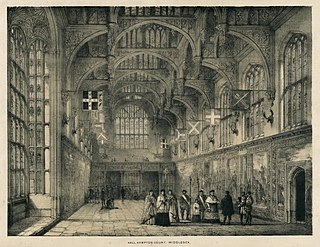
The Masque of Indian and China Knights was performed at Hampton Court in Richmond, England on 1 January 1604. The masque was not published, and no text survives. It was described in a letter written by Dudley Carleton. The historian Leeds Barroll prefers the title, Masque of the Orient Knights.

James VI and I was King of Scotland as James VI from 24 July 1567 and King of England and Ireland as James I from the union of the Scottish and English crowns on 24 March 1603 until his death in 1625. The kingdoms of Scotland and England were individual sovereign states, with their own parliaments, judiciaries, and laws, though both were ruled by James in personal union.
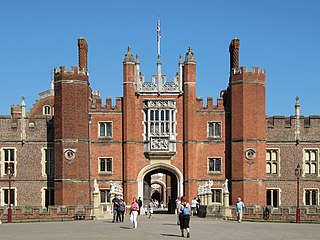
Hampton Court Palace is a Grade I listed royal palace in the London Borough of Richmond upon Thames, 12 miles southwest and upstream of central London on the River Thames. The building of the palace began in 1514 for Cardinal Thomas Wolsey, the chief minister of Henry VIII. In 1529, as Wolsey fell from favour, the cardinal gave the palace to the king to check his disgrace. The palace went on to become one of Henry's most favoured residences; soon after acquiring the property, he arranged for it to be enlarged so that it might more easily accommodate his sizeable retinue of courtiers. Along with St James' Palace, it is one of only two surviving palaces out of the many the king owned. The palace is currently in the possession of King Charles III and the Crown.
Scotland recognises January 1 as the start of the year, instead of March 25.

The Kingdom of Scotland was a sovereign state in northwest Europe traditionally said to have been founded in 843. Its territories expanded and shrank, but it came to occupy the northern third of the island of Great Britain, sharing a land border to the south with the Kingdom of England. It suffered many invasions by the English, but under Robert the Bruce it fought a successful War of Independence and remained an independent state throughout the late Middle Ages. Following the annexation of the Hebrides and the Northern Isles from the Kingdom of Norway in 1266 and 1472 respectively, and the final capture of the Royal Burgh of Berwick by the Kingdom of England in 1482, the territory of the Kingdom of Scotland corresponded to that of modern-day Scotland, bounded by the North Sea to the east, the Atlantic Ocean to the north and west, and the North Channel and Irish Sea to the southwest. In 1603, James VI of Scotland became King of England, joining Scotland with England in a personal union. In 1707, during the reign of Queen Anne, the two kingdoms were united to form the Kingdom of Great Britain under the terms of the Acts of Union.
Croatian nobles elect Ferdinand I, Archduke of Austria as King of Croatia in the 1527 election in Cetin.

Ferdinand I was Holy Roman Emperor from 1556, King of Bohemia, Hungary, and Croatia from 1526, and Archduke of Austria from 1521 until his death in 1564. Before his accession as Emperor, he ruled the Austrian hereditary lands of the Habsburgs in the name of his elder brother, Charles V, Holy Roman Emperor. Also, he often served as Charles' representative in the Holy Roman Empire and developed encouraging relationships with German princes. In addition, Ferdinand also developed valuable relationships with the German banking house of Jakob Fugger and the Catalan bank, Banca Palenzuela Levi Kahana.
This is a complete list of rulers of Croatia under domestic ethnic and elected dynasties during the Croatian Kingdom (925–1918). This article follows the monarch's title number according to Hungarian succession for convenience. For example, the Hungarian monarch Béla IV is according to Croatian succession correctly titled Béla III. This is because Hungarians had a king named Béla prior to the incorporation of Croatia under the Hungarian Crown but the Croats did not.

The 1527 election in Cetin was an assembly of the Croatian Parliament in the Cetin Castle in 1527. It followed a succession crisis in the Kingdom of Hungary caused by the death of Louis II, and which resulted in the Kingdom of Croatia joining the Habsburg monarchy. The charter electing the Habsburg Archduke of Austria Ferdinand I as King of Croatia was confirmed with the seals of six Croatian nobles.
Twenty-year-old Francis, Duke of Brittany, succeeds to the French throne following the death of his father-in-law, Louis XII.

Francis I was King of France from 1515 until his death in 1547. He was the son of Charles, Count of Angoulême, and Louise of Savoy. He succeeded his first cousin once removed and father-in-law Louis XII, who died without a son.

France was ruled by monarchs from the establishment of the Kingdom of West Francia in 843 until the end of the Second French Empire in 1870, with several interruptions.
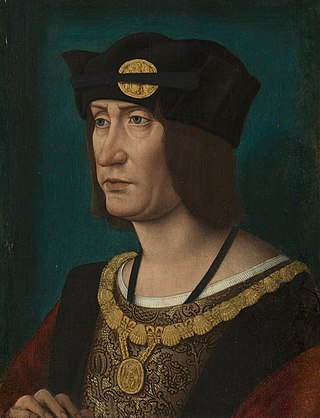
Louis XII was King of France from 1498 to 1515 and King of Naples from 1501 to 1504. The son of Charles, Duke of Orléans, and Maria of Cleves, he succeeded his 2nd cousin once removed and brother in law at the time, Charles VIII, who died without direct heirs in 1498.
The present-day location of Rio de Janeiro, Brazil, is first explored by the Portuguese.

Rio de Janeiro, or simply Rio, is the capital of the state of the same name, Brazil's third-most populous state, and the second-most populous city in Brazil, after São Paulo. Listed by the GaWC as a beta global city, Rio de Janeiro is the sixth-most populous city in the Americas. Part of the city has been designated as a World Heritage Site, named "Rio de Janeiro: Carioca Landscapes between the Mountain and the Sea", on 1 July 2012 as a Cultural Landscape.

Brazil, officially the Federative Republic of Brazil, is the largest country in both South America and Latin America. At 8.5 million square kilometers (3,300,000 sq mi) and with over 217 million people, Brazil is the world's fifth-largest country by area and the seventh most populous. Its capital is Brasília, and its most populous city is São Paulo. The federation is composed of the union of the 26 states and the Federal District. It is the largest country to have Portuguese as an official language and the only one in the Americas; one of the most multicultural and ethnically diverse nations, due to over a century of mass immigration from around the world; and the most populous Roman Catholic-majority country.

The Portuguese Empire, also known as the Portuguese Overseas or the Portuguese Colonial Empire, was composed of the overseas colonies, factories, and the later overseas territories governed by Portugal. It was one of the longest-lived empires in European history, lasting almost six centuries from the conquest of Ceuta in North Africa, in 1415, to the transfer of sovereignty over Macau to China in 1999. The empire began in the 15th century, and from the early 16th century it stretched across the globe, with bases in North and South America, Africa, and various regions of Asia and Oceania.
Portuguese explorer Pedro Álvares Cabral discovers the coast of Brazil.

Pedro Álvares Cabral was a Portuguese nobleman, military commander, navigator and explorer regarded as the European discoverer of Brazil. He was the first human in history to ever be in 4 continents, uniting all of them in his famous voyage of 1500, where he also conducted the first substantial exploration of the northeast coast of South America and claimed it for Portugal. While details of Cabral's early life remain unclear, it is known that he came from a minor noble family and received a good education. He was appointed to head an expedition to India in 1500, following Vasco da Gama's newly-opened route around Africa. The undertaking had the aim of returning with valuable spices and of establishing trade relations in India—bypassing the monopoly on the spice trade then in the hands of Arab, Turkish and Italian merchants. Although the previous expedition of Vasco da Gama to India, on its sea route, had recorded signs of land west of the southern Atlantic Ocean, Cabral led the first known expedition to have touched four continents: Europe, Africa, America, and Asia.

Brazil, officially the Federative Republic of Brazil, is the largest country in both South America and Latin America. At 8.5 million square kilometers (3,300,000 sq mi) and with over 217 million people, Brazil is the world's fifth-largest country by area and the seventh most populous. Its capital is Brasília, and its most populous city is São Paulo. The federation is composed of the union of the 26 states and the Federal District. It is the largest country to have Portuguese as an official language and the only one in the Americas; one of the most multicultural and ethnically diverse nations, due to over a century of mass immigration from around the world; and the most populous Roman Catholic-majority country.
Albert II of Habsburg is crowned King of Hungary.

Albert the Magnanimous KG, elected King of the Romans as Albert II was king of the Holy Roman Empire and a member of the House of Habsburg. By inheritance he became Albert V, Duke of Austria. Through his wife he also became King of Hungary, Croatia, Bohemia, and inherited a claim to the Duchy of Luxembourg.

The King of Hungary was the ruling head of state of the Kingdom of Hungary from 1000 to 1918. The style of title "Apostolic King of Hungary" was endorsed by Pope Clement XIII in 1758 and used afterwards by all Monarchs of Hungary.
Michael VIII Palaiologos is proclaimed co-emperor of the Empire of Nicaea with his ward John IV Laskaris.

Michael VIII Palaiologos or Palaeologus reigned as the co-emperor of the Empire of Nicaea from 1259 to 1261, and as Byzantine emperor from 1261 until his death. Michael VIII was the founder of the Palaiologan dynasty that would rule the Byzantine Empire until the Fall of Constantinople in 1453. He recovered Constantinople from the Latin Empire in 1261 and transformed the Empire of Nicaea into a restored Byzantine Empire. His reign saw considerable recovery of Byzantine power, including the enlargement of the Byzantine army and navy. It would also include the reconstruction of the city of Constantinople, and the increase of its population. Additionally, he re-established the University of Constantinople, which led to what is regarded as the Palaiologan Renaissance between the 13th and 15th centuries.
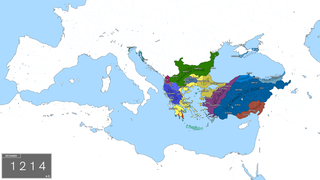
The Empire of Nicaea or the Nicene Empire is the conventional historiographic name for the largest of the three Byzantine Greek rump states founded by the aristocracy of the Byzantine/Roman Empire that fled after Constantinople was occupied by Western European and Venetian armed forces during the Fourth Crusade, a military event known as the Sack of Constantinople. Like other Byzantine rump states that formed after the 1204 fracturing of the empire, such as the Empire of Trebizond and the Empire of Thessalonica, it was a continuation of the eastern half of the Roman Empire that survived well into the medieval period. A fourth state, known in historiography as the Latin Empire, was established by an army of Crusaders and the Republic of Venice after the capture of Constantinople and the surrounding environs.

John IV Doukas Laskaris was emperor of Nicaea from August 16, 1258, to December 25, 1261. This empire was one of the Greek states formed from the remaining fragments of the Byzantine Empire, after the capture of Constantinople by Roman Catholics during the Fourth Crusade in 1204.
Having been pardoned by Eudokia Makrembolitissa, the regent of the Byzantine Empire, for attempting to usurp the throne, Romanos IV Diogenes married her to become Byzantine emperor.

Eudokia Makrembolitissa was a Byzantine empress by her successive marriages to Constantine X Doukas and Romanos IV Diogenes. She acted as regent of her minor son, Michael VII in 1067, and resigned her regency by marriage to Romanos IV Diogenes. When he was deposed in 1071 she resumed the regency for her sons, but was soon forced to resign again.

The Byzantine Empire, also referred to as the Eastern Roman Empire or Byzantium, was the continuation of the Roman Empire in its eastern provinces during Late Antiquity and the Middle Ages, when its capital city was Constantinople. It survived the fragmentation and fall of the Western Roman Empire in the 5th century AD and continued to exist for an additional thousand years until the fall of Constantinople to the Ottoman Empire in 1453. During most of its existence, the empire remained the most powerful economic, cultural, and military force in Europe. The terms "Byzantine Empire" and "Eastern Roman Empire" were coined after the end of the realm; its citizens continued to refer to their empire as the Roman Empire, and to themselves as Romans—a term which Greeks continued to use for themselves into Ottoman times. Although the Roman state continued and its traditions were maintained, modern historians distinguish Byzantium from its earlier incarnation because it was centered on Constantinople, oriented towards Greek rather than Latin culture, and characterised by Eastern Orthodox Christianity.

Romanos IV Diogenes, also known as Romanus IV, was a member of the Byzantine military aristocracy who, after his marriage to the widowed empress Eudokia Makrembolitissa, was crowned Byzantine Emperor and reigned from 1068 to 1071. During his reign he was determined to halt the decline of the Byzantine military and to stop Turkish incursions into the Byzantine Empire, but in 1071 he was captured and his army routed at the Battle of Manzikert. While still captive he was overthrown in a palace coup, and when released he was quickly defeated and detained by members of the Doukas family. In 1072, he was blinded and sent to a monastery, where he died of his wounds.

This is a list of the Byzantine emperors from the foundation of Constantinople in 330 AD, which marks the conventional start of the Eastern Roman Empire, to its fall to the Ottoman Empire in 1453 AD. Only the emperors who were recognized as legitimate rulers and exercised sovereign authority are included, to the exclusion of junior co-emperors (symbasileis) who never attained the status of sole or senior ruler, as well as of the various usurpers or rebels who claimed the imperial title.
Romanos IV Diogenes marries Eudokia Makrembolitissa and is crowned Byzantine Emperor.

Romanos IV Diogenes, also known as Romanus IV, was a member of the Byzantine military aristocracy who, after his marriage to the widowed empress Eudokia Makrembolitissa, was crowned Byzantine Emperor and reigned from 1068 to 1071. During his reign he was determined to halt the decline of the Byzantine military and to stop Turkish incursions into the Byzantine Empire, but in 1071 he was captured and his army routed at the Battle of Manzikert. While still captive he was overthrown in a palace coup, and when released he was quickly defeated and detained by members of the Doukas family. In 1072, he was blinded and sent to a monastery, where he died of his wounds.

Eudokia Makrembolitissa was a Byzantine empress by her successive marriages to Constantine X Doukas and Romanos IV Diogenes. She acted as regent of her minor son, Michael VII in 1067, and resigned her regency by marriage to Romanos IV Diogenes. When he was deposed in 1071 she resumed the regency for her sons, but was soon forced to resign again.

This is a list of the Byzantine emperors from the foundation of Constantinople in 330 AD, which marks the conventional start of the Eastern Roman Empire, to its fall to the Ottoman Empire in 1453 AD. Only the emperors who were recognized as legitimate rulers and exercised sovereign authority are included, to the exclusion of junior co-emperors (symbasileis) who never attained the status of sole or senior ruler, as well as of the various usurpers or rebels who claimed the imperial title.
Grand Prince Stephen I of Hungary is named the first King of Hungary by Pope Sylvester II (probable).

Stephen I, also known as King Saint Stephen, was the last Grand Prince of the Hungarians between 997 and 1000 or 1001, and the first King of Hungary from 1000 or 1001, until his death in 1038. The year of his birth is uncertain, but many details of his life suggest that he was born in, or after, 975, in Esztergom. He was given the pagan name Vajk at birth, but the date of his baptism is unknown. He was the only son of Grand Prince Géza and his wife, Sarolt, who was descended from a prominent family of gyulas. Although both of his parents were baptized, Stephen was the first member of his family to become a devout Christian. He married Gisela of Bavaria, a scion of the imperial Ottonian dynasty.

The King of Hungary was the ruling head of state of the Kingdom of Hungary from 1000 to 1918. The style of title "Apostolic King of Hungary" was endorsed by Pope Clement XIII in 1758 and used afterwards by all Monarchs of Hungary.
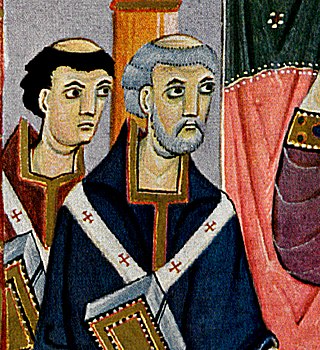
Pope Sylvester II, originally known as Gerbert of Aurillac, was a French-born scholar and teacher who served as the bishop of Rome and ruled the Papal States from 999 to his death. He endorsed and promoted study of Arab and Greco-Roman arithmetic, mathematics and astronomy, reintroducing to Europe the abacus and armillary sphere, which had been lost to Latin Europe since the end of the Greco-Roman era. He is said to be the first in Europe to introduce the decimal numeral system using the Hindu-Arabic numeral system. He is credited with the invention of the first mechanical clock in 996.
Galla Placidia was forced by her brother Honorius into marriage with his magister militum, Constantius III.
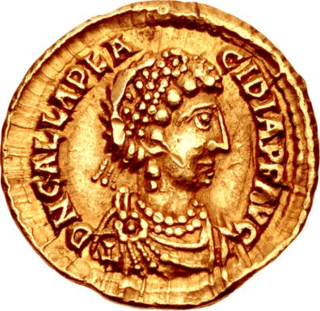
Galla Placidia, daughter of the Roman emperor Theodosius I, was a mother, tutor, and advisor to emperor Valentinian III, and a major force in Roman politics for most of her life. She was queen consort to Ataulf, king of the Visigoths from 414 until his death in 415, briefly empress consort to Constantius III in 421, and managed the government administration as a regent during the early reign of Valentinian III, until her death.

Honorius was Roman emperor from 393 to 423. He was the younger son of emperor Theodosius I and his first wife Aelia Flaccilla. After the death of Theodosius, Honorius ruled the western half of the empire while his brother Arcadius ruled the eastern half. In 410, during Honorius's reign over the Western Roman Empire, Rome was sacked for the first time in almost 800 years.
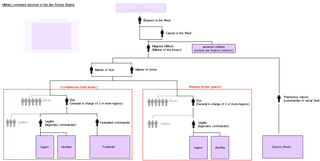
Magister militum was a top-level military command used in the later Roman Empire, dating from the reign of Constantine the Great. The term referred to the senior military officer of the empire. In Greek sources, the term is translated either as strategos or as stratelates.

Constantius III was briefly Western Roman emperor of the West in 421. He earned his position as Emperor due to his capability as a general under Honorius, achieving the rank of magister militum by 411. That same year, he suppressed the revolt of Constantine III, a Roman general who had declared himself emperor. Constantius then went on to lead campaigns against various barbarian groups in Hispania and Gaul, recovering much of both for the Western Roman Empire. Constantius married Honorius's sister Galla Placidia in 417, a sign of his ascendant status, and was proclaimed co-emperor by Honorius on 8 February 421. He reigned for seven months before dying on 2 September 421.
Emperor Honorius forces Galla Placidia into marriage to Constantius, his famous general (magister militum) (probable).

Honorius was Roman emperor from 393 to 423. He was the younger son of emperor Theodosius I and his first wife Aelia Flaccilla. After the death of Theodosius, Honorius ruled the western half of the empire while his brother Arcadius ruled the eastern half. In 410, during Honorius's reign over the Western Roman Empire, Rome was sacked for the first time in almost 800 years.

Galla Placidia, daughter of the Roman emperor Theodosius I, was a mother, tutor, and advisor to emperor Valentinian III, and a major force in Roman politics for most of her life. She was queen consort to Ataulf, king of the Visigoths from 414 until his death in 415, briefly empress consort to Constantius III in 421, and managed the government administration as a regent during the early reign of Valentinian III, until her death.

Constantius III was briefly Western Roman emperor of the West in 421. He earned his position as Emperor due to his capability as a general under Honorius, achieving the rank of magister militum by 411. That same year, he suppressed the revolt of Constantine III, a Roman general who had declared himself emperor. Constantius then went on to lead campaigns against various barbarian groups in Hispania and Gaul, recovering much of both for the Western Roman Empire. Constantius married Honorius's sister Galla Placidia in 417, a sign of his ascendant status, and was proclaimed co-emperor by Honorius on 8 February 421. He reigned for seven months before dying on 2 September 421.

Magister militum was a top-level military command used in the later Roman Empire, dating from the reign of Constantine the Great. The term referred to the senior military officer of the empire. In Greek sources, the term is translated either as strategos or as stratelates.
Saint Telemachus tries to stop a gladiatorial fight in a Roman amphitheatre, and is stoned to death by the crowd. This act impresses the Christian Emperor Honorius, who issues a historic ban on gladiatorial fights.

Year 404 (CDIV) was a leap year starting on Friday of the Julian calendar. At the time, it was known as the Year of the Consulship of Honorius and Aristaenetus. The denomination 404 for this year has been used since the early medieval period, when the Anno Domini calendar era became the prevalent method in Europe for naming years.
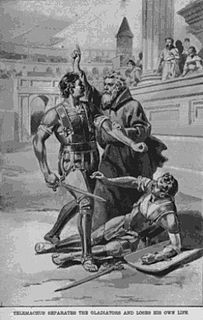
Saint Telemachus was a monk who, according to the Church historian Theodoret, tried to stop a gladiatorial fight in a Roman amphitheatre, and was stoned to death by the crowd. The Christian Emperor Honorius, however, was impressed by the monk's martyrdom and it spurred him to issue a historic ban on gladiatorial fights. Frederick George Holweck gives the year of his death as 391.

A gladiator was an armed combatant who entertained audiences in the Roman Republic and Roman Empire in violent confrontations with other gladiators, wild animals, and condemned criminals. Some gladiators were volunteers who risked their lives and their legal and social standing by appearing in the arena. Most were despised as slaves, schooled under harsh conditions, socially marginalized, and segregated even in death.

An amphitheatre or amphitheater is an open-air venue used for entertainment, performances, and sports. The term derives from the ancient Greek ἀμφιθέατρον, from ἀμφί, meaning "on both sides" or "around" and θέατρον, meaning "place for viewing".

Stoning, or lapidation, is a method of capital punishment where a group throws stones at a person until the subject dies from blunt trauma. It has been attested as a form of punishment for grave misdeeds since ancient times.

Honorius was Roman emperor from 393 to 423. He was the younger son of emperor Theodosius I and his first wife Aelia Flaccilla. After the death of Theodosius, Honorius ruled the western half of the empire while his brother Arcadius ruled the eastern half. In 410, during Honorius's reign over the Western Roman Empire, Rome was sacked for the first time in almost 800 years.
The Senate chooses Pertinax against his will to succeed Commodus as Roman emperor.

Publius Helvius Pertinax was Roman emperor for the first three months of 193. He succeeded Commodus to become the first emperor during the tumultuous Year of the Five Emperors.
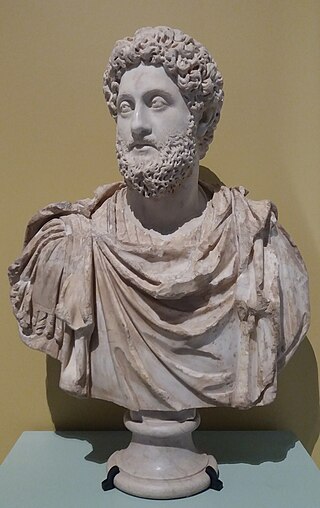
Commodus was a Roman emperor who ruled from 177 to 192. He served jointly with his father Marcus Aurelius from 176 until the latter's death in 180, and thereafter he reigned alone until his assassination. His reign is commonly thought of as marking the end of a golden period of peace in the history of the Roman Empire, known as the Pax Romana.

The Roman emperor was the ruler of the Roman Empire during the imperial period. The emperors used a variety of different titles throughout history. Often when a given Roman is described as becoming "emperor" in English it reflects his taking of the title augustus. Another title often used was caesar, used for heirs-apparent, and imperator, originally a military honorific. Early emperors also used the title princeps civitatis. Emperors frequently amassed republican titles, notably princeps senatus, consul, and pontifex maximus.
The Roman Senate posthumously deifies Julius Caesar.

The Roman Senate was a governing and advisory assembly in ancient Rome. It was one of the most enduring institutions in Roman history, being established in the first days of the city of Rome. It survived the overthrow of the Roman monarchy in 509 BC; the fall of the Roman Republic in the 1st century BC; the division of the Roman Empire in AD 395; and the fall of the Western Roman Empire in 476; Justinian's attempted reconquest of the west in the 6th century, and lasted well into the Eastern Roman Empire's history.

Apotheosis, also called divinization or deification, is the glorification of a subject to divine levels and, commonly, the treatment of a human being, any other living thing, or an abstract idea in the likeness of a deity. The term has meanings in theology, where it refers to a belief, and in art, where it refers to a genre.
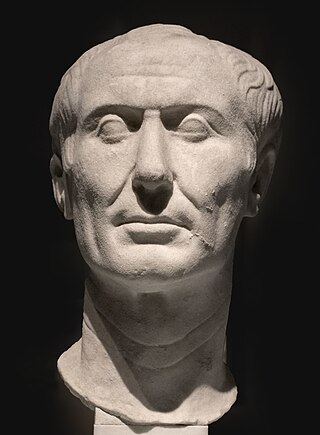
Gaius Julius Caesar, was a Roman general and statesman. A member of the First Triumvirate, Caesar led the Roman armies in the Gallic Wars before defeating his political rival Pompey in a civil war, and subsequently became dictator from 49 BC until his assassination in 44 BC. He played a critical role in the events that led to the demise of the Roman Republic and the rise of the Roman Empire.
The Julian calendar takes effect as the civil calendar of the Roman Empire, establishing January 1 as the new date of the new year.
The Julian calendar, proposed by Roman consul Julius Caesar in 46 BC, was a reform of the Roman calendar. It took effect on 1 January 45 BC, by edict. It was designed with the aid of Greek mathematicians and astronomers such as Sosigenes of Alexandria.
For the first time, Roman consuls begin their year in office on January 1.

A consul held the highest elected political office of the Roman Republic, and ancient Romans considered the consulship the second-highest level of the cursus honorum after that of the censor. Each year, the Centuriate Assembly elected two consuls to serve jointly for a one-year term. The consuls alternated in holding fasces – taking turns leading – each month when both were in Rome and a consul's imperium extended over Rome and all its provinces.
Dan Reeves, American football player and coach (b. 1944) deaths
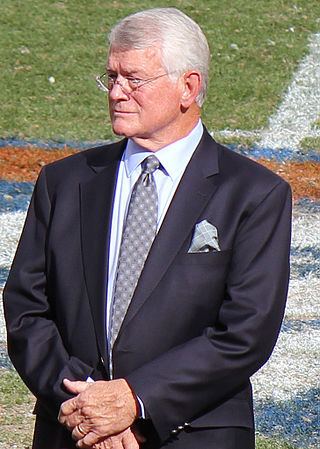
Daniel Edward Reeves was an American football running back and coach in the National Football League (NFL). During his 38 years in the NFL, Reeves participated in nine Super Bowls, the third most for an individual. He was a head coach for 23 seasons, a position he held with the Denver Broncos from 1981 to 1992, the New York Giants from 1993 to 1996, and the Atlanta Falcons from 1997 to 2003. As a player, he spent his eight-season career with the Dallas Cowboys, who signed him as an undrafted free agent in 1965.
Carlos do Carmo, Portuguese fado singer (b. 1939) deaths
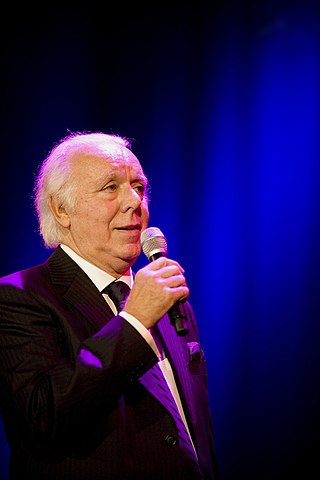
Carlos Manuel de Ascenção do Carmo de Almeida ComIH, better known as Carlos do Carmo, was a Portuguese fado singer.
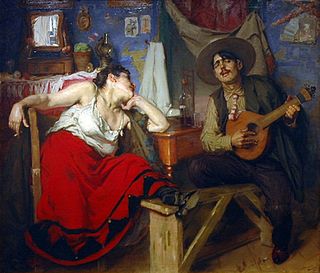
Fado is a music genre that can be traced to the 1820s in Lisbon, Portugal, but probably has much earlier origins. Fado historian and scholar Rui Vieira Nery states that "the only reliable information on the history of fado was orally transmitted and goes back to the 1820s and 1830s at best. But even that information was frequently modified within the generational transmission process that made it reach us today."
Alexander Frater, British travel writer and journalist (b. 1937) deaths
Alexander Russell Frater was a British travel writer and journalist. Described by Miles Kington as 'the funniest man who wrote for Punch since the war', Frater is best known for his various books and for documentaries he wrote and produced for the BBC and ABC.
Barry McDonald, Australian rugby union player (b. 1940) deaths
Barry Stuart McDonald was a Papua New Guinea-born Australian rugby union player who represented Australia.
David Stern, American lawyer and businessman (b. 1942) deaths
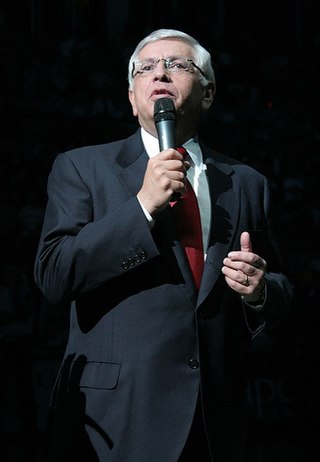
David Joel Stern was an American lawyer and business executive who was the commissioner of the National Basketball Association (NBA) from 1984 to 2014. Stern oversaw NBA basketball's growth into one of the world's most popular sports during the 1990s and 2000s. He is credited with developing and broadening the NBA's audience, especially internationally by setting up training camps, playing exhibition games, and recruiting more international players. In addition, with Stern's guidance the NBA opened 12 offices in cities outside the United States, and broadcast to over 200 territories in over 40 languages. Stern also helped found the Women's National Basketball Association and the NBA G League, the NBA's development league. Under Stern, the NBA launched their digital presence with NBA.com, NBA TV, and NBA League Pass. He also established the NBA's social responsibility program, NBA Cares.
Elmira Minita Gordon, Belizean educator and psychologist (b.1930) deaths
Dame Elmira Minita Gordon was a Belizean educator, psychologist and politician; she served as the first governor general of Belize from its independence in 1981 until 1993. She was the first Belizean to receive a doctorate in psychology. She is one of the few "double dames", having received damehoods in two separate orders: the Order of St Michael and St George and the Royal Victorian Order.
Paul Neville, Australian politician (b. 1940) deaths

Paul Christopher Neville was an Australian politician who was a National Party member of the Australian House of Representatives from March 1993 to August 2013, representing the Division of Hinkler, Queensland. After the Queensland chapters of the Nationals and Liberals merged in 2008 as the Liberal National Party of Queensland, Neville continued to sit with the Nationals in Parliament.
Pegi Young, American singer, songwriter, environmentalist, educator and philanthropist (b. 1952) deaths

Margaret Mary "Pegi" Young was an American singer, songwriter, environmentalist, educator and philanthropist.

1952 (MCMLII) was a leap year starting on Tuesday of the Gregorian calendar, the 1952nd year of the Common Era (CE) and Anno Domini (AD) designations, the 952nd year of the 2nd millennium, the 52nd year of the 20th century, and the 3rd year of the 1950s decade.
Robert Mann, American violinist (b. 1920) deaths

Robert Nathaniel Mann was a violinist, composer, conductor, and founding member of the Juilliard String Quartet, as well as a faculty member at the Manhattan School of Music. Mann, the first violinist at Juilliard, served on the school's string quartet for over fifty years until his retirement in 1997.
Tony Atkinson, British economist (b. 1944) deaths
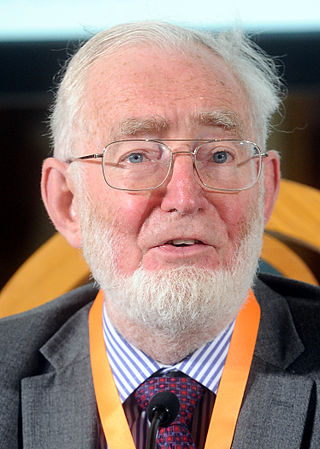
Sir Anthony Barnes Atkinson was a British economist, Centennial Professor at the London School of Economics, and senior research fellow of Nuffield College, Oxford.
Yvon Dupuis, Canadian politician (b. 1926) deaths

Yvon Dupuis, was a Canadian politician.
Derek Parfit, British philosopher (b. 1942) deaths

Derek Antony Parfit was a British philosopher who specialised in personal identity, rationality, and ethics. He is widely considered one of the most important and influential moral philosophers of the late 20th and early 21st centuries.
Fazu Aliyeva, Russian poet and journalist (b. 1932) deaths

Fazu Aliyeva was an Avar-speaking Soviet-born Russian poet, novelist and journalist. She played a significant role in the development of Dagestani in Russian literature. She was also a human rights activist.
Dale Bumpers, American soldier, lawyer, and politician, 38th Governor of Arkansas (b. 1925) deaths
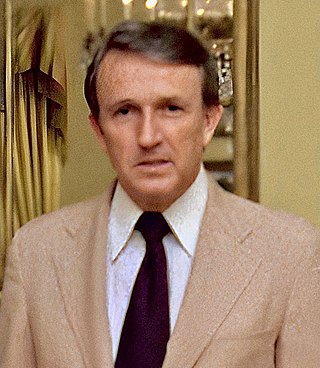
Dale Leon Bumpers was an American lawyer and politician who served as the 38th Governor of Arkansas (1971–1975) and in the United States Senate (1975–1999). He was a member of the Democratic Party. Prior to his death, he was counsel at the Washington, D.C., office of law firm Arent Fox LLP, where his clients included Riceland Foods and the University of Arkansas for Medical Sciences.

The governor of Arkansas is the head of government of the U.S. state of Arkansas. The governor is the head of the executive branch of the Arkansas government and is charged with enforcing state laws. They have the power to either approve or veto bills passed by the Arkansas General Assembly, to convene the legislature, and to grant pardons, except in cases of treason and impeachment.
Vilmos Zsigmond, Hungarian-American cinematographer and producer (b. 1930) deaths

Vilmos Zsigmond ASC was a Hungarian-American cinematographer. His work in cinematography helped shape the look of American movies in the 1970s, making him one of the leading figures in the American New Wave movement.
Mario Cuomo, American lawyer and politician, 52nd Governor of New York (b. 1932) deaths
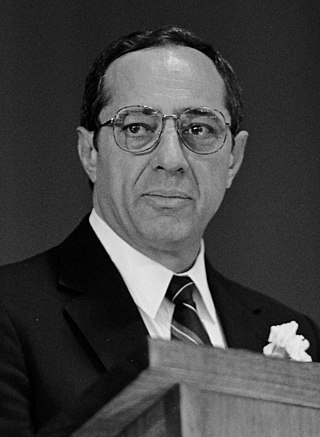
Mario Matthew Cuomo was an American lawyer and politician who served as the 52nd governor of New York for three terms, from 1983 to 1994. A member of the Democratic Party, Cuomo previously served as the lieutenant governor of New York from 1979 to 1982 and the secretary of State of New York from 1975 to 1978. He was the father of former New York governor Andrew Cuomo and former CNN news anchor Christopher Cuomo.

The governor of New York is the head of government of the U.S. state of New York. The governor is the head of the executive branch of New York's state government and the commander-in-chief of the state's military forces. The governor has a duty to enforce state laws and the power to either approve or veto bills passed by the New York Legislature, to convene the legislature and grant pardons, except in cases of impeachment and treason. The governor is the highest paid governor in the country.
Donna Douglas, American actress (b. 1932) deaths

Donna Douglas was an American actress and singer, known for her role as Elly May Clampett on The Beverly Hillbillies (1962–1971). Following her acting career, Douglas became a real-estate agent, gospel singer, inspirational speaker, and author of books for children and adults.
Omar Karami, Lebanese lawyer and politician, 58th Prime Minister of Lebanon (b. 1934) deaths

Omar Abdul Hamid Karami was the 29th prime minister of Lebanon, who served two separate terms. He was Prime Minister for the first time from 24 December 1990, when Selim al-Hoss gave up power, until May 1992, when he resigned due to economic instability. He was again Prime Minister from October 2004 to April 2005.

The Prime Minister of Lebanon, officially the President of the Council of Ministers, is the head of government and the head of the Council of Ministers of Lebanon. The Prime Minister is appointed by the president of Lebanon, with the consent of the plurality of the members of the Parliament of Lebanon. By convention, the office holder is always a Sunni Muslim.
Boris Morukov, Russian physician and astronaut (b. 1950) deaths

Boris Vladimirovich Morukov was a Russian physician at the State Research Center RF-Institute for Biomedical Problems (IBMP). He trained with the Russian Federal Space Agency as a research-cosmonaut and flew aboard NASA Space Shuttle mission STS-106 as a mission specialist.
Higashifushimi Kunihide, Japanese monk and educator (b. 1910) deaths

Count Higashifushimi Kunihide was the titular head of the Higashifushimi-no-miya, an extinct branch of the Imperial House of Japan, and a Buddhist monk. He was the youngest brother of Empress Kōjun and was the maternal uncle of Emperor Emeritus Akihito. If he had kept his imperial status, at the time of his death he would have been the oldest-ever member of the Japanese imperial family. His Dharma name was Jigō (慈洽).
William Mgimwa, Tanzanian banker and politician, 13th Tanzanian Minister of Finance (b. 1950) deaths

William Augustao Mgimwa was a Tanzanian CCM politician and Member of Parliament for Kalenga constituency from 2010 to 2014. He also served as Tanzania's Minister of Finance from 2012 to 2014.

The Minister of Finance is the head of the Ministry of Finance and Economic Affairs of the Government of Tanzania.
Juanita Moore, American actress (b. 1914) deaths
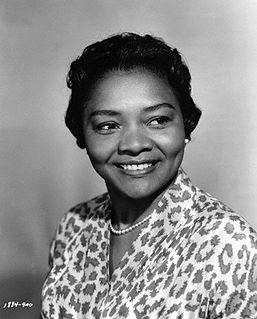
Juanita Moore was an American film, television, and stage actress.
Christopher Martin-Jenkins, English journalist (b. 1945) deaths

Christopher Dennis Alexander Martin-Jenkins, MBE, also known as CMJ, was a British cricket journalist and a President of MCC. He was also the longest serving commentator for Test Match Special (TMS) on BBC Radio, from 1973 until diagnosed with terminal cancer in January 2012.
Patti Page, American singer and actress (b. 1927) deaths

Clara Ann Fowler, known professionally as Patti Page, was an American singer and actress. Primarily known for pop and country music, she was the top-charting female vocalist and best-selling female artist of the 1950s, selling over 100 million records during a six-decade-long career. She was often introduced as "the Singin' Rage, Miss Patti Page". New York WNEW disc-jockey William B. Williams introduced her as "A Page in my life called Patti".
Kiro Gligorov, Bulgarian-Macedonian lawyer and politician, 1st President of the Republic of Macedonia (b. 1917) deaths
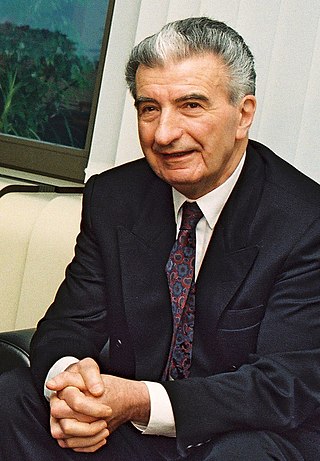
Kiro Gligorov was a Macedonian politician who served as the first President of the Republic of Macedonia from 1991 to 1999.
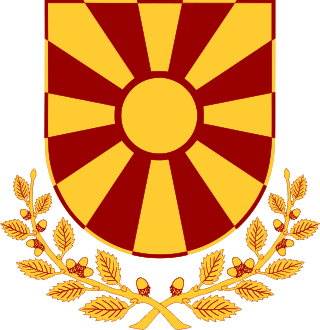
The President of the Republic of North Macedonia is the head of state of North Macedonia.
Nay Win Maung, Burmese physician, businessman, and activist (b. 1962) deaths

Nay Win Maung was a Burmese physician, businessman and pro-democracy activist.
Tommy Mont, American football player and coach (b. 1922) deaths

Thomas Allison Mont was an American educator, university administrator, college football coach, and National Football League (NFL) player. He played quarterback for the Washington Redskins as a back-up behind Sammy Baugh for three seasons. Mont served as the head football coach for three years at the University of Maryland and eighteen years at DePauw University. He also served as the DePauw athletic director for fifteen years.
Lhasa de Sela, American-Mexican singer-songwriter (b. 1972) deaths

Lhasa de Sela, also known by the mononym Lhasa, was an American-Canadian singer-songwriter who was raised in Mexico and the United States and divided her adult life between Canada and France. Her first album, La Llorona, went Platinum in Canada and brought Lhasa a Félix Award and a Juno Award.
Claiborne Pell, American politician (b. 1918) deaths
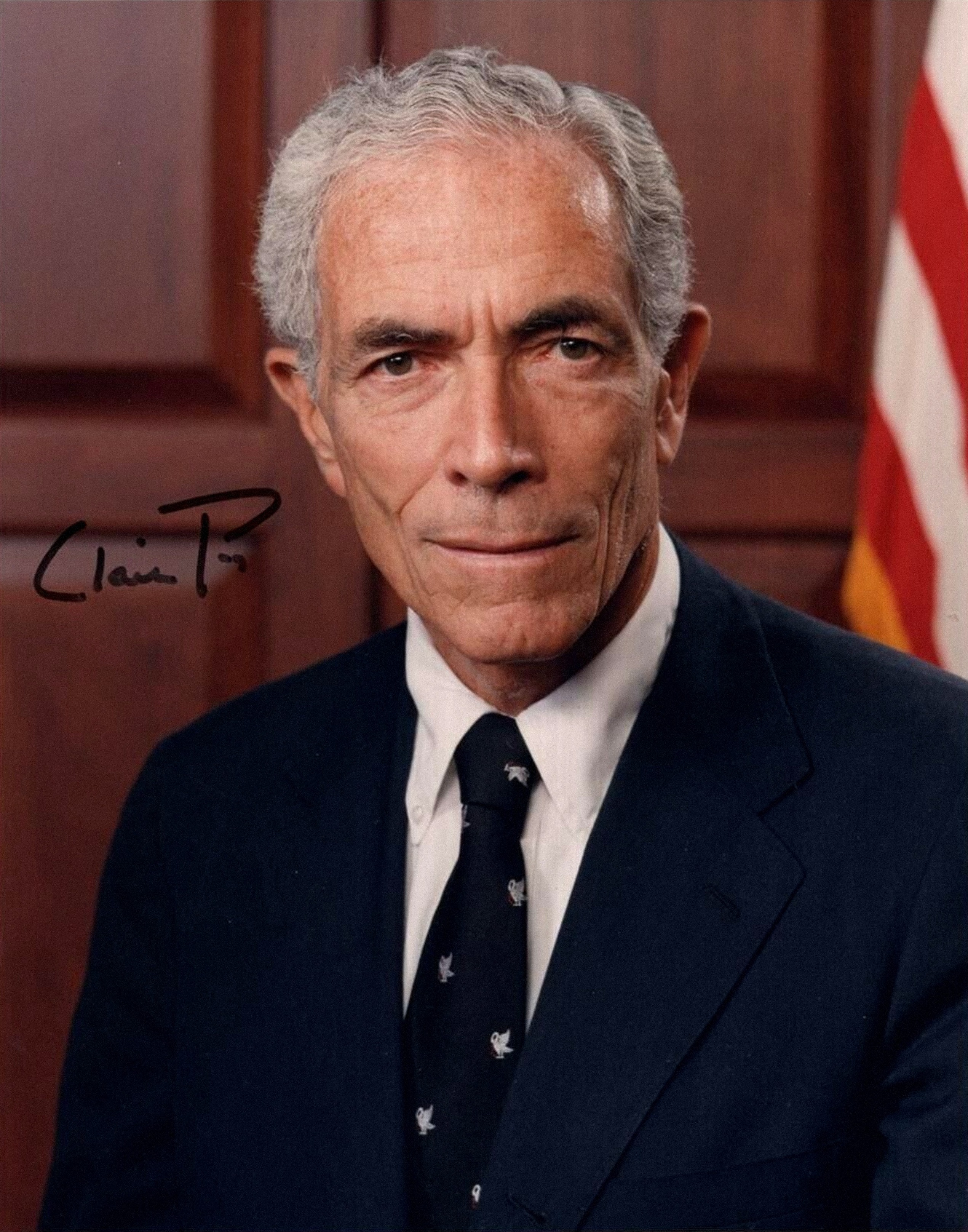
Claiborne de Borda Pell was an American politician and writer who served as a U.S. Senator from Rhode Island for six terms from 1961 to 1997. He was the sponsor of the 1972 bill that reformed the Basic Educational Opportunity Grant, which provides financial aid funding to American college students; the grant was given Pell's name in 1980 in honor of his work in education legislation.
Pratap Chandra Chunder, Indian educator and politician (b. 1919) deaths

Pratap Chandra Chunder was a union minister of India, educationist and author. He served in the Morarji Desai Ministry from 1977 to 1980 as a cabinet minister with education and social welfare portfolios.
Roland Levinsky, South African-English biochemist and academic (b. 1943) deaths

Professor Roland Levinsky was an academic researcher in biomedicine and a university senior manager. His last post, which he held at the time of his death, was as vice-chancellor of the University of Plymouth in the United Kingdom.
Tillie Olsen, American short story writer (b. 1912) deaths

Tillie Lerner Olsen was an American writer who was associated with the political turmoil of the 1930s and the first generation of American feminists.
Harry Magdoff, American economist and journalist (b. 1913) deaths

Harry Samuel Magdoff was a prominent American socialist commentator. He held several administrative positions in government during the presidency of Franklin D. Roosevelt and later became co-editor of the Marxist publication Monthly Review.
Shirley Chisholm, American educator and politician (b. 1924) deaths
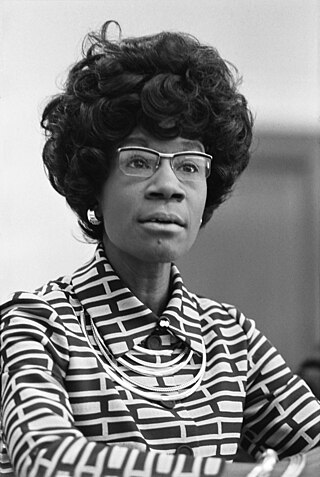
Shirley Anita Chisholm was an American politician who, in 1968, became the first black woman to be elected to the United States Congress. Chisholm represented New York's 12th congressional district, a district centered on Bedford–Stuyvesant, for seven terms from 1969 to 1983. In 1972, she became the first black candidate for a major-party nomination for President of the United States, and the first woman to run for the Democratic Party's nomination.
Daria Trubnikova, Russian rhythmic gymnast births

Daria Sergeyevna Trubnikova is a Russian individual rhythmic gymnast. She is the 2018 European Junior Clubs and Team champion. On national level she is a 2018 Russian Junior all-around bronze medalist. She is the 2018 Youth Olympic Games individual all-around champion, the 2019 Grand Prix Final all-around gold medallist and the 2021 World Cup Baku all-around gold medallist.
Joe Foss, American soldier, pilot, and politician, 20th Governor of South Dakota (b. 1915) deaths

Joseph Jacob Foss was a United States Marine Corps major and a leading Marine fighter ace in World War II. He received the Medal of Honor in recognition of his role in air combat during the Guadalcanal Campaign. In postwar years, he was an Air National Guard brigadier general, served as the 20th Governor of South Dakota (1955–1959), president of the National Rifle Association (NRA) and the first commissioner of the American Football League. He also was a television broadcaster.

The governor of South Dakota is the head of government of South Dakota. The governor is elected to a four-year term in even years when there is no presidential election. The current governor is Kristi Noem, a member of the Republican Party who took office on January 5, 2019.
Julia Phillips, American film producer and author (b. 1944) deaths
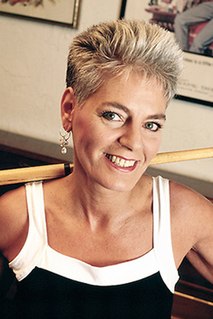
Julia Phillips was an American film producer and author. She co-produced with her husband Michael three prominent films of the 1970s — The Sting, Taxi Driver, and Close Encounters of the Third Kind — and was the first female producer to win an Academy Award for Best Picture, received for The Sting.
Ray Walston, American actor (b. 1914) deaths

Herman Raymond Walston was an American actor and comedian, well known as the title character on My Favorite Martian. His other major film, television, and stage roles included Luther Billis, Mr. Applegate, Orville J. Spooner, J. J. Singleton, Poopdeck Pappy (Popeye), Mr. Hand, Candy, Glen Bateman, and Judge Henry Bone. He also played one of the miners in Paint Your Wagon (1969) with Lee Marvin and Clint Eastwood.
Cristina Bucșa, Moldovan-Spanish tennis player births

Cristina Bucșa is a Moldovan-born Spanish tennis player.
Helen Wills, American tennis player and coach (b. 1905) deaths
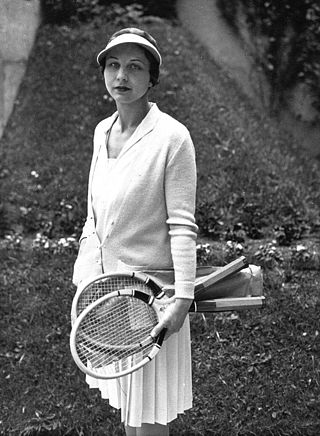
Helen Newington Wills, also known by her married names Helen Wills Moody and Helen Wills Roark, was an American tennis player. She won 31 Grand Slam tournament titles during her career, including 19 singles titles.
Keegan Hipgrave, Australian rugby league player births

Keegan Hipgrave is an Australian former professional rugby league footballer who last played as a second-row forward and lock for the Parramatta Eels in the NRL.
Townes Van Zandt, American singer-songwriter, guitarist, and producer (b. 1944) deaths

John Townes Van Zandt was an American singer-songwriter. He wrote numerous songs, such as "Pancho and Lefty", "For the Sake of the Song", "If I Needed You", "Tecumseh Valley", "Tower Song", "Rex's Blues", and "To Live Is to Fly", that are widely considered masterpieces of American songwriting. His musical style has often been described as melancholy and features rich, poetic lyrics. During his early years, Van Zandt was respected for his guitar playing and fingerpicking ability.
Arleigh Burke, American admiral (b. 1901) deaths
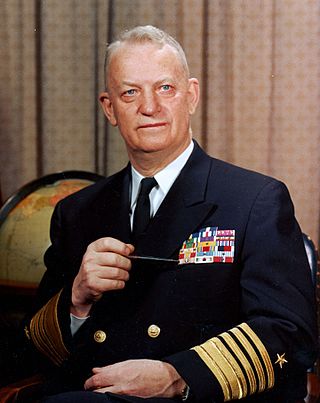
Arleigh Albert Burke was an admiral of the United States Navy who distinguished himself during World War II and the Korean War, and who served as Chief of Naval Operations during the Eisenhower and Kennedy administrations.
Arthur Rudolph, German-American engineer (b. 1906) deaths

Arthur Louis Hugo Rudolph was a German rocket engineer who was a leader of the effort to develop the V-2 rocket for Nazi Germany. After World War II, the United States Government's Office of Strategic Services (OSS) brought him to the U.S. as part of the clandestine Operation Paperclip, where he became one of the main developers of the U.S. space program. He worked within the U.S. Army and NASA, where he managed the development of several systems, including the Pershing missile and the Saturn V Moon rocket. In 1984, the U.S. Government investigated him for war crimes, and he agreed to renounce his United States citizenship and leave the U.S. in return for not being prosecuted.
Poppy, American singer and YouTube personality births

Moriah Rose Pereira, known professionally as Poppy and formerly as That Poppy, is an American singer, songwriter, YouTuber, and performance artist. In 2014, she gained viral fame by starring in performance art videos on YouTube as an uncanny valley-like android who commented on and satirised internet culture and modern society. She signed a recording contract with Island Records in 2015 and released her debut pop EP Bubblebath in 2016.
Eugene Wigner, Hungarian-American physicist and mathematician, Nobel Prize laureate (b. 1902) deaths

Eugene Paul "E. P." Wigner was a Hungarian-American theoretical physicist who also contributed to mathematical physics. He received the Nobel Prize in Physics in 1963 "for his contributions to the theory of the atomic nucleus and the elementary particles, particularly through the discovery and application of fundamental symmetry principles".

The Nobel Prize in Physics is a yearly award given by the Royal Swedish Academy of Sciences for those who have made the most outstanding contributions for humankind in the field of physics. It is one of the five Nobel Prizes established by the will of Alfred Nobel in 1895 and awarded since 1901, the others being the Nobel Prize in Chemistry, Nobel Prize in Literature, Nobel Peace Prize, and Nobel Prize in Physiology or Medicine. Physics is traditionally the first award presented in the Nobel Prize ceremony.
Brendan Elliot, Australian rugby league player births

Brendan Elliot is an Australian professional rugby league footballer who plays as a winger, fullback and centre for the North Queensland Cowboys in the National Rugby League.
Arthur Porritt, Baron Porritt, New Zealand physician and politician, 11th Governor-General of New Zealand (b. 1900) deaths

Colonel Arthur Espie Porritt, Baron Porritt, was a New Zealand physician, military surgeon, statesman and athlete. He won a bronze medal at the 1924 Summer Olympics in the 100 m sprint. He served as the 11th governor-general of New Zealand from 1967 to 1972.

The governor-general of New Zealand is the viceregal representative of the monarch of New Zealand, currently King Charles III. As the King is concurrently the monarch of 14 other Commonwealth realms and lives in the United Kingdom, he, on the advice of his New Zealand prime minister, appoints a governor-general to carry out his constitutional and ceremonial duties within the Realm of New Zealand.
Cesar Romero, American actor (b. 1907) deaths

Cesar Julio Romero Jr. was an American actor and activist. He was active in film, radio, and television for almost sixty years.
Edward Arthur Thompson, Irish historian and academic (b. 1914) deaths

Edward Arthur Thompson was an Irish-born British Marxist historian of classics and medieval studies. He was professor and director of the classics department at the University of Nottingham from 1948 to 1979, and a fellow of the British Academy. Thompson was a pioneer in the study of late antiquity, and was for decades the most prominent British scholar in this field. He was particularly interested in the relations between Ancient Rome and "barbarian" peoples such as the Huns and Visigoths, and has been credited with revitalizing English-language scholarship on the history of early Germanic peoples. Thompson's works on these subjects have been highly influential.
Nathaniel Peteru, New Zealand rugby league player births

Nathaniel Peteru is a New Zealand professional rugby league footballer who plays as a prop and second-row forward for the Leigh Leopards in the Betfred Super League. He previously played for the Gold Coast Titans in the NRL, and for Hull Kingston Rovers and the Leeds Rhinos in the Super League.
Grace Hopper, American computer scientist and admiral, co-developed COBOL (b. 1906) deaths

Grace Brewster Hopper was an American computer scientist, mathematician, and United States Navy rear admiral. One of the first programmers of the Harvard Mark I computer, she was a pioneer of computer programming who invented one of the first linkers. Hopper was the first to devise the theory of machine-independent programming languages, and the FLOW-MATIC programming language she created using this theory was later extended to create COBOL, an early high-level programming language still in use today.

COBOL is a compiled English-like computer programming language designed for business use. It is an imperative, procedural and, since 2002, object-oriented language. COBOL is primarily used in business, finance, and administrative systems for companies and governments. COBOL is still widely used in applications deployed on mainframe computers, such as large-scale batch and transaction processing jobs. However, due to its declining popularity and the retirement of experienced COBOL programmers, programs are being migrated to new platforms, rewritten in modern languages or replaced with software packages. Most programming in COBOL is now purely to maintain existing applications; however, many large financial institutions were still developing new systems in COBOL as late as 2006.
Darius Slay, American football player births

Darius Demetrius Slay Jr. is an American football cornerback for the Philadelphia Eagles of the National Football League (NFL). He played college football at Mississippi State and was drafted by the Detroit Lions in the second round of the 2013 NFL Draft.
Xavier Su'a-Filo, American football player births

Xavier Filoitumua Su'a-Filo is an American football guard who is a free agent. He was drafted by the Houston Texans in the second round of the 2014 NFL Draft. He played college football at UCLA.
Julia Glushko, Israeli tennis player births
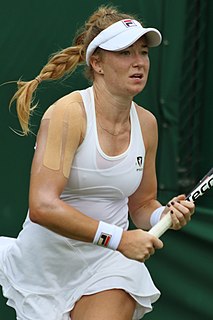
Julia Glushko is an Israeli retired tennis player.
Jason Pierre-Paul, American football player births

Jason Andrew Pierre-Paul is an American football outside linebacker for the Baltimore Ravens of the National Football League (NFL). He played college football at South Florida and was drafted by the New York Giants in the first round of the 2010 NFL Draft. With the Giants, Pierre-Paul made two Pro Bowls, was first-team All-Pro and won Super Bowl XLVI over the New England Patriots. With the Buccaneers, Pierre-Paul made his third Pro Bowl and won Super Bowl LV.
Marcel Gecov, Czech footballer births
Marcel Gecov is a Czech former footballer who played as a midfielder.
Meryl Davis, American ice dancer births

Meryl Davis is a former competitive American ice dancer. With partner Charlie White, she is the 2014 Olympic champion, the 2010 Olympic silver medalist, a two-time World champion, five-time Grand Prix Final champion (2009–2013), three-time Four Continents champion and six-time U.S. national champion (2009–2014). They also won a bronze medal in the team event at the 2014 Winter Olympics.
Patric Hörnqvist, Swedish ice hockey player births

Patric Gösta Hörnqvist is a Swedish professional ice hockey player and alternate captain for the Florida Panthers in the National Hockey League. He has also played for the Nashville Predators and Pittsburgh Penguins.
Pablo Cuevas, Uruguayan tennis player births

Pablo Gabriel Cuevas Urroz is an inactive Uruguayan professional tennis player. Cuevas won the 2008 French Open men's doubles title with Luis Horna.
Ramses Barden, American football player births
Ramses Alexander Barden is a former American football wide receiver. He played college football at Cal Poly SLO and was drafted by the New York Giants in the third round of the 2009 NFL Draft. Against the New England Patriots, Barden won Super Bowl XLVI with the Giants.
Glen Davis, American Basketball player births

Ronald Glen "Big Baby" Davis is an American former professional basketball player. He played for the Boston Celtics, Orlando Magic, Los Angeles Clippers, and the St. John’s Edge.
Colin Morgan, Northern Irish actor births
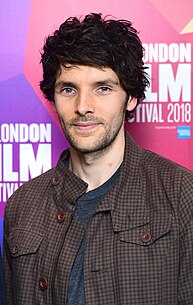
Colin Morgan is a Northern Irish actor. He is best known for playing the title character in the BBC fantasy series Merlin (2008–2012), Leo Elster in Humans (2015–2018), and Billy Clanton in Kenneth Branagh’s Belfast (2021).
Steven Davis, Northern Irish footballer births

Steven Davis is a Northern Irish professional footballer who plays as a midfielder for Scottish Premiership club Rangers and captains the Northern Ireland national team. Davis made his full international debut in 2005 and has since been capped 140 times, scoring 13 goals, at senior level to become the most capped player in Northern Ireland, and the most capped British player of all time. He captained his nation to the last 16 at UEFA Euro 2016.
Tiago Splitter, Brazilian basketball player births

Tiago Splitter Beims is a Brazilian former professional basketball player who played seven seasons in the National Basketball Association (NBA). He is currently serving as player development coach for the Brooklyn Nets. A three-time All-EuroLeague Team selection prior to his NBA career, he became the first Brazilian-born player to win an NBA championship, in 2014, as a member of the San Antonio Spurs.
Paolo Guerrero, Peruvian footballer births

José Paolo Guerrero Gonzales, known as Paolo Guerrero, is a Peruvian professional footballer who plays as a striker for Campeonato Brasileiro Série A club Avaí and the Peru national team.
Michael Witt, Australian rugby league player births

Michael Witt is an Australian former professional rugby league footballer who played in Australasia's National Rugby League (NRL) competition for the Parramatta Eels, Manly-Warringah Sea Eagles and the New Zealand Warriors, before a season playing rugby union in the Air New Zealand Cup. He then returned to rugby league, playing in the Super League for Crusaders RL and the London Broncos. Witt then played one more season in Australia for the St. George Illawarra Dragons.
Alexis Korner, French-English singer-songwriter and guitarist (b. 1928) deaths

Alexis Andrew Nicholas Koerner, known professionally as Alexis Korner, was a British blues musician and radio broadcaster, who has sometimes been referred to as "a founding father of British blues". A major influence on the sound of the British music scene in the 1960s, Korner was instrumental in the formation of several notable British bands including The Rolling Stones and Free.
Melaine Walker, Jamaican hurdler births

Melaine Walker O.D is a Jamaican 400 metres hurdler. Walker is the former Olympic 400 m hurdles champion. She held the Olympic record of 52.64, set at the 2008 Beijing Olympics, and her time of 52.42 seconds at the 2009 World Championships in Berlin was the second fastest time in history at the time and still stands as one of the top five fastest times in history.
Park Sung-hyun, South Korean archer births
Park Sung-hyun is an archer from South Korea who competed in two Olympic Games, winning three gold medals. Park made her international archery debut in 2001, winning the women's recurve title at that year's World Archery Championships. Her Olympic debut came at the 2004 Summer Olympics, where she won gold medals in both the women's individual and women's team events. She won two further medals at the 2008 Summer Olympics, achieving her third Olympic gold in the women's team event before earning the silver medal as the runner-up in the women's individual event.
Calum Davenport, English footballer births

Calum Ray Paul Davenport is an English former professional footballer who currently plays for non-league Tavistock AFC. During his career he played for Coventry City, Tottenham Hotspur, West Ham United, Southampton, Norwich City, Watford, Sunderland, Wootton Blue Cross and Elstow Abbey as a defender.
David Nalbandian, Argentinian tennis player births
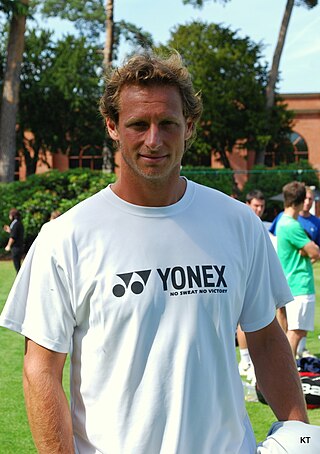
David Pablo Nalbandian is an Argentine retired professional tennis player who played on the ATP Tour from 2000 until his retirement in 2013. He reached the highest ranking in singles of world No. 3 in March 2006. Nalbandian was runner-up in the singles event at the 2002 Wimbledon Championships. During his career, he won 11 singles titles, including the Tennis Masters Cup in 2005 and two Masters 1000 tournaments. Nalbandian is the only male Argentine player in history who ever reached the semifinals or better at all four Grand Slam tournaments and reached the men's singles final at Wimbledon.
Egidio Arévalo Ríos, Uruguayan footballer births

Egidio Raúl Arévalo Ríos, nicknamed El Cacha, is a Uruguayan professional footballer who plays as a defensive midfielder for Primera División club Sacachispas. He also holds Mexican citizenship.
Victor Buono, American actor (b. 1938) deaths

Victor Charles Buono was an American actor, comic, and briefly a recording artist. He was known for playing the villain King Tut in the television series Batman (1966–1968) and musician Edwin Flagg in What Ever Happened to Baby Jane? (1962), the latter of which earned him Academy Award and Golden Globe Award nominations. He was a busy actor from his late teens until his death at the age of 43 and, with his large size and sonorous voice, he made a career of playing men much older than he was.
Zsolt Baumgartner, Hungarian racing driver births

Zsolt Baumgartner is a Hungarian former racing driver who raced for the Jordan and Minardi teams in Formula One. He remains the only Hungarian driver to have competed and to have scored a point in Formula One.
Mladen Petrić, Croatian footballer births

Mladen Petrić is a retired Croatian professional footballer who played as a forward or striker. During his career, he played for Grasshopper, Basel, Borussia Dortmund, Hamburger SV, Fulham, West Ham United and Panathinaikos, as well as internationally for the Croatian national team. He also holds Swiss citizenship.
Hephzibah Menuhin, American-Australian pianist (b. 1920) deaths

Hephzibah Menuhin was an American-Australian pianist, writer, and human rights campaigner. She was sister to the violinist Yehudi Menuhin and to the pianist, painter, and poet Yaltah Menuhin. She was also a linguist and writer, co-authoring several books and writing many papers with her second husband, Richard Hauser.
Pietro Nenni, Italian journalist and politician, Italian Minister of Foreign Affairs (b. 1891) deaths

Pietro Sandro Nenni was an Italian socialist politician, the national secretary of the Italian Socialist Party (PSI) and senator for life since 1970. He was a recipient of the Lenin Peace Prize in 1951. He was one of the founders of the Italian Republic and a central figure of the Italian political left from the 1920s to the 1960s.

The Italian Minister of Foreign Affairs is the head of the Ministry of Foreign Affairs in Italy. The office was one of the positions which Italy inherited from the Kingdom of Sardinia where it was the most ancient ministry of the government: this origin gives to the office a ceremonial primacy in the Italian cabinet.
Vidya Balan, Indian actress births

Vidya Balan is an Indian actress. Known for pioneering a change in the portrayal of women in Hindi cinema with her roles in female-led films, she is the recipient of several awards, including a National Film Award and seven Filmfare Awards. She was awarded the Padma Shri by the Government of India in 2014.
Carle Hessay, German-Canadian painter (b. 1911) deaths

Hans Karl Hesse, known in later life as Carle Hessay, was a German-born Canadian painter. Starting at age fourteen, he studied at art academies in Dresden and Paris. He came to Canada, and served as a Canadian soldier in World War II. After the establishment of peace, Hessay moved to British Columbia, eventually settling in the town of Langley, where he took up art again in the 1950s. Some of his early paintings were done in the manner of Romantic realism. The influence of Expressionism soon became significant, with Hessay drawing on both the European and American movements, together with aspects of Emily Carr and the Group of Seven. He painted landscapes throughout his artistic life, as well as cityscapes, the Spanish Civil War, Biblical prophecy, and conceptions of the far future. A sizable fraction of his output consisted of abstract pieces. Over time, Hessay's depictions grew more symbolic, one commentator describing his late work as "brazenly metaphysical and apocalyptic". He often made his own pigments, and his style is distinguished by his use of colour, especially black. In 2014, a group of Canadian writers published poems based on his small abstracts. Hessay was the subject of a 2017 documentary film and art exhibition at the University of Victoria.
Chris Anstey, Australian basketball player and coach births
Christopher John Anstey is an Australian former professional basketball player. His career included stints in the National Basketball Association (NBA), Russia and Spain. Anstey was selected by the Portland Trail Blazers in the first round of the 1997 NBA draft. He also played for the Melbourne Tigers, South East Melbourne Magic and Victoria Titans in the NBL. He retired at the end of the 2009–10 season while with the Tigers and later became the team's head coach in 2012.
Joe Cannon, American soccer player and sportscaster births

Joseph Cannon is an American former professional soccer player. He spent the majority of his 16 professional seasons playing in Major League Soccer. His 86 MLS career shutouts ranks him fourth in league history. He won the MLS Goalkeeper of the Year Award twice, and finished runner-up for the award three times.
Becky Kellar-Duke, Canadian ice hockey player births

Rebecca "Becky" Kellar is a women's ice hockey player. She played for Burlington Barracudas in the Canadian Women's Hockey League.
Fernando Tatís, Dominican baseball player births

Fernando Gabriel Tatís Medina Sr. is a Dominican former professional baseball third baseman and Minor League Baseball (MiLB) manager. Over his 11-year Major League Baseball (MLB) career, Tatís played for the Texas Rangers, St. Louis Cardinals, Montreal Expos, Baltimore Orioles, and New York Mets. He holds the major league record for runs batted in (RBI) in an inning, a feat that he achieved by hitting two grand slams in one inning during a game on April 23, 1999, becoming the only player in MLB history to do so. His son, Fernando Jr., plays for the San Diego Padres.
Christian Paradis, Canadian lawyer and politician, 9th Canadian Minister of Industry births

Christian Paradis is a Canadian politician who served as the Member of Parliament (MP) for Mégantic—L'Érable from 2006 to 2015. A member of the Conservative Party of Canada, he was first elected in the 2006 federal election and served as parliamentary secretary to the Minister of Natural Resources until January 4, 2007, when he was appointed Secretary of State for Agriculture and Agri-Food Canada and the Rural Secretariat. On June 25, 2008, Paradis was appointed Minister of Public Works and Government Services, retaining his position as Secretary of State for Agriculture until October that same year. On October 30, 2008, in a cabinet shuffle following the election, he retained the Public Works portfolio. In addition, he succeeded Lawrence Cannon as Quebec Lieutenant. On January 19, 2010, in a cabinet shuffle, Prime Minister Harper appointed him Minister of Natural Resources. On May 18, 2011, in a cabinet shuffle he was appointed to be the Minister of Industry. On July 15, 2013, in a cabinet shuffle, he was appointed as Minister of International Development and Minister for La Francophonie.

The minister of innovation, science, and industry is the minister of the Crown in the Canadian Cabinet who is responsible for overseeing the economic development and corporate affairs department of the Government of Canada; Innovation, Science and Economic Development Canada.
Lilian Thuram, French footballer births

Ruddy Lilian Thuram-Ulien is a French author and former professional footballer who played as a defender. He takes a public position on issues related to equality, immigration, and racism and was a member of France's High Council for Integration. In 2008, Thuram created the Lilian Thuram Foundation to educate against racism.
Maurice Chevalier, French actor and singer (b. 1888) deaths

Maurice Auguste Chevalier was a French singer, actor and entertainer. He is perhaps best known for his signature songs, including "Livin' In The Sunlight", "Valentine", "Louise", "Mimi", and "Thank Heaven for Little Girls" and for his films, including The Love Parade, The Big Pond, The Smiling Lieutenant, One Hour with You and Love Me Tonight. His trademark attire was a boater hat and tuxedo.
Bobby Holík, Czech-American ice hockey player and coach births

Bobby "The Geek" Holík is a Czech-American former professional ice hockey center who played 18 seasons in the National Hockey League (NHL). Holík is the son of Jaroslav Holík, a Czechoslovak ice hockey world champion in 1972 and Czech national team head coach who led the under-20 team to world titles in 2000 and 2001. Holík is the current head coach of the Israel men's national ice hockey team.
Jyotiraditya Madhavrao Scindia, Indian politician births
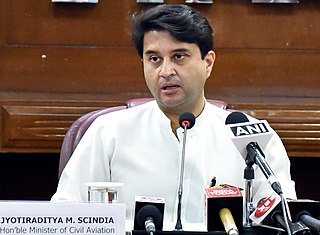
Jyotiraditya Madhavrao Scindia is an Indian politician who serves as the Minister of Civil Aviation, a position his father also held from 1991 to 1993. He also heads the Ministry of Steel. He is a Member of Parliament in the Rajya Sabha representing the State of Madhya Pradesh. He is a former Member of Parliament in the Lok Sabha, representing the Guna constituency in Madhya Pradesh until his defeat in the 2019 Indian general election. He is a former member of the Indian National Congress (INC) and presently a member of the Bharatiya Janata Party (BJP).
Sammie Henson, American wrestler and coach births
Samuel "Sammie" Henson is a World Champion wrestler, winning a gold medal in freestyle for the USA at the 1998 FILA Wrestling World Championships, held in Tehran, Iran. He was also a silver medalist at the 2000 Summer Olympics in the freestyle 54 kg category, losing to Abdullayev in the finals of that event, held in Sydney, New South Wales, Australia. At the age of 36, he competed at the 2006 FILA Wrestling World Championships held in Guangzhou, China, earning a bronze medal. He was named USA Wrestling's Man of the Year in 1998.
Amphilochius of Pochayiv, Ukrainian saint (b. 1894) deaths
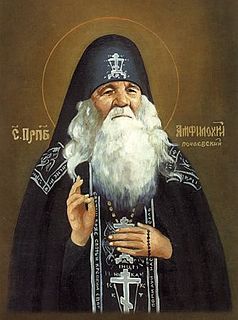
Amphilochius of Pochayiv was a 20th-century Ukrainian Orthodox saint, from Ternopil Oblast of western Ukraine.
Sergei Kiriakov, Russian footballer and coach births

Sergei Vyacheslavovich Kiriakov is a Russian football coach and a former player. He is the manager of FC Leningradets Leningrad Oblast.
Verne Troyer, American actor (d. 2018) births
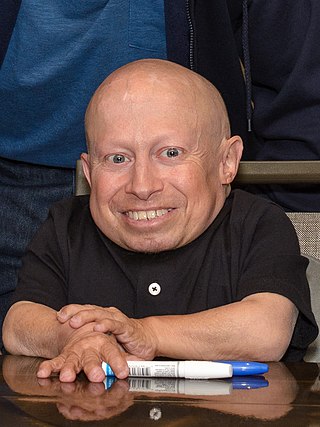
Verne Jay Troyer was an American actor, comedian, YouTuber, and stunt performer. He was best known for his role of Mini-Me in the Austin Powers film series. He had cartilage–hair hypoplasia and was 2 ft 8 in (81 cm) tall.
Barton MacLane, American actor, playwright and screenwriter (b. 1902) deaths

Barton MacLane was an American actor, playwright, and screenwriter. He appeared in many classic films from the 1930s through the 1960s, including his role as General Martin Peterson on the 1960s NBC television comedy series I Dream of Jeannie, with Barbara Eden and Larry Hagman.
Davor Šuker, Croatian footballer births
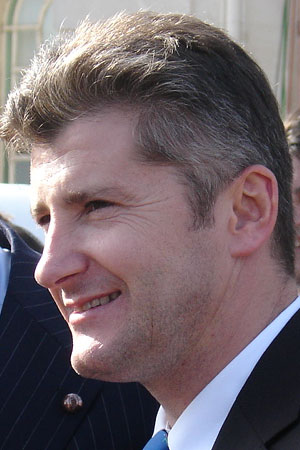
Davor Šuker is a Croatian former professional footballer and president of the Croatian Football Federation from 2012 to 2021. During his playing career, Šuker featured as a striker. He began his footballing career in his hometown for local first division team NK Osijek as a 16-year-old. During his final season with the club, he became the league's top goal scorer. He made the move to sign for Dinamo Zagreb in 1989. The Croatian War of Independence halted a promising season for the 21-year-old, eventually resulting in Šuker's move to Spanish club Sevilla in 1991.
Tawera Nikau, New Zealand rugby league player births
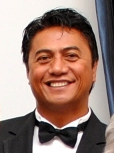
Tawera Nuieia Nikau is a New Zealand former professional rugby league footballer who played in the 1990s and 2000s. A New Zealand international representative forward, he played club football at a number of different clubs in New Zealand, England and Australia during his career, including the Melbourne Storm's victory in the 1999 NRL season Grand Final.
Anna Burke, Australian businesswoman and politician, 28th Speaker of the Australian House of Representatives births
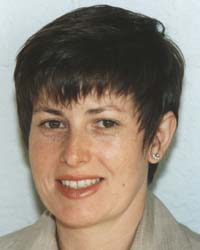
Anna Elizabeth Burke is a former Australian politician and current Member of the Administrative Appeals Tribunal. She was a member of the Australian House of Representatives from October 1998 to May 2016, representing the Division of Chisholm, Victoria. From October 2012 to August 2013, she was Speaker of the Australian House of Representatives.

The Speaker of the House of Representatives is the presiding officer of the House of Representatives, the lower house of the Parliament of Australia. The counterpart in the upper house is the President of the Senate. The office of Speaker was created by section 35 of the Constitution of Australia. The authors of the Constitution intended that the House of Representatives should as nearly as possible be modelled on the House of Commons of the United Kingdom.
Ivica Dačić, Serbian journalist and politician, 95th Prime Minister of Serbia births

Ivica Dačić is a Serbian politician serving as first deputy prime minister of Serbia and minister of foreign affairs since 2022, roles which he previously served under governments of Mirko Cvetković, Aleksandar Vučić, and Ana Brnabić. He has been the leader of the Socialist Party of Serbia (SPS) since 2006.

The prime minister of Serbia, officially the president of the Government of the Republic of Serbia is the principal executive minister of the Government of Serbia. The prime minister directs the work of the government, and submits to the National Assembly the government's program, including a list of proposed ministers. The resignation of the prime minister results in the dismissal of the government.
Tihomir Orešković, Croatian–Canadian businessman, 11th Prime Minister of Croatia births

Tihomir "Tim" Orešković is a Croatian Canadian businessman who was Prime Minister of Croatia from January to October 2016.

The prime minister of Croatia, officially the President of the Government of the Republic of Croatia, is Croatia's head of government, and is de facto the most powerful and influential state officeholder in the Croatian system of government. Following the first-time establishment of the office in 1945, the 1990–2000 semi-presidential period is the only exception where the president of Croatia held de facto executive authority. In the formal Croatian order of precedence, however, the position of prime minister is the third highest state office, after the president of the Republic and the speaker of the Parliament.
Vincent Auriol, French journalist and politician, 16th President of the French Republic (b. 1884) deaths

Vincent Jules Auriol was a French politician who served as President of France from 1947 to 1954.

The president of France, officially the president of the French Republic, is the executive head of state of France, and the commander-in-chief of the French Armed Forces. As the presidency is the supreme magistracy of the country, the position is the highest office in France. The powers, functions and duties of prior presidential offices, in addition to their relation with the prime minister and Government of France, have over time differed with the various constitutional documents since the Second Republic.
Dedee Pfeiffer, American actress births
Dorothy Diane "Dedee" Pfeiffer is an American actress, the younger sister of Michelle Pfeiffer. She began her career appearing in films include Vamp (1986), The Allnighter (1987) and The Horror Show (1989). Pfeiffer later starred as Cybill's daughter, Rachel, in the CBS sitcom Cybill (1995-1997) and as Sheri DeCarlo-Winston in the UPN sitcom For Your Love (1998-2002). In 2020, she began starring as Denise Brisbane in the ABC crime drama series, Big Sky.
Jean-Marc Gounon, French racing driver births
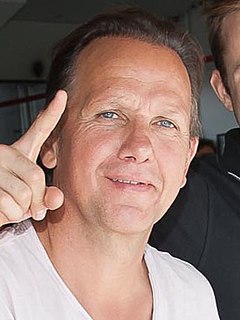
Jean-Marc Gounon is a French racing driver. He raced in Formula One in 1993 and 1994, participating in a total of 9 Grands Prix and scoring no championship points. He is the father of fellow racing driver Jules Gounon.
Anton Muscatelli, Italian-Scottish economist and academic births
Sir Vito Antonio Muscatelli is the Principal of the University of Glasgow and one of the United Kingdom's top economists.
Sam Backo, Australian rugby league player births
Sam Backo is an Australian former professional rugby league footballer who played as a prop in the 1980s and 1990s.
Margaret Sullavan, American actress (b. 1909) deaths

Margaret Brooke Sullavan was an American stage and film actress.
Abdul Ahad Mohmand, Afghan colonel, pilot, and astronaut births
Abdul Ahad Momand is a Afghan-German and former Afghan Air Force aviator who became the first, and currently only, Afghan citizen to journey to outer space.
Azali Assoumani, Comorian colonel and politician, President of the Comoros births

Azali Assoumani is a Comorian politician and military officer who has served as President of the Comoros since April 2019. He was also president from 2002 to 2006 and 2016 to February 2019. He became head of state after staging a coup d'état in 1999 and was elected president in 2002, 2016 and April 2019.
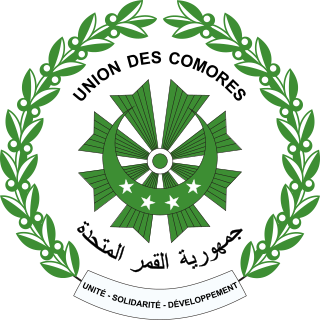
The following is a list of heads of state of the Comoros, since the country gained independence from France in 1975.
Panagiotis Giannakis, Greek basketball player and coach births

Panagiotis Giannakis, alternatively spelled Panayiotis Yiannakis or Yannakis, is a retired Greek professional basketball player and coach. As a player, he was primarily a point guard, but he could also play at the shooting guard position. During his playing career, Giannakis was also widely-known under his nickname of "O Drákos", or "The Dragon" in English.
Grandmaster Flash, Barbadian rapper and DJ births

Joseph Saddler, popularly known by his stage name Grandmaster Flash, is an American DJ and rapper. He is considered to be one of the pioneers of Hip Hop DJing, cutting, scratching and mixing. Grandmaster Flash and the Furious Five were inducted into the Rock and Roll Hall of Fame in 2007, becoming the first Hip Hop act to be honored. In 2019 he won the Polar Music Prize. On May 21, 2022, he acquired an honorary doctorate in Fine Arts from Buffalo State College.
Evangelos Venizelos, Greek lawyer and politician, Deputy Prime Minister of Greece births

Evangelos Venizelos is a Greek academic and politician who was Deputy Prime Minister of Greece and Minister for Foreign Affairs from 25 June 2013 to 27 January 2015. Previously, he was Deputy Prime Minister and Minister for Finance of Greece from 17 June 2011 to 21 March 2012. He was a member of the Hellenic Parliament for the Panhellenic Socialist Movement (PASOK) for the first electoral district of Thessaloniki. He is a Professor of Constitutional Law at the Law School of the Aristotle University of Thessaloniki.

The Deputy Prime Minister of Greece is the second senior-most member of the Greek Cabinet. Despite the English translation of the title, he does not actually deputize for the Prime Minister, rather it is a mostly honorific post for senior ministers, and is usually combined with another senior government portfolio or a coordinating role over several ministries. The post is not permanent, rather it is created on an ad hoc basis, usually for the leaders of junior parties in coalition cabinets, and may be held by more than one person at once.
Sergei Avdeyev, Russian engineer and astronaut births

Sergei Vasilyevich Avdeyev is a Russian engineer and cosmonaut.
Royce Ayliffe, Australian rugby league player births
David Royce Ayliffe is an Australian former professional rugby league footballer who played in the 1970s and 1980s. An Australian international and New South Wales State of Origin representative, he played for and captained the Eastern Suburbs club. Ayliffe also played for the South Sydney Rabbitohs club. During the 1976 NSWRFL season, Brass played in the forwards, helping Eastern Suburbs to victory in their unofficial 1976 World Club Challenge match against British champions St. Helens in Sydney. While attending Wollongong Keira High School, Ayliffe played for the Australian Schoolboys team in 1972. He also gained selection for the Australian Kangaroos in 1981. Since retirement he has served on the NRL Judiciary.
Christine Lagarde, French lawyer and politician; Managing Director, International Monetary Fund births

Christine Madeleine Odette Lagarde is a French politician and lawyer who has been serving as President of the European Central Bank since 2019. She previously served as the 11th managing director of the International Monetary Fund (IMF) from 2011 to 2019. Lagarde had also served in the Government of France, most prominently as minister of the economy, finance and industry from 2007 to 2011. She was the first woman to hold each of those posts.

The International Monetary Fund (IMF) is a major financial agency of the United Nations, and an international financial institution, headquartered in Washington, D.C., consisting of 190 countries. Its stated mission is "working to foster global monetary cooperation, secure financial stability, facilitate international trade, promote high employment and sustainable economic growth, and reduce poverty around the world." Formed in 1944, started on 27 December 1945, at the Bretton Woods Conference primarily by the ideas of Harry Dexter White and John Maynard Keynes, it came into formal existence in 1945 with 29 member countries and the goal of reconstructing the international monetary system. It now plays a central role in the management of balance of payments difficulties and international financial crises. Countries contribute funds to a pool through a quota system from which countries experiencing balance of payments problems can borrow money. As of 2016, the fund had XDR 477 billion. The IMF is regarded as the global lender of last resort.
Martin Plaza, Australian singer-songwriter and guitarist births

Martin Edward Murphy, commonly known by the pseudonym Martin Plaza, is an Australian singer-songwriter, musician and visual artist who is a founding member and vocalist and guitarist of the new wave band Mental As Anything. He has also worked with other bands and is an accomplished artist. Plaza also has a solo music career and had a No. 2 hit in Australia with his 1986 cover of the song "Concrete and Clay".
LaMarr Hoyt, American baseball player births

Dewey LaMarr Hoyt Jr. was an American professional baseball right-handed pitcher. He played in Major League Baseball for the Chicago White Sox and San Diego Padres from 1979 to 1986. He won the 1983 American League Cy Young Award and was an All-Star in 1985.
Mary Beard, English classicist, academic and presenter births

Dame Winifred Mary Beard, is an English scholar of Ancient Rome.
Arthur C. Parker, American archaeologist and historian (b. 1881) deaths
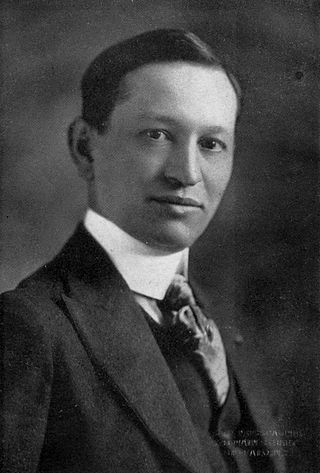
Arthur Caswell Parker was an American archaeologist, historian, folklorist, museologist and noted authority on Native American culture. Of Seneca and Scots-English descent, he was director of the Rochester Museum of Arts and Sciences from 1924 to 1945, when he developed its holdings and research into numerous disciplines for the Genesee Region. He was an honorary trustee of the New York State Historical Association. In 1935 he was elected first president of the Society for American Archaeology.
Bob Menendez, American lawyer and politician births

Robert Menendez is an American lawyer and politician serving as the senior United States senator from New Jersey, a seat he has held since 2006. A member of the Democratic Party, he was first appointed to the U.S. Senate by Governor Jon Corzine, and chaired the United States Senate Committee on Foreign Relations from 2013 to 2015, and again since 2021.
Dennis O'Driscoll, Irish poet and critic (d. 2012) births
Dennis O'Driscoll was an Irish poet, essayist, critic and editor. Regarded as one of the best European poets of his time, Eileen Battersby considered him "the lyric equivalent of William Trevor" and a better poet "by far" than Raymond Carver. Gerard Smyth regarded him as "one of poetry's true champions and certainly its most prodigious archivist". His book on Seamus Heaney is regarded as the definitive biography of the Nobel laureate.
Yannis Papathanasiou, Greek engineer and politician, Greek Minister of Finance births

Yannis Papathanasiou is a Greek politician, former Minister for Economy and Finance of Greece. He is a member of the Hellenic Parliament with the conservative New Democracy party since 2002.

The Ministry of Finance is the government department responsible for Greece's public finances. The incumbent minister is Christos Staikouras of New Democracy.
Duff Cooper, English politician and diplomat, Chancellor of the Duchy of Lancaster (b. 1890) deaths

Alfred Duff Cooper, 1st Viscount Norwich,, known as Duff Cooper, was a British Conservative Party politician and diplomat who was also a military and political historian.

The chancellor of the Duchy of Lancaster is a ministerial office in the Government of the United Kingdom. The position is currently sixth in the ministerial ranking and is the second highest ranking minister in the Cabinet Office, immediately after the Prime Minister, and senior to the Minister for the Cabinet Office. The role includes as part of its duties the administration of the estates and rents of the Duchy of Lancaster.
Leonard Bacon, American poet and critic (b. 1887) deaths
Leonard Bacon (1887–1954) was an American poet, translator, and literary critic. The great-grandson of preacher Leonard Bacon, he graduated from Yale University in 1909, and subsequently taught at University of California, Berkeley until his retirement in 1923. In 1923, he started publishing poetry in the Saturday Review of Literature under the pseudonym 'Autholycus'. He and his family lived in Florence, Italy from 1927 to 1932. He won the 1941 Pulitzer Prize for Poetry for his satiric poems Sunderland Capture. He was elected a Fellow of the American Academy of Arts and Sciences in 1942.
Gary Johnson, American businessman and politician, 29th Governor of New Mexico births

Gary Earl Johnson is an American businessman, author, and politician. He served as the 29th governor of New Mexico from 1995 to 2003 as a member of the Republican Party. He was the Libertarian Party nominee for President of the United States in the 2012 and 2016 elections. He was also the Libertarian nominee in the 2018 U.S. Senate election in New Mexico.

The governor of New Mexico is the head of government of New Mexico. The governor is the head of the executive branch of New Mexico's state government and the commander-in-chief of the New Mexico National Guard. As noted in the governor's seal, this gubernatorial office is a scion of the Spanish and Mexican governors of Nuevo México (1598) and the governors of the New Mexico Territory (1851). The officeholder is afforded the courtesy title of The Honorable for life. The current governor is Michelle Lujan Grisham, a Democrat, who was sworn in as the 32nd governor of New Mexico on January 1, 2019.
Hank Williams, American singer-songwriter and guitarist (b. 1923) deaths

Hank Williams, Sr. was an American singer, songwriter, and musician. Regarded as one of the most significant and influential American singers and songwriters of the 20th century, he recorded 55 singles that reached the top 10 of the Billboard Country & Western Best Sellers chart, including 12 that reached No. 1.
Shaji N. Karun, Indian director and cinematographer births

Shaji Neelakantan Karun is an Indian film director and cinematographer. His debut film Piravi (1988) won the Caméra d'Or – Mention d'honneur at the 1989 Cannes Film Festival. He was the premiere chairman of the Kerala State Chalachitra Academy, the first academy for film and TV in India and was also the executive chairman of the International Film Festival of Kerala (IFFK) from 1998 to 2001. He is best known for his award-winning films Piravi (1988), Swaham (1994), Vanaprastham (1999) and Kutty Srank (2009). He won the National Award for Best Director for his debut film Piravi. He also won two Kerala State Film Awards for Best Director for his films Swaham and Vanaprastham. Currently, he is the Chairman of Kerala State Film Development Corporation.
Wayne Bennett, Australian rugby league player and coach births

Wayne James Bennett AM, also known by the nickname "Benny", is an Australian professional rugby league coach who was signed in late 2021 for three years by the Dolphins in readiness and preparation for their inaugural 2023 season in the National Rugby League competition. He was previously the head coach of the South Sydney Rabbitohs among other clubs, and a former rugby league footballer.
Tony Currie, English footballer births
Anthony William Currie is an English former footballer who had significant spells for Sheffield United, Leeds United and Queens Park Rangers as well as representing England.
Borys Tarasyuk, Ukrainian politician and diplomat births

Borys Ivanovych Tarasyuk is a Ukrainian politician who twice served as the Minister for Foreign Affairs of Ukraine and a former MP who is since December 2019 Ukraine's permanent representative to the Council of Europe.
Devlet Bahçeli, Turkish economist, academic, and politician, 57th Deputy Prime Minister of Turkey births

Devlet Bahçeli is a Turkish politician, economist, former deputy prime minister, and current chairman of the Nationalist Movement Party (MHP).

The Deputy Prime Minister of Turkey is the abolished official deputy of the head of government of Turkey. Conventionally all of the junior partners in a coalition get one deputy, and they are ranked according to the size of their respective parties.
Dick Quax, New Zealand runner and politician (d. 2018) births

Theodorus Jacobus Leonardus "Dick" Quax was a Dutch-born New Zealand runner, one-time world record holder in the 5000 metres, and local-body politician.
Pavel Grachev, Russian general and politician, 1st Russian Minister of Defence (d. 2012) births

Pavel Sergeyevich Grachev, sometimes transliterated as Grachov or Grachyov, was a Russian Army General and the Defence Minister of the Russian Federation from 1992 to 1996; in 1988 he was awarded Hero of the Soviet Union gold star. As Defence Minister, Grachev gained notoriety because of his military incompetence displayed during the First Chechen War and the persistent allegations of involvement in enormous corruption scandals.

The Ministry of Defence of the Russian Federation is the governing body of the Russian Armed Forces.
Jon Corzine, American sergeant and politician, 54th Governor of New Jersey births

Jon Stevens Corzine is an American financial executive and retired politician who served as a United States Senator from New Jersey from 2001 to 2006 and the 54th governor of New Jersey from 2006 to 2010. Corzine ran for a second term as governor but lost to Republican Chris Christie. A member of the Democratic Party, he previously worked at Goldman Sachs; after leaving politics, he was CEO of MF Global from 2010 until its collapse in 2011.

The governor of New Jersey is the head of government of New Jersey. The office of governor is an elected position with a four-year term. There is a two consecutive term term limit, with no limitation on non-consecutive terms. The official residence of the governor is Drumthwacket, a mansion located in Princeton, New Jersey. The governor’s office is located inside of the New Jersey State House in Trenton, making New Jersey notable as the executive’s office is located in the same building as the legislature. New Jersey is also notable for being one of the few states in which the governor’s official residence is not located in the state capital.
Claude Steele, American social psychologist and academic births

Claude Mason Steele is a social psychologist and emeritus professor at Stanford University, where he is the I. James Quillen Endowed Dean, Emeritus at the Stanford Graduate School of Education, and Lucie Stern Professor in the Social Sciences, Emeritus.
Rivellino, Brazilian footballer and manager births
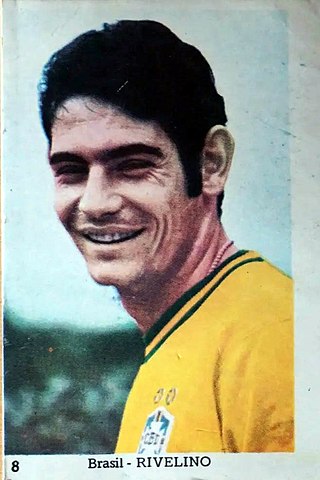
Roberto Rivellino is a Brazilian football pundit and retired footballer. He was one of the stars of Brazil's 1970 FIFA World Cup winning team. Rivellino currently works as a pundit for Brazilian TV Cultura.
Jacky Ickx, Belgian racing driver births
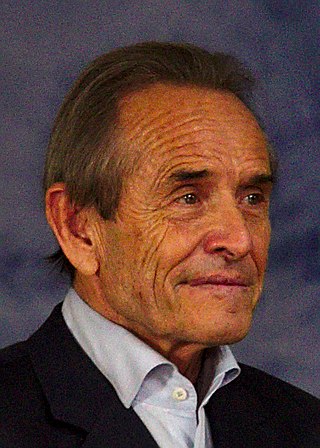
Jacques Bernard "Jacky" Ickx is a Belgian former racing driver who won the 24 Hours of Le Mans six times and achieved eight wins and 25 podium finishes in Formula One. He greatly contributed to several World Championships for Makes and World Sports Car championships: Ford (1968), Ferrari (1972), Porsche (1976–1977) and (1982–1985) by his 37 major World Sports Car wins. He also won the Can-Am Championship in 1979 and the 1983 Paris–Dakar Rally.
Victor Ashe, American politician and former United States Ambassador to Poland births

Victor Henderson Ashe II is the former United States Ambassador to Poland. From 1987 to 2004, he was mayor of Knoxville, Tennessee. Ashe is a Republican. Ambassador Ashe concluded his service as Ambassador to Poland on September 26, 2009.
Omar al-Bashir, Sudanese field marshal and politician, 7th President of Sudan births

Omar Hassan Ahmad al-Bashir is a Sudanese former military officer and politician who served as the seventh head of state of Sudan under various titles from 1989 until 2019, when he was deposed in a coup d'état. He was subsequently incarcerated, tried and convicted on multiple corruption charges. He came to power in 1989 when, as a brigadier general in the Sudanese Army, he led a group of officers in a military coup that ousted the democratically elected government of prime minister Sadiq al-Mahdi after it began negotiations with rebels in the south. He was elected three times as president in elections that have been under scrutiny for electoral fraud. In 1992, al-Bashir founded the National Congress Party, which remained the dominant political party in the country until 2019. In March 2009, al-Bashir became the first sitting head of state to be indicted by the International Criminal Court (ICC), for allegedly directing a campaign of mass killing, rape, and pillage against civilians in Darfur. On 11 February 2020, the Sudanese government announced that it had agreed to hand over al-Bashir to the ICC for trial.
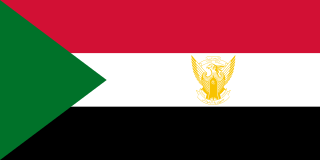
This article lists the heads of state of Sudan since the country's independence in 1956.
Barry Beath, Australian rugby league player births
Barry Beath is an Australian former professional rugby league footballer, a second-row forward for the St. George Dragons in the New South Wales Rugby League premiership competition. He represented for New South Wales and in the Australia national rugby league team.
Zafarullah Khan Jamali, Pakistani field hockey player and politician, 13th Prime Minister of Pakistan (d.2020) births

Mir Zafarullah Khan Jamali was a Pakistani politician who served as the 15th prime minister of Pakistan from 2002 until his resignation in 2004. He was the first and only elected prime minister from Balochistan, Pakistan.

The prime minister of Pakistan is the head of government of the Islamic Republic of Pakistan. Executive authority is vested in the prime minister and his chosen cabinet, despite the president of Pakistan serving as the nominal head of executive. The prime minister is often the leader of the party or the coalition with a majority in the lower house of the Parliament of Pakistan, the National Assembly where he serves as Leader of the House. Prime minister holds office by virtue of their ability to command the confidence of the National Assembly. The prime minister is designated as the "Chief Executive of the Islamic Republic".
Teresa Torańska, Polish journalist and author (d. 2013) births

Teresa Sławomira Torańska was a Polish journalist and writer. She was perhaps best known for her award winning monograph, Oni.
Mati Unt, Estonian author, playwright, and director (d. 2005) births

Mati Unt was an Estonian writer, essayist and theatre director.
Edwin Lutyens, English architect, designed the Castle Drogo and Thiepval Memorial (b. 1869) deaths

Sir Edwin Landseer Lutyens was an English architect known for imaginatively adapting traditional architectural styles to the requirements of his era. He designed many English country houses, war memorials and public buildings. In his biography, the writer Christopher Hussey wrote, "In his lifetime (Lutyens) was widely held to be our greatest architect since Wren if not, as many maintained, his superior". The architectural historian Gavin Stamp described him as "surely the greatest British architect of the twentieth century".

Castle Drogo is a country house and mixed-revivalist castle near Drewsteignton, Devon, England. Constructed between 1911 and 1930, it was the last castle to be built in England. The client was Julius Drewe, the hugely successful founder of the Home and Colonial Stores. Drewe chose the site in the belief that it formed part of the lands of his supposed medieval ancestor, Drogo de Teigne. The architect he chose to realise his dream was Edwin Lutyens, then at the height of his career. Lutyens lamented Drewe's determination to have a castle but nevertheless produced one of his finest buildings. The architectural critic, Christopher Hussey, described the result: "The ultimate justification of Drogo is that it does not pretend to be a castle. It is a castle, as a castle is built, of granite, on a mountain, in the twentieth century".
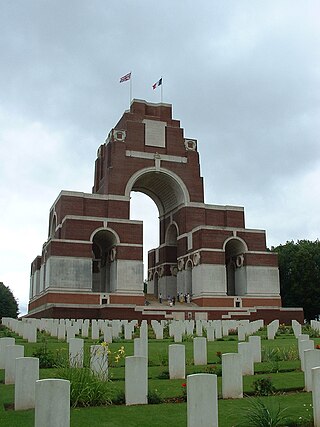
The Thiepval Memorial to the Missing of the Somme is a war memorial to 72,337 missing British and South African servicemen who died in the Battles of the Somme of the First World War between 1915 and 1918, with no known grave. It is near the village of Thiepval, Picardy in France. A visitors' centre opened in 2004. Designed by Sir Edwin Lutyens, Thiepval has been described as "the greatest executed British work of monumental architecture of the twentieth century".
Charles Turner, Australian cricketer (b. 1862) deaths

Charles Thomas Biass Turner was a bowler who is regarded as one of the finest ever produced by Australia. Among his accomplishments were:taking 283 wickets in the English season of 1888 for 11.27 runs each. This tally was 69 wickets ahead of Ted Peate's 1882 record, and has been bettered only by Tom Richardson in 1895 and Tich Freeman in 1928 and 1933. taking 314 wickets in all matches in 1888. taking 106 wickets in twelve matches in the Australian season of 1887–88 – a record for any bowler in Australia taking 17 wickets for 50 runs against An England Eleven at Hastings in 1888. Of these 17, 14 were bowled, two lbw and one stumped. being the first Australian bowler to reach 100 wickets in Test matches. his 12 for 87 against England in his record season of 1887–1888 is still the best bowling analysis for a Test at the SCG. the only bowler to take 50 wickets in their first six Test matches.
Don Novello, American comedian, screenwriter and producer births
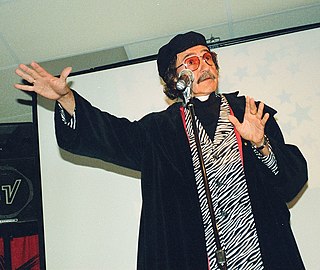
Donald Andrew Novello is an American actor, comedian, singer, writer, film director and producer. He is best known for his work on NBC's Saturday Night Live from 1978 to 1980, and again from 1985 to 1986, often as the character Father Guido Sarducci. He appeared as Sarducci in many subsequent television shows, including Married... with Children, Blossom, It's Garry Shandling's Show, Unhappily Ever After, Square Pegs, and The Colbert Report, and in the 1980 documentary film Gilda Live. He is also the voice of Vincenzo "Vinny" Santorini in the franchise of Atlantis: The Lost Empire.
Tony Knowles, American soldier and politician, 7th Governor of Alaska births

Anthony Carroll Knowles is an American politician and businessman who served as the seventh governor of Alaska from 1994 to 2002. Barred from seeking a third consecutive term as governor in 2002, he ran unsuccessfully for the U.S. Senate in 2004 and again for governor in 2006. In September 2008, Knowles became president of the National Energy Policy Institute, a non-profit energy policy organization funded by billionaire George Kaiser's family foundation, and located at the University of Tulsa.

The governor of Alaska is the head of government of Alaska. The governor is the chief executive of the state and is the holder of the highest office in the executive branch of the government as well as being the commander in chief of the Alaska's state forces.
Vladimir Šeks, Croatian lawyer and politician, 16th Speaker of the Croatian Parliament births

Vladimir Šeks is a Croatian lawyer and politician. He has been a representative in the Croatian Parliament since the nation's independence, and has held the posts of the Speaker of the Parliament, as well as Deputy Prime Minister in the government. He also served as acting President of the Croatian Democratic Union and Leader of the Opposition from 5 January to 30 April 2000.
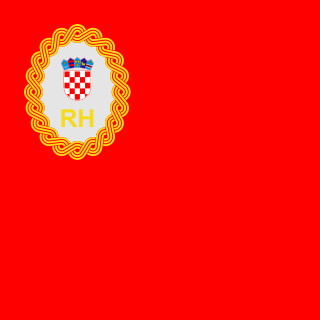
The speaker of the Croatian Parliament is the presiding officer in the Croatian Parliament, Croatia's legislative body.
Jenő Rejtő, Hungarian journalist deaths

Jenő Rejtő was a Hungarian journalist, pulp fiction writer and playwright who died as a forced labourer during World War II. He was born in Budapest, Austria-Hungary, on 29 March 1905, and died in Evdakovo, Voronezh Oblast, Soviet Union on 1 January 1943. Despite the "pulp" nature of his writings, he is not only widely read in Hungary, but is also much appreciated by literary critics. It is a prevalent opinion that he lifted the genre to the level of serious art, and his works will long outlive him.
Dennis Archer, American lawyer and politician, 67th Mayor of Detroit births

Dennis Wayne Archer is an American lawyer, jurist and former politician from Michigan. A Democrat, Archer served as Justice on the Michigan Supreme Court and as mayor of Detroit. He later served as president of the American Bar Association, becoming the first black president of the organization, which, until 1943, had barred African-American lawyers from membership.

This is a list of mayors of Detroit, Michigan. See History of Detroit, Michigan, for more information about the history of the incorporation of the city.
Anthony Hamilton-Smith, 3rd Baron Colwyn, English dentist and politician births

Ian Anthony Hamilton-Smith, 3rd Baron Colwyn, commonly known as Anthony Hamilton-Smith, is a peer, dentist and politician. He was one of 90 hereditary peers elected to remain in the House of Lords after the House of Lords Act 1999, sitting as a Conservative. He retired from the House of Lords on 21 July 2022.
Country Joe McDonald, American singer-songwriter and guitarist births

Joseph Allen "Country Joe" McDonald is an American musician who was the lead singer of the 1960s psychedelic rock group Country Joe and the Fish.
Alassane Ouattara, Ivorian economist and politician, President of the Ivory Coast births

Alassane Dramane Ouattara is an Ivorian politician who has been President of Ivory Coast since 2010. An economist by profession, Ouattara worked for the International Monetary Fund (IMF) and the Central Bank of West African States, and he was the Prime Minister of Côte d'Ivoire from November 1990 to December 1993, appointed to that post by President Félix Houphouët-Boigny. Ouattara became the President of the Rally of the Republicans (RDR), an Ivorian political party, in 1999.
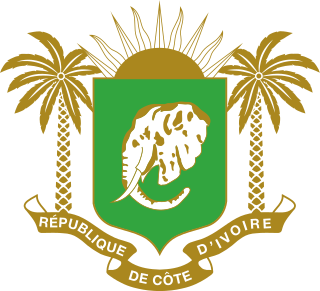
This article lists the heads of state of Ivory Coast, officially the Republic of Côte d'Ivoire, since the country gained independence from France in 1960. Alassane Ouattara has been serving as President of Ivory Coast since 4 December 2010.
Gennadi Sarafanov, Russian pilot and cosmonaut (d. 2005) births

Gennady Vasiliyevich Sarafanov was a Soviet cosmonaut who flew on the Soyuz 15 spaceflight in 1974. This mission was intended to dock with the space station Salyut 3, but failed to do so after the docking system malfunctioned.
Panuganti Lakshminarasimha Rao, Indian author and educator (b. 1865) deaths

Panuganti Lakshmi Narasimharaavu was one of the popular modern Telugu writers. He was born at Seetanagaram, Rajamundry, Andhra Pradesh. After his education, he became a teacher in Peddapuram High School. Later he moved to Pitahpuram as 'Asthana Kavi' for the Pitahpuram Rajah's kingdom.
Michèle Mercier, French actress births

Michèle Mercier is a French actress. In the course of her career she has worked with leading directors like François Truffaut, Jean-Pierre Melville, Jacques Deray, Dino Risi, Mario Monicelli, Mario Bava, Peter Collinson and Ken Annakin. Her leading men have included Marcello Mastroianni, Vittorio Gassman, Jean-Paul Belmondo, Jean Gabin, Charles Aznavour, Robert Hossein, Charles Bronson, Tony Curtis and Charlton Heston. She has appeared in over fifty films, and is best known for her starring role in Angelique, Marquise des Anges.
Phil Read, English motorcycle racer and businessman births

Phillip William Read, was an English professional motorcycle racer. He competed in Grand Prix motorcycle racing from 1961 to 1976. Read is notable for being the first competitor to win world championships in the 125 cc, 250 cc and 500 cc classes. Although he was often overshadowed by his contemporary, Mike Hailwood, he won seven FIM Grand Prix road racing world championships.
Senfronia Thompson, American politician births

Senfronia Calpernia Thompson is a Democratic member of the Texas House of Representatives, representing the 141st District since 1972.
Younoussi Touré, Malian politician, Prime Minister of Mali births
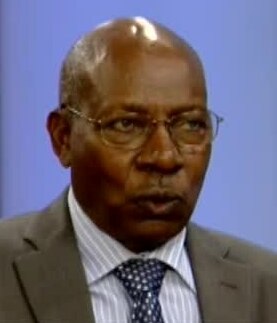
Younoussi Touré was a Malian politician. He was Prime Minister of Mali from 9 June 1992 to 12 April 1993 and was the first Prime Minister appointed under President Alpha Oumar Konaré. Touré was the President of the Union for the Republic and Democracy (URD), a political party, from 2003 to 2014. He was First Vice-President of the National Assembly from 2007 to 2012 and President of the National Assembly from 2012 to 2013.
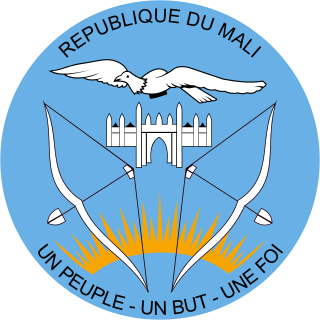
This is a list of prime ministers of Mali since the country gained independence from France in 1960 to the present day.
Frank Langella, American actor births

Frank A. Langella Jr. is an American stage and film actor. He has won four Tony Awards: two for Best Leading Actor in a Play for his performance as Richard Nixon in Peter Morgan's Frost/Nixon and as André in Florian Zeller's The Father, and two for Best Featured Actor in a Play for his performances in Edward Albee's Seascape and Ivan Turgenev's Fortune's Fool. His reprisal of the Nixon role in the film production of Frost/Nixon earned him an Academy Award nomination for Best Actor.
Bhaktisiddhanta Sarasvati, Indian religious leader, founded the Gaudiya Math (b. 1874) deaths

Bhaktisiddhanta Sarasvati, born Bimala Prasad Datt, was a Gaudīya Vaisnava Hindu guru, ācārya, and revivalist in early 20th century India. To his followers, he was known as Srila Prabhupāda.

The Gaudiya Math is a Gaudiya Vaishnava matha formed on 6 September 1920, about 30 months after Bhaktisiddhanta Sarasvati took sannyasa, the renounced order of life. On 7 March 1918, the same day he took sannyasa, he established the Sri Chaitanya Math in Mayapura in West Bengal, later recognised as the parent body of all the Gaudiya Math branches. Its purpose was to spread Gaudiya Vaishnavism, the philosophy of the medieval Vaisnava saint Chaitanya Mahaprabhu, through preaching and publishing.
James Sinegal, American businessman, co-founded Costco births
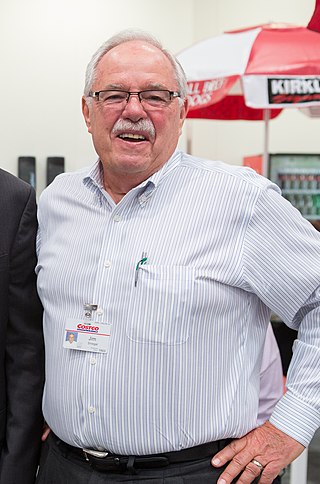
James D. "Jim" Sinegal is an American billionaire businessman who is the co-founder and former CEO of the Costco Wholesale Corporation, an international retail chain.
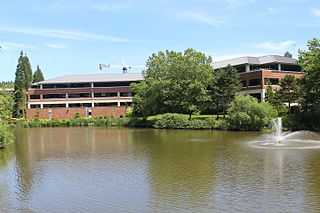
Costco Wholesale Corporation is an American multinational corporation which operates a chain of membership-only big-box retail stores. As of 2020, Costco was the third largest retailer in the world, and the world's largest retailer of choice and prime beef, organic foods, rotisserie chicken, and wine as of 2016. In 2021, Costco was ranked #10 on the Fortune 500 rankings of the largest United States corporations by total revenue.
Om Prakash Chautala, Indian politician births

Om Prakash Chautala is a Indian politician from Haryana who served as a former Chief Minister of Haryana from Indian National Lok Dal and son of 6th Deputy Prime Minister Chaudhary Devi Lal.
Alan Berg, American lawyer and radio host (d. 1984) births

Alan Harrison Berg was an American talk radio show host in Denver, Colorado. Born to a Jewish family, he had outspoken atheistic and liberal views and a confrontational interview style. Berg was murdered by members of the white supremacist group Aryan Nations who believed in killing all Jews and sending all black people to Africa. Those involved in the killing were part of a group planning to kill prominent Jews such as Berg. Two of them, David Lane and neo-Nazi Bruce Pierce, were convicted on charges of civil rights violations, although neither was charged with murder. They were sentenced to 190 years and 252 years in prison, respectively.
Lakhdar Brahimi, Algerian politician, Algerian Minister of Foreign Affairs births

Lakhdar Brahimi is an Algerian United Nations diplomat who served as the United Nations and Arab League Special Envoy to Syria until 14 May 2014. He was Minister of Foreign Affairs of Algeria from 1991 to 1993. He served as chairman of the United Nations Panel on United Nations Peace Operations in 2000. Its highly influential report "Report of the Panel on United Nations Peacekeeping" is known as "The Brahimi Report".

The Ministry of Foreign Affairs is the Algerian government ministry which oversees the foreign relations of Algeria. Its head office is in El Mouradia, Algiers Province.
James Hormel, American philanthropist and diplomat (d. 2021) births

James Catherwood Hormel was an American philanthropist, LGBT activist, diplomat, and heir to the Hormel meatpacking fortune. He served as the United States Ambassador to Luxembourg from 1999 to 2001, and was the first openly gay man to represent the United States as an ambassador.
Joe Orton, English dramatist (d. 1967) births
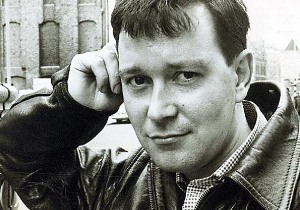
John Kingsley Orton, known by the pen name of Joe Orton, was an English playwright, author, and diarist. His public career, from 1964 until his death in 1967, was short but highly influential. During this brief period he shocked, outraged, and amused audiences with his scandalous black comedies. The adjective Ortonesque refers to work characterised by a similarly dark yet farcical cynicism.
Giuseppe Patanè, Italian conductor (d. 1989) births

Giuseppe Patanè was an Italian opera conductor.
Martinus Beijerinck, Dutch microbiologist and botanist (b. 1851) deaths
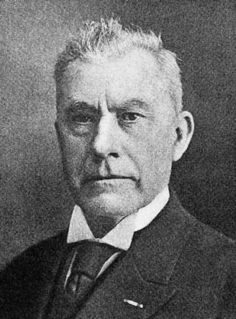
Martinus Willem Beijerinck was a Dutch microbiologist and botanist who was one of the founders of virology and environmental microbiology. He is credited with the discovery of viruses, which he called "contagium vivum fluidum".
Frederick Wiseman, American director and producer births
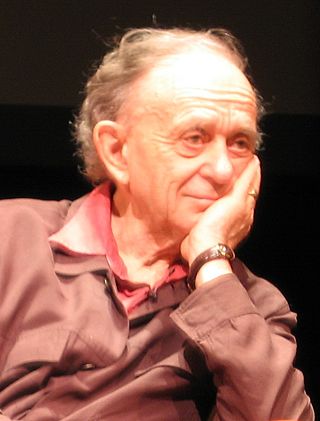
Frederick Wiseman is an American filmmaker, documentarian, and theater director. His work is "devoted primarily to exploring American institutions". He has been called "one of the most important and original filmmakers working today".
Larry L. King, American journalist, author, and playwright (d. 2012) births
Larry L. King was an American playwright, journalist, and novelist, best remembered for his 1978 Tony Award-nominated play The Best Little Whorehouse in Texas, which became a long-running production on Broadway and was later turned into a feature film starring Burt Reynolds, Charles Durning, and Dolly Parton.
Mustafa Necati, Turkish civil servant and politician, Turkish Minister of Environment and Urban Planning (b. 1894) deaths

Mustafa Necati, also known as Mustafa Necati Uğural was a Turkish statesman in the early years of the Turkish Republic, who served as the Minister of National Education during the reform period. He died before the Turkish Surname Law was adopted and the surname Uğural is actually the surname his family members adopted after his death.
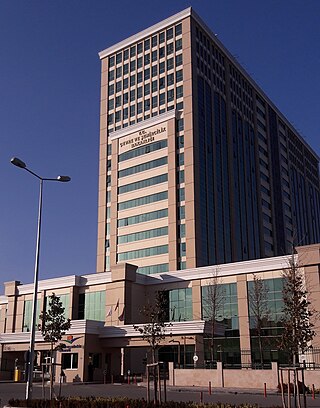
The Ministry of Environment, Urbanisation and Climate Change is a government ministry office of the Republic of Turkey, responsible for the environment, public works, and urban planning in Turkey. The ministry is headed by Murat Kurum.
Ernest Tidyman, American author and screenwriter (d. 1984) births
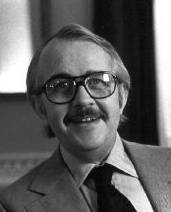
Ernest Ralph Tidyman was an American author and screenwriter, best known for his novels featuring the African-American detective John Shaft. He also co-wrote the screenplay for the film version of Shaft with John D. F. Black in 1971.
Gerhard Weinberg, German-American historian, author, and academic births

Gerhard Ludwig Weinberg is a German-born American diplomatic and military historian noted for his studies in the history of Nazi Germany and World War II. Weinberg is the William Rand Kenan, Jr. Professor Emeritus of History at the University of North Carolina at Chapel Hill. He has been a member of the history faculty at UNC-Chapel Hill since 1974. Previously he served on the faculties of the University of Michigan (1959–1974) and the University of Kentucky (1957–1959).
Maurice Béjart, French-Swiss dancer, choreographer, and director (d. 2007) births

Maurice Béjart was a French-born dancer, choreographer and opera director who ran the Béjart Ballet Lausanne in Switzerland. He developed a popular expressionistic form of modern ballet, talking vast themes. He was awarded Swiss citizenship posthumously.
James Reeb, American clergyman and political activist (d. 1965) births

James Joseph Reeb was an American Unitarian Universalist minister, pastor, and activist during the civil rights movement in Washington, D.C. and Boston, Massachusetts. While participating in the Selma to Montgomery marches actions in Selma, Alabama, in 1965, he was murdered by white segregationists, dying of head injuries in the hospital two days after being severely beaten. Three men were tried for Reeb's murder but were acquitted by an all-white jury. His murder remains officially unsolved.
Vernon L. Smith, American economist and academic, Nobel Prize laureate births

Vernon Lomax Smith is an American economist and professor of business economics and law at Chapman University. He is formerly a professor of economics at the University of Arizona, professor of economics and law at George Mason University, and a board member of the Mercatus Center. Along with Daniel Kahneman, Smith shared the 2002 Nobel Memorial Prize in Economic Sciences for his contributions to behavioral economics and his work in the field of experimental economics. He worked to establish 'laboratory experiments as a tool in empirical economic analysis, especially in the study of alternative market mechanisms'.

The Nobel Memorial Prize in Economic Sciences, officially the Sveriges Riksbank Prize in Economic Sciences in Memory of Alfred Nobel, is an economics award administered by the Nobel Foundation.
Doak Walker, American football player and businessman (d. 1998) births
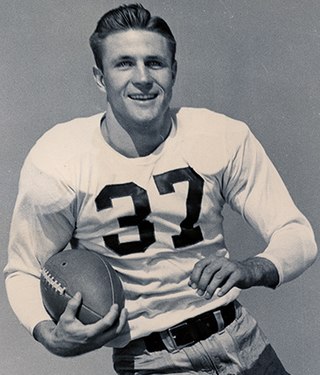
Ewell Doak Walker II was an American football player. He played college football as a halfback at Southern Methodist University (SMU), where he won the Heisman Trophy in 1948. Walker then played professionally in the National Football League (NFL) with the Detroit Lions for six seasons, from 1950 to 1955.
Kazys Petkevičius, Lithuanian basketball player and coach (d. 2008) births
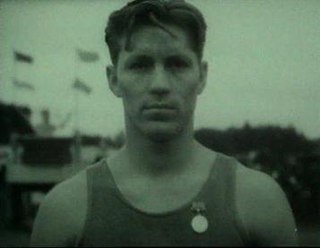
Kazys Petkevičius was a Lithuanian basketball player who competed for the Soviet Union in the 1952 Summer Olympics and in the 1956 Summer Olympics. He played for Žalgiris in Kaunas and later for Spartak Leningrad in Leningrad.
Matthew Beard, American child actor (d. 1981) births

Matthew Beard Jr. was an American actor. As a child actor, he was most famous for portraying the character of Stymie in the Our Gang short films from 1930 to 1935. The role was so high-profile that he adopted the name Stymie Beard, being credited as such in some later roles, such as his 1978 appearance in The Buddy Holly Story.
Paul Bomani, Tanzanian politician and diplomat, 1st Tanzanian Minister of Finance (d. 2005) births

Paul Lazaro Bomani was a Tanzanian politician and ambassador to the United States and Mexico.

The Minister of Finance is the head of the Ministry of Finance and Economic Affairs of the Government of Tanzania.
Francisco Macías Nguema, Equatorial Guinean politician, 1st President of the Republic of Equatorial Guinea (d. 1979) births

Francisco Macías Nguema, often mononymously referred to as Macías, was an Equatoguinean politician who served as the first President of Equatorial Guinea from the country's independence in 1968 until his overthrow in 1979. He is widely remembered as one of the most brutal dictators in history.

This article lists the presidents of Equatorial Guinea, a country in the Gulf of Guinea and on the western equatorial coast of Central Africa, since the establishment of the office of president in 1968. Francisco Macías Nguema was the first person to hold the office, taking effect on 12 October 1968. The incumbent is Teodoro Obiang Nguema Mbasogo, having taken office on 3 August 1979.
Valentina Cortese, Italian actress (d. 2019) births

Valentina Cortese was an Italian actress. She was nominated for the Academy Award for Best Supporting Actress for her performance in François Truffaut's Day for Night (1973).
Milt Jackson, American jazz vibraphonist and composer (d. 1999) births
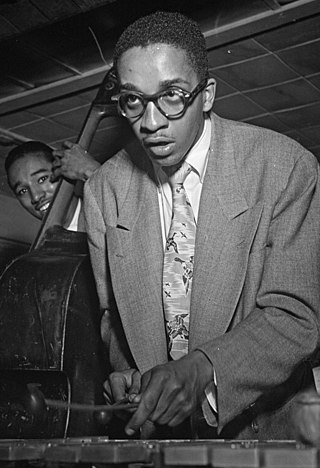
Milton Jackson, nicknamed "Bags", was an American jazz vibraphonist, usually thought of as a bebop player, although he performed in several jazz idioms. He is especially remembered for his cool swinging solos as a member of the Modern Jazz Quartet and his penchant for collaborating with hard bop and post-bop players.
Ernest Hollings, American soldier and politician, 106th Governor of South Carolina (d. 2019) births

Ernest Frederick "Fritz" Hollings was an American politician who served as a United States senator from South Carolina from 1966 to 2005. A conservative Democrat, he was also the 106th governor of South Carolina, the 77th lieutenant governor of South Carolina, and a member of the South Carolina House of Representatives. He served alongside Democrat turned Republican Senator Strom Thurmond for 36 years, making them the longest-serving Senate duo in history. At the time of his death, he was the oldest living former U.S. senator.
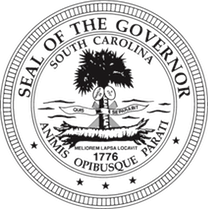
The governor of South Carolina is the head of government of South Carolina. The governor is the ex officio commander-in-chief of the National Guard when not called into federal service. The governor's responsibilities include making yearly "State of the State" addresses to the South Carolina General Assembly, submitting an executive budget, and ensuring that state laws are enforced.
Ismail al-Faruqi, Palestinian-American philosopher and academic (d. 1986) births
Ismaʻīl Rājī al-Fārūqī was a Palestinian-American philosopher. He spent several years at Al-Azhar University in Cairo, then taught at several universities in North America, including McGill University in Montreal. He was Professor of Religion at Temple University, where he founded and chaired the Islamic Studies program. Al-Faruqi was also the founder of the International Institute of Islamic Thought. He wrote over 100 articles for various scholarly journals and magazines in addition to 25 books, of the most notable being Christian Ethics: A Historical and Systematic Analysis of Its Dominant Ideas. He also established the Islamic Studies Group of the American Academy of Religion and chaired it for ten years. He served as the vice-president of the Inter-Religious Peace Colloquium, The Muslim-Jewish-Christian Conference and as the president of the American Islamic College in Chicago.
César Baldaccini, French sculptor and academic (d. 1998) births
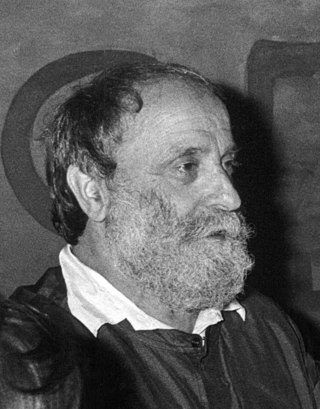
César, also occasionally referred to as César Baldaccini, was a noted French sculptor.
Regina Bianchi, Italian actress (d. 2013) births

Regina Bianchi was an Italian stage and film actress.
Theobald von Bethmann-Hollweg, German lawyer and politician, 5th Chancellor of Germany (b. 1856) deaths

Theobald Theodor Friedrich Alfred von Bethmann Hollweg was a German politician who was the chancellor of the German Empire from 1909 to 1917. He oversaw the German entry into World War I. According to biographer Konrad H. Jarausch, a primary concern for Bethmann in July 1914 was the steady growth of Russian power, and the growing closeness of the British and French military collaboration. Under these circumstances he decided to run what he considered a calculated risk to back Austria-Hungary in a local war against Serbia, while risking a major war with Russia. He calculated that France would not support Russia. It failed when Russia decided on general mobilization, and his own army demanded the opportunity to use the Schlieffen Plan for quick victory against a poorly prepared France. By rushing through Belgium, Germany expanded the war to include the United Kingdom. Bethmann thus failed to keep France and Britain out of the conflict, which became the First World War. He remained in office throughout most of the war, until July 1917, when he relinquished the post in response to pressure from Erich von Ludendorff and was succeeded by Georg Michaelis.

The chancellor of Germany, officially the federal chancellor of the Federal Republic of Germany, is the head of the federal government of Germany and the commander in chief of the German Armed Forces during wartime. The chancellor is the chief executive of the Federal Cabinet and heads the executive branch. The chancellor is elected by the Bundestag on the proposal of the federal president and without debate.
Osvaldo Cavandoli, Italian cartoonist (d. 2007) births

Osvaldo Cavandoli, also known by his pen name Cava, was an Italian cartoonist. His most famous work is his series of short animated cartoons, La Linea.
Rocky Graziano, American boxer and actor (d. 1990) births

Thomas Rocco Barbella, better known as Rocky Graziano, was an American professional boxer and actor who held the World Middleweight title. Graziano is considered one of the greatest knockout artists in boxing history, often displaying the capacity to take his opponent out with a single punch. He was ranked 23rd on The Ring magazine list of the greatest punchers of all time. He fought many of the best middleweights of the era including Sugar Ray Robinson. His turbulent and violent life story was the basis of the 1956 Oscar-winning drama film, Somebody Up There Likes Me, based on his 1955 autobiography of the same title.
Carole Landis, American actress (d. 1948) births

Carole Landis was an American actress and singer. She worked as a contract player for Twentieth Century-Fox in the 1940s. Her breakout role was as the female lead in the 1940 film One Million B.C. from United Artists. She was known as "The Ping Girl" and "The Chest" because of her curvy figure.
Sheila Mercier, British actress, Emmerdale Farm (d. 2019) births
Sheila Betty Mercier was an English actress, of stage and television, best known for playing Annie Sugden in the soap opera Emmerdale for over 20 years, from the programme's first episode in 1972 until the mid-1990s, with a guest return in 2009.

Emmerdale is a British soap opera that is broadcast on ITV1. The show is set in Emmerdale, a fictional village in the Yorkshire Dales. Created by Kevin Laffan, Emmerdale Farm was first broadcast on 16 October 1972. Interior scenes have been filmed at the Leeds Studios since its inception. Exterior scenes were first filmed in Arncliffe in Littondale, and the series may have taken its name from Amerdale, an ancient name of Littondale. Exterior scenes were later shot at Esholt, but are now shot at a purpose-built set on the Harewood estate. The programme is broadcast in every ITV region.
J. D. Salinger, American soldier and author (d. 2010) births
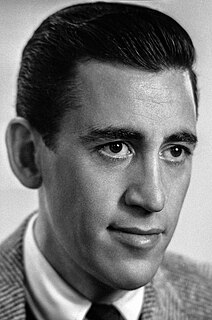
Jerome David Salinger was an American author best known for his 1951 novel The Catcher in the Rye. Salinger got his start in 1940, before serving in World War II, by publishing several short stories in Story magazine. In 1948, his critically acclaimed story "A Perfect Day for Bananafish" appeared in The New Yorker, which published much of his later work.
Patrick Anthony Porteous, Scottish colonel, Victoria Cross recipient (d. 2000) births
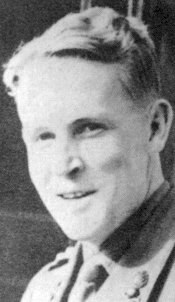
Colonel Patrick Anthony Porteous VC was a Scottish recipient of the Victoria Cross, the highest and most prestigious award for gallantry in the face of the enemy that can be awarded to British and Commonwealth forces.

The Victoria Cross (VC) is the highest and most prestigious award of the British honours system. It is awarded for valour "in the presence of the enemy" to members of the British Armed Forces and may be awarded posthumously. It was previously awarded by countries of the Commonwealth of Nations, most of which have established their own honours systems and no longer recommend British honours. It may be awarded to a person of any military rank in any service and to civilians under military command. No civilian has received the award since 1879. Since the first awards were presented by Queen Victoria in 1857, two-thirds of all awards have been personally presented by the British monarch. The investitures are usually held at Buckingham Palace.
Willy den Ouden, Dutch swimmer (d. 1997) births
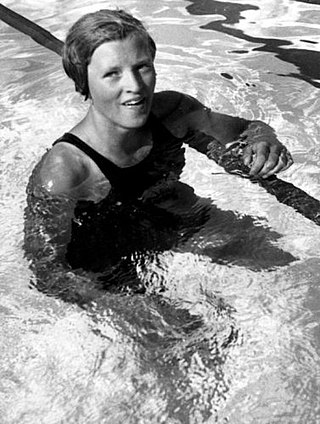
Willemijntje den Ouden was a competitive swimmer from the Netherlands, who held the 100-meter freestyle world record for nearly 23 years, from 1933 to 1956.
William Wilfred Campbell, Canadian poet and author (b. 1858) deaths

William Wilfred Campbell was a Canadian poet. He is often classed as one of the country's Confederation Poets, a group that included fellow Canadians Charles G.D. Roberts, Bliss Carman, Archibald Lampman, and Duncan Campbell Scott; he was a colleague of Lampman and Scott. By the end of the 19th century, he was considered the "unofficial poet laureate of Canada." Although not as well known as the other Confederation poets today, Campbell was a "versatile, interesting writer" who was influenced by Robert Burns, the English Romantics, Edgar Allan Poe, Ralph Waldo Emerson, Henry Wadsworth Longfellow, Thomas Carlyle, and Alfred Tennyson. Inspired by these writers, Campbell expressed his own religious idealism in traditional forms and genres.
Shannon Bolin, American actress and singer (d. 2016) births
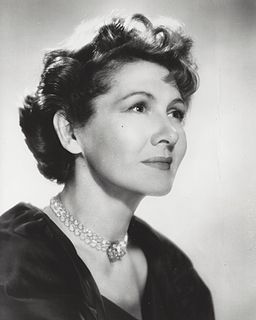
Shannon Bolin was an American actress and singer. A March 10, 1941, article in The Mason City Globe-Gazette said that she was "known as 'The Lady with the Dark Blue Voice'".
Noor Inayat Khan, British SOE agent (d. 1944) births

Noor-un-Nisa Inayat Khan, GC, also known as Nora Inayat-Khan and Nora Baker, was a British resistance agent in France in World War II who served in the Special Operations Executive (SOE). The purpose of SOE was to conduct espionage, sabotage, and reconnaissance in countries occupied by the Axis powers, especially those occupied by Nazi Germany. SOE agents allied themselves with resistance groups and supplied them with weapons and equipment parachuted in from the United Kingdom.
The Special Operations Executive (SOE) was a secret British World War II organisation. It was officially formed on 22 July 1940 under Minister of Economic Warfare Hugh Dalton, from the amalgamation of three existing secret organisations. Its purpose was to conduct espionage, sabotage and reconnaissance in occupied Europe against the Axis powers, and to aid local resistance movements.
Boris Vladimirovich Gnedenko, Russian mathematician and historian (d. 1995) births
Boris Vladimirovich Gnedenko was a Soviet Ukrainian mathematician and a student of Andrey Kolmogorov. He was born in Simbirsk, Russia, and died in Moscow. He is perhaps best known for his work with Kolmogorov, and his contributions to the study of probability theory, particularly extreme value theory, with such results as the Fisher–Tippett–Gnedenko theorem. Gnedenko was appointed as Head of the Physics, Mathematics and Chemistry Section of the Ukrainian Academy of Sciences in 1949, and became Director of the NASU Institute of Mathematics in 1955.
Kim Philby, British spy (d. 1988) births

Harold Adrian Russell "Kim" Philby was a British intelligence officer and a double agent for the Soviet Union. In 1963 he was revealed to be a member of the Cambridge Five, a spy ring which had divulged British secrets to the Soviets during World War II and in the early stages of the Cold War. Of the five, Philby is believed to have been most successful in providing secret information to the Soviets.
Nikiforos Vrettakos, Greek poet and academic (d. 1991) births
Nikiforos Vrettakos was a Greek writer and poet.
Audrey Wurdemann, American poet and author (d. 1960) births

Audrey Wurdemann Auslander was an American poet. She was the youngest winner of the Pulitzer Prize for Poetry at the age of 24, for her collection Bright Ambush.
Basil Dearden, English director, producer, and screenwriter (d. 1971) births

Basil Dearden was an English film director.
Hank Greenberg, American baseball player (d. 1986) births
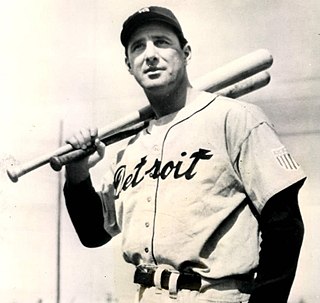
Henry Benjamin Greenberg, nicknamed "Hammerin' Hank", "Hankus Pankus", or "The Hebrew Hammer", was an American professional baseball player and team executive. He played in Major League Baseball (MLB), primarily for the Detroit Tigers as a first baseman in the 1930s and 1940s. A member of the Baseball Hall of Fame and a two-time Most Valuable Player (MVP) Award winner, he was one of the premier power hitters of his generation and is widely considered one of the greatest sluggers in baseball history. He had 47 months of military service including service in World War II, all of which took place during what would have been prime years in his major league career.
Roman Totenberg, Polish-American violinist and educator (d. 2012) births

Roman Totenberg was a Polish-American violinist and educator. A child prodigy, he lived in Poland, Moscow, Berlin, and Paris, before formally immigrating to the U.S. in 1938, at age 27. He performed and taught nationally and internationally throughout his life.
Dana Andrews, American actor (d. 1992) births
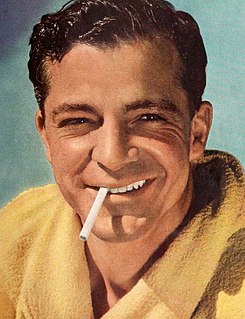
Carver Dana Andrews was an American film actor who became a major star in what is now known as film noir. A leading man during the 1940s, he continued acting in less prestigious roles and character parts into the 1980s. He is best known for his portrayal of obsessed police detective Mark McPherson in the noir Laura (1944) and his critically acclaimed performance as World War II veteran Fred Derry in The Best Years of Our Lives (1946).
Stepan Bandera, Ukrainian soldier and politician (d. 1959) births
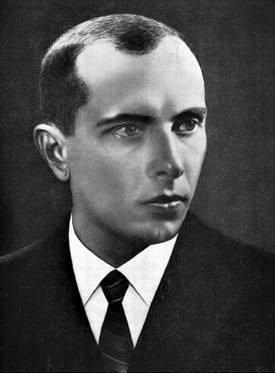
Stepan Andriyovych Bandera was a Ukrainian far-right leader of the radical, terrorist wing of the Organization of Ukrainian Nationalists named OUN-B.
Kinue Hitomi, Japanese sprinter and long jumper (d. 1931) births
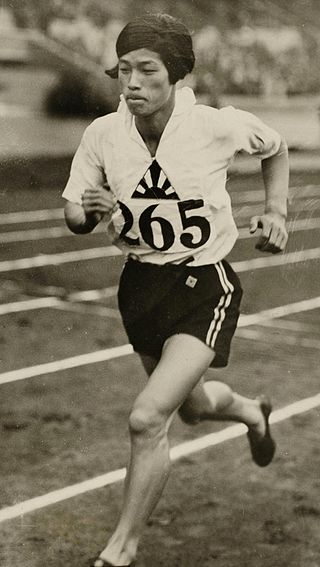
Kinue Hitomi was a Japanese track and field athlete. She was the world record holder in several events in the 1920s – 1930s and was the first Japanese woman to win an Olympic medal. She was also the first woman to represent Japan at the Olympics.
Manuel Silos, Filipino filmmaker and actor (d. 1988) births
Manuel Silos was an award-winning Filipino film-maker from the 1920s through the 1950s. He began his career by making silent movies together with his brothers. As a bodabil (vaudeville) actor and comedian, Silos used the stage and screen name Santo Tulia. He appeared in romantic-comedy films such as Victory Joe in 1946, Puppy Love in 1956, and Tuloy and Ligaya in 1958. He became known for his FAMAS-awarded film Biyaya ng Lupa. In 1979, Silos received the Natatanging Gawad Urian. In 1985, he received the Lifetime Achievement Award from the Film Academy of the Philippines (FAP).
Hugh Nelson, Scottish-Australian farmer and politician, 11th Premier of Queensland (b. 1833) deaths

Sir Hugh Muir Nelson, was Premier of Queensland from 1893 to 1898.
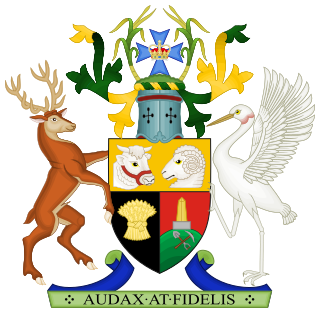
The premier of Queensland is the head of government in the Australian state of Queensland.
Stanisław Mazur, Ukrainian-Polish mathematician and theorist (d. 1981) births

Stanisław Mieczysław Mazur was a Polish mathematician and a member of the Polish Academy of Sciences.
Fazal Ilahi Chaudhry, Pakistani lawyer and politician, 5th President of Pakistan (d. 1982) births

Fazal Elahi Chaudhry was a Pakistani politician who served as the fifth president of Pakistan from 1973 until 1978, prior to the martial law led by Chief of Army Staff General Zia-ul-Haq. He also served as the deputy speaker of the National Assembly of Pakistan from 1965 to 1969 and the eighth speaker of the National Assembly of Pakistan from 1972 to 1973.

The president of Pakistan, officially the President of the Islamic Republic of Pakistan, is the ceremonial head of state of Pakistan and the commander-in-chief of the Pakistan Armed Forces.
Buster Nupen, Norwegian-South African cricketer and lawyer (d. 1977) births
Eiulf Peter "Buster" Nupen was a cricketer who played in 17 Test matches for South Africa between 1921–22 and 1935–36. He was born in Norway, lost an eye in a childhood accident and was shot through both knees when he was 20.
Hans von Dohnányi, German jurist and political dissident (d. 1945) births

Hans von Dohnanyi was a German jurist. He used his position in the Abwehr to help Jews escape Germany, worked with German resistance against the Nazi régime, and after the failed 20 July Plot, he was accused of being the "spiritual leader" of the conspiracy to assassinate Hitler, and executed by the SS in 1945.
Chiune Sugihara, Japanese soldier and diplomat (d. 1986) births
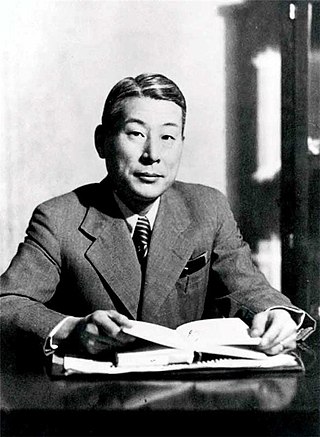
Chiune Sugihara was a Japanese diplomat who served as vice-consul for the Japanese Empire in Kaunas, Lithuania. During the Second World War, Sugihara helped thousands of Jews flee Europe by issuing transit visas to them so that they could travel through Japanese territory, risking his job and the lives of his family. The fleeing Jews were refugees from German-occupied Western Poland and Soviet-occupied Eastern Poland, as well as residents of Lithuania. In 1985, the State of Israel honored Sugihara as one of the Righteous Among the Nations for his actions. He is the only Japanese national to have been so honored. The year 2020 was "The Year Chiune Sugihara" in Lithuania. It has been estimated as many as 100,000 people alive today are the descendants of the recipients of Sugihara visas.
Xavier Cugat, Spanish-American singer-songwriter and actor (d. 1990) births

Xavier Cugat was a Spanish musician and bandleader who spent his formative years in Havana, Cuba. A trained violinist and arranger, he was a leading figure in the spread of Latin music. In New York City he was the leader of the resident orchestra at the Waldorf–Astoria before and after World War II. He was also a cartoonist and a restaurateur. The personal papers of Xavier Cugat are preserved in the Biblioteca de Catalunya.
Alfred Ely Beach, American publisher and lawyer, created the Beach Pneumatic Transit (b. 1826) deaths

Alfred Ely Beach was an American inventor, publisher, and patent lawyer, born in Springfield, Massachusetts. He is most known for his design of New York City's earliest subway predecessor, the Beach Pneumatic Transit. A member of the Union League of New York, he also patented a typewriter for the blind and a system for heating water with solar power.

The Beach Pneumatic Transit was the first attempt to build an underground public transit system in New York City. It was developed by Alfred Ely Beach in 1869 as a demonstration subway line running on pneumatic power. The subway line had one stop in the basement of the Rogers Peet Building and a one-car shuttle going back and forth. It was not a regular mode of transportation, and lasted from 1870 until 1873.
J. Edgar Hoover, American law enforcement official; 1st Director of the Federal Bureau of Investigation (d. 1972) births
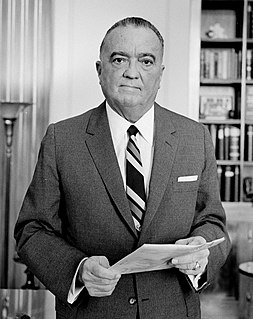
John Edgar Hoover was an American law enforcement administrator who served as the first Director of the Federal Bureau of Investigation (FBI). He was appointed director of the Bureau of Investigation – the FBI's predecessor – in 1924 and was instrumental in founding the FBI in 1935, where he remained director for another 37 years until his death in 1972. Hoover built the FBI into a larger crime-fighting agency than it was at its inception and instituted a number of modernizations to police technology, such as a centralized fingerprint file and forensic laboratories. Hoover also established and expanded a national blacklist, referred to as the FBI Index or Index List.

The director of the Federal Bureau of Investigation is the head of the Federal Bureau of Investigation, a United States' federal law enforcement agency, and is responsible for its day-to-day operations. The FBI Director is appointed for a single 10-year term by the President of the United States and confirmed by the Senate. The FBI is an agency within the Department of Justice (DOJ), and thus the Director reports to the Attorney General of the United States.
Satyendra Nath Bose, Indian physicist and mathematician (d. 1974) births

Satyendra Nath Bose was an Indian mathematician and physicist specializing in theoretical physics. He is best known for his work on quantum mechanics in the early 1920s, in developing the foundation for Bose statistics and the theory of the Bose condensate. A Fellow of the Royal Society, he was awarded India's second highest civilian award, the Padma Vibhushan, in 1954 by the Government of India.
Edward Joseph Hunkeler, American clergyman (d. 1970) births
Edward Joseph Hunkeler was an American prelate of the Roman Catholic Church who served as bishop of the Diocese of Grand Island, Nebraska (1945–1951), and Bishop and Archbishop of the Archdiocese of Kansas City, Kansas (1951–1969).
Heinrich Hertz, German physicist and academic (b. 1857) deaths

Heinrich Rudolf Hertz was a German physicist who first conclusively proved the existence of the electromagnetic waves predicted by James Clerk Maxwell's equations of electromagnetism. The unit of frequency, cycle per second, was named the "hertz" in his honor.
Mordechai Frizis, Greek colonel (d. 1940) births

Mordechai Frizis was a Hellenic Army officer, who fought in World War I, distinguished himself in World War II, and was killed on 5 December 1940, fighting against the Julia Division.
Mahadev Desai, Indian author and activist (d. 1942) births

Mahadev Haribhai Desai was an Indian independence activist, scholar and writer best remembered as Mahatma Gandhi's personal secretary. He has variously been described as "Gandhi's Boswell, a Plato to Gandhi's Socrates, as well as an Ānanda to Gandhi's Buddha".
Artur Rodziński, Polish-American conductor (d. 1958) births

Artur Rodziński was a Polish-American conductor of orchestral music and opera. He began his career after World War I in Poland, where he was discovered by Leopold Stokowski, who invited him to be his assistant with the Philadelphia Orchestra. This engagement led to Rodziński becoming music director of the Los Angeles Philharmonic, Cleveland Orchestra, New York Philharmonic, and the Chicago Symphony Orchestra. He also prepared the NBC Symphony Orchestra for Arturo Toscanini before the Italian conductor's debut with them. A dispute in Chicago led to Rodziński's dismissal in 1948, whereupon he shifted his career to Europe, eventually settling in Italy, although continuing to maintain a home in Lake Placid, New York. In November 1958, beset by heart disease, he made his professional return to the United States for the first time in a decade, conducting acclaimed performances of Richard Wagner's Tristan und Isolde with the Lyric Opera of Chicago. Exhausted, he checked into Massachusetts General Hospital where he died 11 days later.
Manuel Roxas, Filipino lawyer and politician, 5th President of the Philippines (d. 1948) births
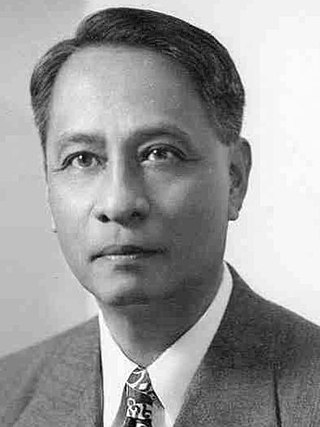
Manuel Acuña Roxas was a Filipino lawyer and politician who served as the fifth president of the Philippines, who served from 1946 until his death due to heart attacks in 1948. He served briefly as the third and last president of the Commonwealth of the Philippines from May 28, 1946, to July 4, 1946, and became the first president of the independent Third Philippine Republic after the United States ceded its sovereignty over the Philippines.

The president of the Philippines is the head of state, head of government and chief executive of the Philippines. The president leads the executive branch of the Philippine government and is the commander-in-chief of the Armed Forces of the Philippines.
Roswell B. Mason, American lawyer and politician, 25th Mayor of Chicago (b. 1805) deaths
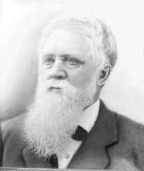
Roswell B. Mason served as mayor of Chicago, Illinois (1869–1871) for the Citizens Party.

The mayor of Chicago is the chief executive of city government in Chicago, Illinois, the third-largest city in the United States. The mayor is responsible for the administration and management of various city departments, submits proposals and recommendations to the Chicago City Council, is active in the enforcement of the city's ordinances, submits the city's annual budget and appoints city officers, department commissioners or directors, and members of city boards and commissions.
Sampurnanand, Indian educator and politician, 3rd Governor of Rajasthan (d. 1969) births

Sampurnanand was a teacher and politician in Uttar Pradesh, India. He served as the second Chief Minister of Uttar Pradesh from 1954 to 1960. If single tenures in the office of the Uttar Pradesh Chief Ministers are only considered, then Dr. Sampurnanand had the longest stretch from 28 December 1954 to 7 December 1960, which is almost six years in the office. Dr. Sampurnanand, a scholar of Sanskrit and Hindi, succeeded Govind Ballabh Pant. Advised by a council of ministers numbering 28, he governed Uttar Pradesh was asked to resign as Chief Minister following a political crisis in Uttar Pradesh initiated by Kamlapati Tripathi and Chandra Bhanu Gupta.

The governor of Rajasthan is the nominal head of state and the representative of the president of India of the state of Rajasthan. The governor's powers are mostly ceremonial and the executive powers of the governor are exercised by the chief minister of Rajasthan, who is the head of the executive of the state government of Rajasthan. The following is a list of governors of Rajasthan.
Anton Melik, Slovenian geographer and academic (d. 1966) births

Anton Melik was a Slovene geographer.
Charles Bickford, American actor (d. 1967) births

Charles Ambrose Bickford was an American actor known for supporting roles. He was nominated three times for the Academy Award for Best Supporting Actor, for The Song of Bernadette (1943), The Farmer's Daughter (1947), and Johnny Belinda (1948). His other roles include Whirlpool (1950), A Star Is Born (1954), and The Big Country (1958).
Georgios Stanotas, Greek general (d. 1965) births

Georgios Stanotas was a Greek cavalry officer who rose to the rank of lieutenant general.
John Garand, Canadian-American engineer, designed the M1 Garand rifle (d. 1974) births

Jean Cantius Garand, also known as John C. Garand, was a Québec-born American designer of firearms who created the M1 Garand, a semi-automatic rifle that was widely used by the U.S. Army and U.S. Marine Corps during both World War II and the Korean War.

The M1 Garand or M1 rifle is a semi-automatic rifle that was the service rifle of the U.S Army during World War II and the Korean War.
Wilhelm Canaris, German admiral (d. 1945) births
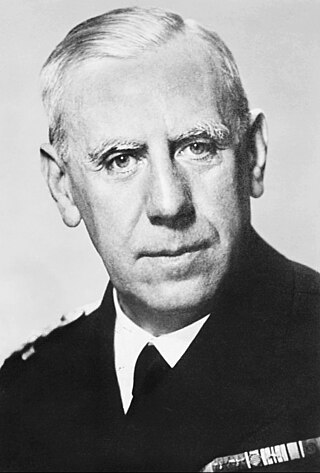
Wilhelm Franz Canaris was a German admiral and the chief of the Abwehr from 1935 to 1944. Canaris was initially a supporter of Adolf Hitler, and the Nazi regime. However, following the German invasion of Poland in 1939, Canaris turned against Hitler and committed acts of both passive and active resistance during the war.
Chikuhei Nakajima, Japanese lieutenant, engineer, and politician, founded Nakajima Aircraft Company (d. 1949) births

Chikuhei Nakajima , was a Japanese naval officer, engineer, and politician, who is most notable for having founded Nakajima Aircraft Company in 1917, a major supplier of airplanes in the Empire of Japan. He also served as a cabinet minister.

The Nakajima Aircraft Company was a prominent Japanese aircraft manufacturer and aviation engine manufacturer throughout World War II. It continues as the car and aircraft manufacturer Subaru.
William J. Donovan, American general, lawyer, and politician (d. 1959) births

William Joseph "Wild Bill" Donovan was an American soldier, lawyer, intelligence officer and diplomat, best known for serving as the head of the Office of Strategic Services (OSS), the precursor to the Bureau of Intelligence and Research and the Central Intelligence Agency, during World War II. He is regarded as the founding father of the CIA, and a statue of him stands in the lobby of the CIA headquarters building in Langley, Virginia.
Louis Auguste Blanqui, French activist (b. 1805) deaths

Louis Auguste Blanqui was a French socialist and political activist, notable for his revolutionary theory of Blanquism.
E. M. Forster, English author and playwright (d. 1970) births

Edward Morgan Forster was an English author, best known for his novels, particularly A Room with a View (1908), Howards End (1910), and A Passage to India (1924). He also wrote numerous short stories, essays, speeches and broadcasts, as well a limited number of biographies and some pageant plays. He also co-authored the opera Billy Budd (1951). Today, he is considered one of the most successful of the Edwardian era English novelists.
William Fox, Hungarian-American screenwriter and producer, founded the Fox Film Corporation and Fox Theatres (d. 1952) births

Wilhelm Fried Fuchs, commonly and better known as William Fox, was a Hungarian-American film industry executive who founded the Fox Film Corporation in 1915 and the Fox West Coast Theatres chain in the 1920s. Although he lost control of his film businesses in 1930, his name was used by 20th Century Fox and continues to be used in the trademarks of the present-day Fox Corporation, including the Fox Broadcasting Company, Fox News, Fox Sports and Foxtel.
The Fox Film Corporation was an American Independent film production studio formed by William Fox (1879–1952) in 1915, by combining his earlier Greater New York Film Rental Company and Box Office Attractions Film Company.

Fox Theatres was a large chain of movie theaters in the United States dating from the 1920s either built by Fox Film studio owner William Fox, or subsequently merged in 1929 by Fox with the West Coast Theatres chain, to form the Fox West Coast Theatres chain. Fox West Coast went into bankruptcy and was sold to The National Theatres Corporation, led by Charles Skouras, on November 20, 1933, for $17,000,000.00. Eugene V. Klein later became CEO of National, and turned it into the conglomerate National General. Mann Theatres bought National General's theatres in 1973.
Agner Krarup Erlang, Danish mathematician, statistician, and engineer (d. 1929) births
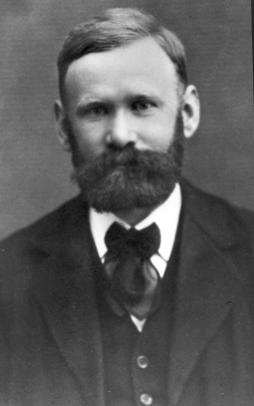
Agner Krarup Erlang was a Danish mathematician, statistician and engineer, who invented the fields of traffic engineering and queueing theory.
Alexander von Staël-Holstein, German sinologist and orientalist (d. 1937) births

Alexander Wilhelm Freiherr Staël von Holstein ; was a Baltic German aristocrat, Russian and Estonian orientalist, sinologist, and Sanskritologist specializing in Buddhist texts.
Frank Knox, American publisher and politician, 46th United States Secretary of the Navy (d. 1944) births

William Franklin Knox was an American politician, newspaper editor and publisher. He was also the Republican vice presidential candidate in 1936, and Secretary of the Navy under Franklin D. Roosevelt during most of World War II. On December 7, 1941, Knox flanked by his assistant John O’Keefe walked into Roosevelt's White House study at approximately 1:30 p.m. EST announcing that Japan had attacked Pearl Harbor.

The secretary of the Navy is a statutory officer and the head of the Department of the Navy, a military department within the United States Department of Defense.
Gustave Whitehead, German-American pilot and engineer (d. 1927) births
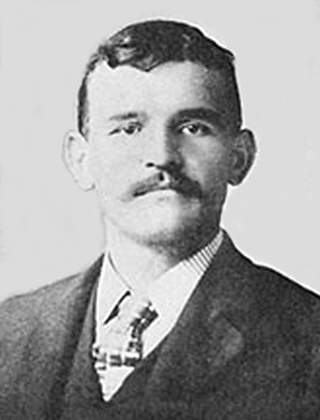
Gustave Albin Whitehead was an aviation pioneer who emigrated from Germany to the United States where he designed and built gliders, flying machines, and engines between 1897 and 1915. Controversy surrounds published accounts and Whitehead's own claims that he flew a powered machine successfully several times in 1901 and 1902, predating the first flights by the Wright Brothers in 1903.
Mary Acworth Evershed, English astronomer and scholar (d. 1949) births
Mary Acworth Evershed was a British astronomer and scholar. Her work on Dante Alighieri was written under the pen name M.A. Orr. Although her middle name is increasingly appearing as Ackworth, this is incorrect. She always gave it as Acworth, and it appeared as such in both her obituaries. The one appearing in the Monthly Notices of the Royal Astronomical Society was written by her nephew A. David Thackeray, who presumably would have known. The first appearance of this incorrect version could well have occurred in the proposal of Mary to be a Fellow of the Royal Astronomical Society; the correct spelling appears when she was subsequently elected a Fellow.
Alfred Stieglitz, American photographer and curator (d. 1946) births

Alfred Stieglitz was an American photographer and modern art promoter who was instrumental over his 50-year career in making photography an accepted art form. In addition to his photography, Stieglitz was known for the New York art galleries that he ran in the early part of the 20th century, where he introduced many avant-garde European artists to the U.S. He was married to painter Georgia O'Keeffe.
Qi Baishi, Chinese painter (d. 1957) births

Qi Baishi was a Chinese painter, noted for the whimsical, often playful style of his works. Born to a peasant family from Xiangtan, Hunan, Qi taught himself to paint, sparked by the Manual of the Mustard Seed Garden. After he turned 40, he traveled, visiting various scenic spots in China. After 1917 he settled in Beijing. Some of Qi's major influences include the early Qing dynasty painter Bada Shanren (八大山人) and the Ming dynasty artist Xu Wei (徐渭).
Pierre de Coubertin, French historian and educator, founded the International Olympic Committee (d. 1937) births
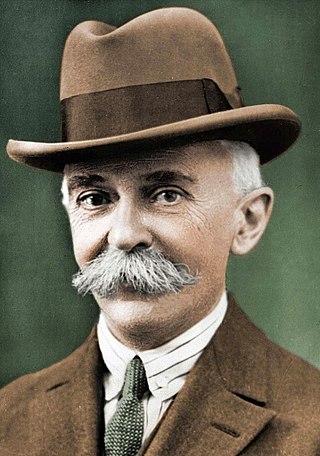
Charles Pierre de Frédy, Baron de Coubertin was a French educator and historian, founder of the International Olympic Committee, and its second president. He is known as the father of the modern Olympic Games. He was particularly active in promoting the introduction of sport in French schools.
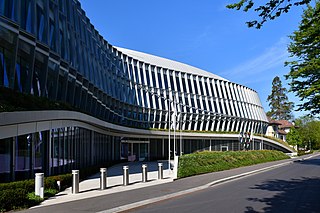
The International Olympic Committee is a non-governmental sports organisation based in Lausanne, Switzerland. It is constituted in the form of an association under the Swiss Civil Code. Founded by Pierre de Coubertin and Demetrios Vikelas in 1894, it is the authority responsible for organising the modern Olympic Games.
Mikhail Ostrogradsky, Ukrainian mathematician and physicist (b. 1801) deaths

Mikhail Vasilyevich Ostrogradsky was a Ukrainian mathematician, mechanician and physicist of Ukrainian Cossack ancestry. Ostrogradsky was a student of Timofei Osipovsky and is considered to be a disciple of Leonhard Euler, who was known as one of the leading mathematicians of Imperial Russia.
Michele Lega, Italian cardinal (d. 1935) births

Michele Lega S.T.D. J.U.D. was a Cardinal of the Roman Catholic Church who served as Prefect of the Congregation for the Discipline of Sacraments.
Michael Joseph Owens, American inventor (d. 1923) births

Michael Joseph Owens was an inventor of machines to automate the production of glass bottles.
Thibaw Min, Burmese king (d. 1916) births

Thibaw Min, also Thebaw or Theebaw was the last king of the Konbaung dynasty of Burma (Myanmar) and also the last Burmese monarch in the country's history. His reign ended when the forces of the Burmese Empire were defeated by the forces of the British Empire in the Third Anglo-Burmese War, on 29 November 1885, prior to its official annexation on 1 January 1886.
Heinrich Rauchinger, Kraków-born painter (d. 1942) births

Heinrich Rauchinger (1858–1942) was a Kraków-born history painter and portrait painter.
Tim Keefe, American baseball player (d. 1933) births
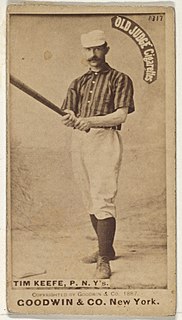
Timothy John Keefe, nicknamed "Smiling Tim" and "Sir Timothy", was an American Major League Baseball pitcher. He stood 5 feet 10 inches (1.78 m) tall and weighed 185 pounds (84 kg). He was one of the most dominating pitchers of the 19th century and posted impressive statistics in one category or another for almost every season he pitched. He was the second MLB pitcher to record 300 wins. He was elected to the Baseball Hall of Fame in 1964.
James George Frazer, Scottish anthropologist and academic (d. 1941) births
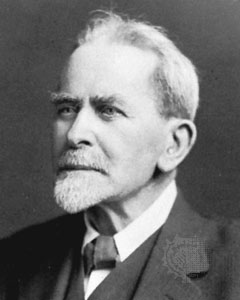
Sir James George Frazer was a Scottish social anthropologist and folklorist influential in the early stages of the modern studies of mythology and comparative religion.
Thomas Waddell, Irish-Australian politician, 15th Premier of New South Wales (d. 1940) births

Thomas Waddell, an Australian politician, was a member of the New South Wales Legislative Assembly from 1887 to 1917, was briefly the premier of New South Wales during 1904, and was a member of the New South Wales Legislative Council from 1917 to 1934. His 75 days in office marks the shortest tenure of any New South Wales premier.

The premier of New South Wales is the head of government in the state of New South Wales, Australia. The Government of New South Wales follows the Westminster Parliamentary System, with a Parliament of New South Wales acting as the legislature. The premier is appointed by the governor of New South Wales, and by modern convention holds office by his or her ability to command the support of a majority of members of the lower house of Parliament, the Legislative Assembly.
Gregory Blaxland, Australian farmer and explorer (b. 1778) deaths

Gregory Blaxland was an English pioneer farmer and explorer in Australia, noted especially for initiating and co-leading the first successful crossing of the Blue Mountains by European settlers.
Eugène-Anatole Demarçay, French chemist and academic (d. 1904) births

Eugène-Anatole Demarçay was a French chemist who designed an apparatus to produce a spark using an induction coil and used it to generate the spectra of rare earth elements which he examined using spectroscopy, thus detecting the element europium in 1896, and isolated it as the oxide europia in 1901. He helped Marie Curie to confirm the existence of another new element, radium, in 1898.
John W. Goff, Irish-American lawyer and politician (d. 1924) births

John William Goff, Sr. was an American lawyer and judge from New York City.
John Torrington, English sailor and explorer (b. 1825) deaths
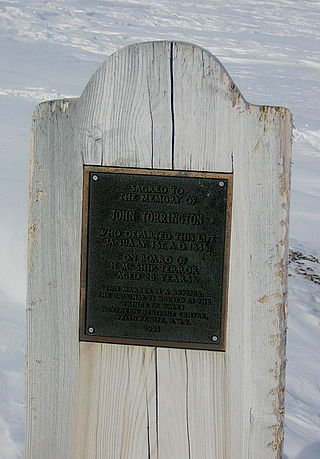
John Shaw Torrington was a Royal Navy stoker. He was part of the 1845 Franklin Expedition to chart unexplored areas of what is now Nunavut, Canada, find the Northwest Passage, and make scientific observations. He was the first fatality of the expedition, of which all personnel ultimately died, mostly in and around King William Island. Torrington was buried on Beechey Island. His body was exhumed by forensic anthropologist Owen Beattie in 1984, to try to determine the cause of death. His remains are among the best preserved example of a corpse since the ancient Tollund Man which was found in the 1950s. Photographs of his mummified remains were widely published and inspired music and literature.
Ouida, English-Italian author and activist (d. 1908) births

Ouida was the pseudonym of the English novelist Maria Louise Ramé. During her career, Ouida wrote more than 40 novels, as well as short stories, children's books and essays. Moderately successful, she lived a life of luxury, entertaining many of the literary figures of the day. Under Two Flags, one of her most famous novels, described the British in Algeria. It expressed sympathy for the French colonists—with whom Ouida deeply identified—and, to some extent, the Arabs. The novel was adapted for the stage, and was filmed six times. Her novel A Dog of Flanders is considered a children's classic in much of Asia. The American author Jack London cited her novel Signa as one of the reasons for his literary success. Her lavish lifestyle eventually led her to penury, and her works were put up for auction to pay her debts. She died in Italy from pneumonia. Soon after her death, her friends organized a public subscription in Bury St Edmunds, where they had a fountain for horses and dogs installed in her name.
Ludovic Halévy, French author and playwright (d. 1908) births
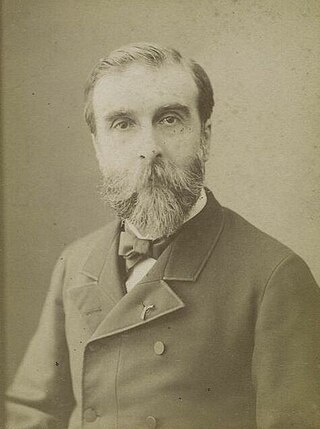
Ludovic Halévy was a French author and playwright, best known for his collaborations with Henri Meilhac on Georges Bizet's Carmen and on the works of Jacques Offenbach.
Robert Lawson, Scottish-New Zealand architect, designed the Otago Boys' High School and Knox Church (d. 1902) births

Robert Arthur Lawson was one of New Zealand's pre-eminent 19th century architects. It has been said he did more than any other designer to shape the face of the Victorian era architecture of the city of Dunedin. He is the architect of over forty churches, including Dunedin's First Church for which he is best remembered, but also other buildings, such as Larnach Castle, a country house, with which he is also associated.
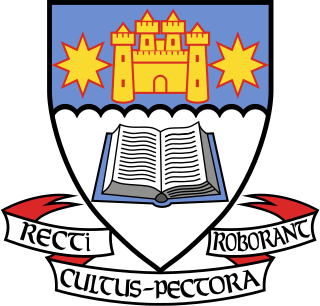
Otago Boys' High School (OBHS) is a secondary school in Dunedin, New Zealand. It is one of New Zealand's oldest boys' secondary schools. Originally known as Dunedin High School, it was founded on 3 August 1863 and moved to its present site in 1885. The main building was designed by Robert Lawson and is regarded as one of the finest Gothic revival structures in the country. Situated on high ground above central Dunedin it commands excellent views of the city and is a prominent landmark.
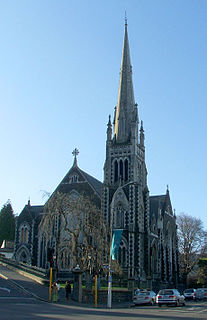
Knox Church is a notable building in Dunedin, New Zealand. It houses the city's second Presbyterian congregation and is the city's largest church of any denomination.
Sándor Petőfi, Hungarian poet and activist (d. 1849) births
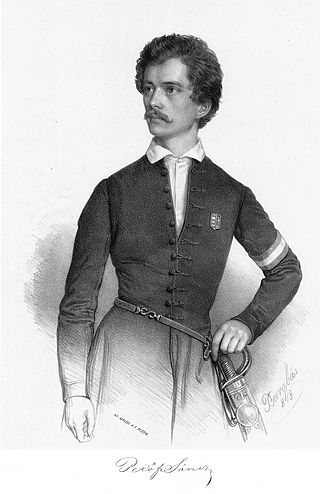
Sándor Petőfi was a Hungarian poet of Slovak origin and liberal revolutionary. He is considered Hungary's national poet, and was one of the key figures of the Hungarian Revolution of 1848. He is the author of the Nemzeti dal, which is said to have inspired the revolution in the Kingdom of Hungary that grew into a war for independence from the Austrian Empire. It is most likely that he died in the Battle of Segesvár, one of the last battles of the war.
Arthur Hugh Clough, English-Italian poet and academic (d. 1861) births

Arthur Hugh Clough was an English poet, an educationalist, and the devoted assistant to Florence Nightingale. He was the brother of suffragist Anne Clough and father of Blanche Athena Clough who both became principals of Newnham College, Cambridge.
George Foster Shepley, American general (d. 1878) births
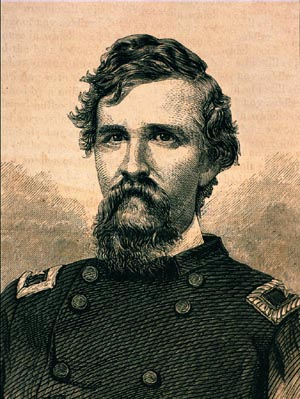
George Foster Shepley was an officer in the Union Army during the American Civil War, military governor of Louisiana and a United States circuit judge of the United States Circuit Courts for the First Circuit.
William Gamble, Irish-born American general (d. 1866) births
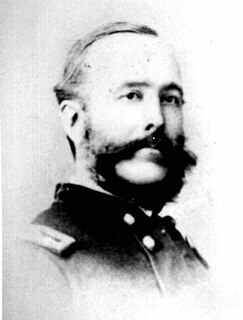
William Gamble was a civil engineer and a United States Army cavalry officer. He served during the Second Seminole War, and fought for the Union during the American Civil War. He commanded one of two brigades in Brigadier General John Buford's Division of Cavalry, in which he played an important role in defending Union positions during the first day of the Battle of Gettysburg.
Martin Heinrich Klaproth, German chemist and academic (b. 1743) deaths
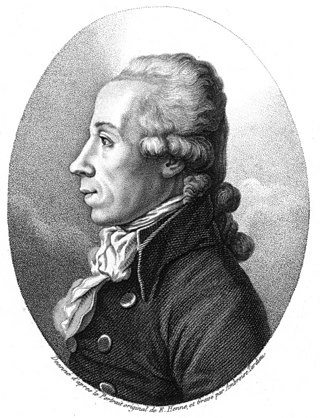
Martin Heinrich Klaproth was a German chemist. He trained and worked for much of his life as an apothecary, moving in later life to the university. His shop became the second-largest apothecary in Berlin, and the most productive artisanal chemical research center in Europe.
Hong Xiuquan, Chinese rebellion leader and king (d. 1864) births

Hong Xiuquan, born Hong Huoxiu and with the courtesy name Renkun, was a Chinese revolutionary who was the leader of the Taiping Rebellion against the Qing dynasty. He established the Taiping Heavenly Kingdom over varying portions of southern China, with himself as the "Heavenly King" and self-proclaimed younger brother of Jesus Christ.
George Bliss, American politician (d. 1868) births

George Bliss was a member of the United States House of Representatives from Ohio for two non-consecutive terms in the 1850s and 1860s.
Achille Guenée, French lawyer and entomologist (d. 1880) births
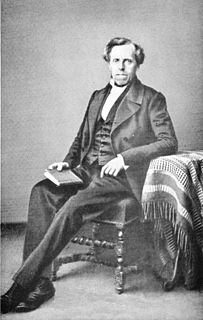
Achille Guenée was a French lawyer and entomologist.
Lionel Kieseritzky, Estonian-French chess player (d. 1853) births
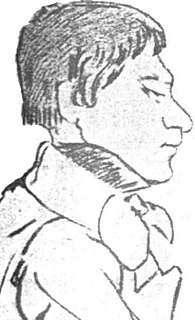
Lionel Adalbert Bagration Felix Kieseritzky was a Baltic German chess master and theoretician, famous for his contributions to chess theory, as well for a game he lost against Adolf Anderssen, which because of its brilliance was named "The Immortal Game". Kieseritzky is the namesake of several openings and opening variations, such as the Kieseritzky Gambit, Kieseritzky attack, and the Boden–Kieseritzky Gambit.
Edward Dickinson, American politician and father of poet Emily Dickinson (d. 1874) births
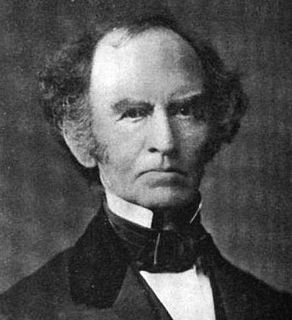
Edward Dickinson was an American politician from Massachusetts. He is also known as the father of the poet Emily Dickinson; their family home in Amherst, the Dickinson Homestead, is a museum dedicated to her.

Emily Elizabeth Dickinson was an American poet. Little-known during her life, she has since been regarded as one of the most important figures in American poetry.
Francesco Guardi, Italian painter and educator (b. 1712) deaths

Francesco Lazzaro Guardi was an Italian painter, nobleman, and a member of the Venetian School. He is considered to be among the last practitioners, along with his brothers, of the classic Venetian school of painting.
Fletcher Norton, 1st Baron Grantley, English lawyer and politician, British Speaker of the House of Commons (b. 1716) deaths
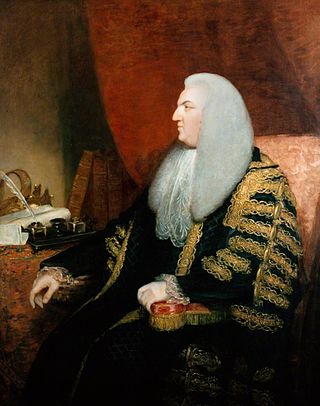
Fletcher Norton, 1st Baron Grantley, PC was an English lawyer and politician who sat in the House of Commons from 1756 to 1782 when he was raised to the peerage as Baron Grantley.

The speaker of the House of Commons is the presiding officer of the House of Commons, the lower house and primary chamber of the Parliament of the United Kingdom. The current speaker, Sir Lindsay Hoyle, was elected Speaker on 4 November 2019, following the retirement of John Bercow. Hoyle began his first full parliamentary term in the role on 17 December 2019, having been unanimously re-elected after the 2019 general election.
Johann Christian Bach, German composer (b. 1735) deaths

Johann Christian Bach was a German composer of the Classical era, the eighteenth child of Johann Sebastian Bach, and the youngest of his eleven sons. After living in Italy for several years, Bach moved to London in 1762, where he became known as "the London Bach". He is also sometimes known as "the English Bach", and during his time spent living in the British capital, he came to be known as John Bach. He is noted for playing a role in influencing the concerto styles of Haydn and Mozart. He contributed significantly to the development of the new sonata principle.
Johann Ludwig Krebs, German organist and composer (b. 1713) deaths
Johann Ludwig Krebs was a German Baroque musician and composer for the pipe organ, harpsichord, other instruments and orchestras. His output also included chamber music, choral works and concertos.
William Clowes, English publisher (d. 1847) births
William Clowes was a British printer who developed the use of steam-powered printing presses in the industry. He founded the printing firm that became William Clowes Ltd. in London in 1803.
André Marie Constant Duméril, French zoologist and academic (d. 1860) births
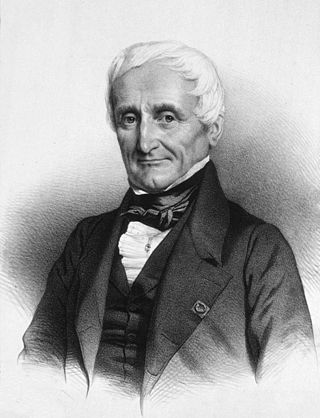
[[Category:Zoologists with author abbreviations|Duméril ]]
Marie-Louise Lachapelle, French obstetrician (d. 1821) births

Marie-Louise Lachapelle was a French midwife, head of obstetrics at the Hôtel-Dieu, the oldest hospital in Paris. She published textbooks about women's bodies, gynecology, and obstetrics. She argued against forceps deliveries and wrote Pratique des accouchements, long a standard obstetric text, which promoted natural deliveries. Lachapelle is generally regarded as the mother of modern obstetrics.
Obstetrics is the field of study concentrated on pregnancy, childbirth and the postpartum period. As a medical specialty, obstetrics is combined with gynecology under the discipline known as obstetrics and gynecology (OB/GYN), which is a surgical field.
Maria Edgeworth, Anglo-Irish author (d. 1849) births

Maria Edgeworth was a prolific Anglo-Irish novelist of adults' and children's literature. She was one of the first realist writers in children's literature and was a significant figure in the evolution of the novel in Europe. She held views on estate management, politics and education, and corresponded with some of the leading literary and economic writers, including Sir Walter Scott and David Ricardo.
Betsy Ross, American seamstress, sewed flags for the Pennsylvania Navy during the Revolutionary War (d. 1836) births

Elizabeth Griscom Ross, also known by her second and third married names, Ashburn and Claypoole, was an American upholsterer who was credited by her relatives in 1870 with making the first official U.S. flag, accordingly known as the Betsy Ross flag. Though most historians dismiss the story, Ross family tradition holds that General George Washington, commander-in-chief of the Continental Army and two members of a congressional committee—Robert Morris and George Ross—visited Mrs. Ross in 1776. Mrs. Ross convinced George Washington to change the shape of the stars in a sketch of a flag he showed her from six-pointed to five-pointed by demonstrating that it was easier and speedier to cut the latter. However, there is no archival evidence or other recorded verbal tradition to substantiate this story of the first U.S. flag. It appears that the story first surfaced in the writings of her grandson in the 1870s, with no mention or documentation in earlier decades.
Johann Bernoulli, Swiss mathematician and academic (b. 1667) deaths

Johann Bernoulli was a Swiss mathematician and was one of the many prominent mathematicians in the Bernoulli family. He is known for his contributions to infinitesimal calculus and educating Leonhard Euler in the pupil's youth.
Anthony Wayne, American general and politician (d. 1796) births

Anthony Wayne was an American soldier, officer, statesman, and one of the Founding Fathers of the United States. He adopted a military career at the outset of the American Revolutionary War, where his military exploits and fiery personality quickly earned him promotion to brigadier general and the nickname "Mad Anthony". He later served as the Senior Officer of the Army on the Ohio Country frontier and led the Legion of the United States.
Paul Revere, American silversmith and engraver (d. 1818) births

Paul Revere was an American silversmith, engraver, early industrialist, Sons of Liberty member, and Patriot and Founding Father. He is best known for his midnight ride to alert the colonial militia in April 1775 to the approach of British forces before the battles of Lexington and Concord, as dramatized in Henry Wadsworth Longfellow's 1861 poem, "Paul Revere's Ride".
William Wycherley, English playwright and poet (b. 1641) deaths

William Wycherley was an English dramatist of the Restoration period, best known for the plays The Country Wife and The Plain Dealer.
Giovanni Battista Mancini, Italian soprano and author (d. 1800) births
Giovanni Battista Mancini was an Italian soprano castrato, voice teacher, and author of books on singing.
Kristijonas Donelaitis, Lithuanian pastor and poet (d. 1780) births
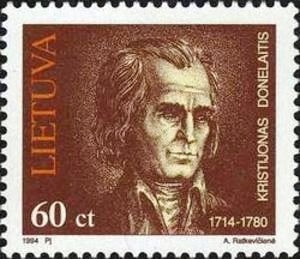
Kristijonas Donelaitis was a Prussian Lithuanian poet and Lutheran pastor. He lived and worked in Lithuania Minor, a territory in the Kingdom of Prussia, that had a sizable Lithuanian-speaking minority. He wrote the first classic Lithuanian language poem, The Seasons, which became one of the principal works of Lithuanian poetry. The poem, a classic work of Lithuanian literature, depicts everyday life of Lithuanian peasants, their struggle with serfdom, and the annual cycle of life.
Baron Franz von der Trenck, Austrian soldier (d. 1749) births

Baron Franz von der Trenck was an Austrian soldier.
Soame Jenyns, English author, poet, and politician (d. 1787) births

Soame Jenyns was an English writer and Member of Parliament. He was an early advocate of the ethical consideration of animals.
Filippo Baldinucci, Florentine historian and author (b. 1625) deaths

Filippo Baldinucci was an Italian art historian and biographer.
Arnold Drakenborch, Dutch scholar and author (d. 1748) births

Arnold Drakenborch was a Dutch classical scholar.
Christian Thomasius, German jurist and philosopher (d. 1728) births

Christian Thomasius was a German jurist and philosopher.
Christoph Bernhard, German composer and theorist (d. 1692) births
Christoph Bernhard was born in Kolberg, Pomerania, and died in Dresden. He was a German Baroque composer and musician. He studied with former Sweelinck-pupil Paul Siefert in Danzig and in Warsaw. By the age of 20 he was singing at the electoral court in Dresden under Heinrich Schütz and composed some of the music for the Master's funeral. He then spent a year in Copenhagen to study singing with Agostino Fontana.
Hendrik Goltzius, Dutch painter and illustrator (b. 1558) deaths

Hendrick Goltzius, or Hendrik, was a German-born Dutch printmaker, draftsman, and painter. He was the leading Dutch engraver of the early Baroque period, or Northern Mannerism, lauded for his sophisticated technique, technical mastership and "exuberance" of his compositions. According to A. Hyatt Mayor, Goltzius "was the last professional engraver who drew with the authority of a good painter and the last who invented many pictures for others to copy". In the middle of his life he also began to produce paintings.
Friedrich Spanheim, Dutch theologian and academic (d. 1649) births

Friedrich Spanheim the elder was a Calvinistic theology professor at the University of Leiden.
Joachim du Bellay, French poet and critic (b. 1522) deaths

Joachim du Bellay was a French poet, critic, and a founder of the Pléiade. He notably wrote the manifesto of the group: Défense et illustration de la langue française, which aimed at promoting French as an artistic language, equal to Greek and Latin.
Christian III, king of Denmark (b. 1503) deaths
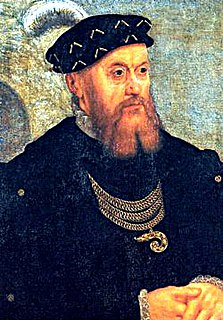
Christian III reigned as King of Denmark from 1534 and King of Norway from 1537 until his death in 1559. During his reign, Christian formed close ties between the church and the crown. He established Lutheranism as the state religion within his realms as part of the Protestant Reformation.
Stephen Bocskay, Prince of Transylvania (d. 1606) births
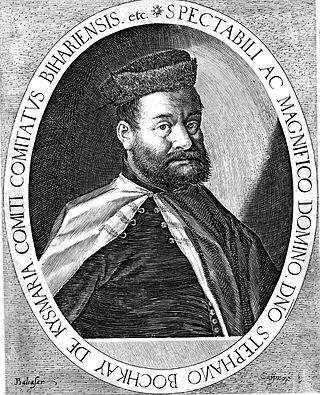
Stephen Bocskai or Bocskay was Prince of Transylvania and Hungary from 1605 to 1606. He was born to a Hungarian noble family. His father's estates were located in the eastern regions of the medieval Kingdom of Hungary, which developed into the Principality of Transylvania in the 1570s. He spent his youth in the court of the Holy Roman Emperor, Maximilian, who was also the ruler of Royal Hungary.
Louis XII, king of France (b. 1462) deaths

Louis XII was King of France from 1498 to 1515 and King of Naples from 1501 to 1504. The son of Charles, Duke of Orléans, and Maria of Cleves, he succeeded his 2nd cousin once removed and brother in law at the time, Charles VIII, who died without direct heirs in 1498.
Henry, Duke of Cornwall, first-born child of Henry VIII of England (d. 1511) births

Henry, Duke of Cornwall was the first living child of King Henry VIII of England and his first wife, Catherine of Aragon, and though his birth was celebrated as that of the heir apparent, he died within weeks. His death and Henry VIII's failure to produce another surviving male heir with Catherine led to succession and marriage crises that affected the relationship between the English church and Roman Catholicism, giving rise to the English Reformation.

Henry VIII was King of England from 22 April 1509 until his death in 1547. Henry is best known for his six marriages, and for his efforts to have his first marriage annulled. His disagreement with Pope Clement VII about such an annulment led Henry to initiate the English Reformation, separating the Church of England from papal authority. He appointed himself Supreme Head of the Church of England and dissolved convents and monasteries, for which he was excommunicated by the pope. Henry is also known as "the father of the Royal Navy" as he invested heavily in the navy and increased its size from a few to more than 50 ships, and established the Navy Board.
Charles d'Orléans, count of Angoulême (b. 1459) deaths

Charles of Orléans was the Count of Angoulême from 1467 until his death. He succeeded his father, John, and was initially under the regency of his mother, Marguerite de Rohan, assisted by Jean I de La Rochefoucauld, one of his vassals.
Huldrych Zwingli, Swiss pastor and theologian (d. 1531) births
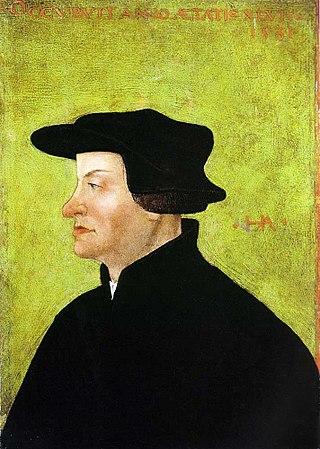
Huldrych or Ulrich Zwingli was a leader of the Reformation in Switzerland, born during a time of emerging Swiss patriotism and increasing criticism of the Swiss mercenary system. He attended the University of Vienna and the University of Basel, a scholarly center of Renaissance humanism. He continued his studies while he served as a pastor in Glarus and later in Einsiedeln, where he was influenced by the writings of Erasmus.
Sigismund I the Old, Polish king (d. 1548) births
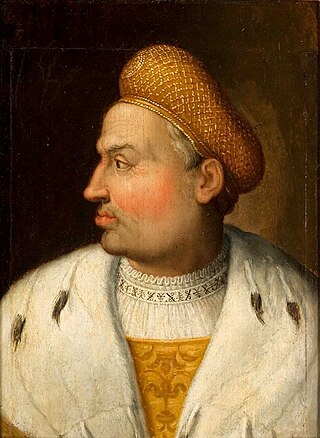
Sigismund I the Old was King of Poland and Grand Duke of Lithuania from 1506 until his death in 1548. Sigismund I was a member of the Jagiellonian dynasty, the son of Casimir IV and younger brother of Kings John I Albert and Alexander I Jagiellon. He was nicknamed "the Old" in later historiography to distinguish him from his son and successor, Sigismund II Augustus.
Lorenzo de' Medici, Italian politician (d. 1492) births

Lorenzo di Piero de' Medici was an Italian statesman, banker, de facto ruler of the Florentine Republic and the most powerful and enthusiastic patron of Renaissance culture in Italy. Also known as Lorenzo the Magnificent by contemporary Florentines, he was a magnate, diplomat, politician and patron of scholars, artists, and poets. As a patron, he is best known for his sponsorship of artists such as Botticelli and Michelangelo. He held the balance of power within the Italic League, an alliance of states that stabilized political conditions on the Italian peninsula for decades, and his life coincided with the mature phase of the Italian Renaissance and the Golden Age of Florence. On the foreign policy front, Lorenzo manifested a clear plan to stem the territorial ambitions of Pope Sixtus IV, in the name of the balance of the Italian League of 1454. For these reasons, Lorenzo was the subject of the Pazzi conspiracy (1478), in which his brother Giuliano was assassinated. The Peace of Lodi of 1454 that he supported among the various Italian states collapsed with his death. He is buried in the Medici Chapel in Florence.
Pope Alexander VI (d. 1503) births

Pope Alexander VI was head of the Catholic Church and ruler of the Papal States from 11 August 1492 until his death in 1503.
Charles II, king of Navarre (b. 1332) deaths

Charles II, called Charles the Bad, was King of Navarre 1349–1387 and Count of Évreux 1343–1387.
Haakon III, king of Norway (b. 1182) deaths
Haakon III Sverresson was King of Norway from 1202 to 1204.
Henry of Marcy, Cistercian abbot (b. c. 1136) deaths

Henry of Marcy, or Henri de Marsiac, was a Cistercian abbot, first of Hautecombe in Savoy (1160–1177), and then of Clairvaux, from 1177 until 1179. He was created Cardinal Bishop of Albano by Pope Alexander III at the Third Lateran Council in 1179.
William of Volpiano, Italian abbot (b. 962) deaths
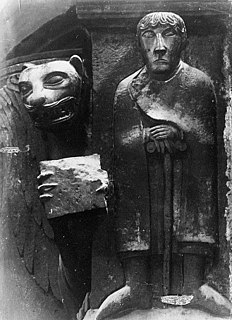
Saint William of Volpiano was a Northern Italian monastic reformer, composer, and founding abbot of numerous abbeys in Burgundy, Italy and Normandy.
Ramiro II, king of León and Galicia deaths

Ramiro II, son of Ordoño II and Elvira Menendez, was a King of León from 931 until his death. Initially titular king only of a lesser part of the kingdom, he gained the crown of León after supplanting his brother Alfonso IV and cousin Alfonso Fróilaz in 931. The scant Anales castellanos primeros are a primary source for his reign.
Odo I, Frankish king (b. 860) deaths
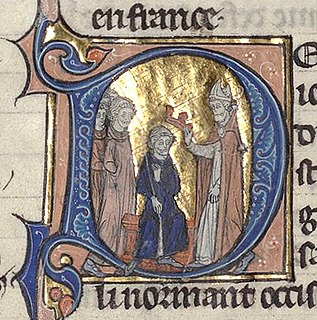
Odo was the elected King of West Francia from 888 to 898. He was the first king from the Robertian dynasty. Before assuming the kingship, Odo was the count of Paris. His reign marked the definitive separation of West Francia from the Carolingian Empire, which would never reunite.
Ali al-Ridha (d. 818) 8th Imam of Twelver Shia Islam births

Ali ibn Musa al-Rida, also known as Abū al-Ḥasan al-Thānī, was a descendant of the Islamic prophet Muhammad, and the eighth Imam in Twelver Shia Islam, succeeding his father, Musa al-Kazim. He is also part of the chain of mystical authority in Shia Sufi orders. He was known for his piety and learning, and a number of works are attributed to him, including Al-Risala al-Dhahabia, Sahifa al-Rida, and Fiqh al-Rida. Uyun al-Akhbar al-Rida by Ibn Babawayh is a comprehensive collection that includes the religious debates, sayings, biographical details, and even the miracles which have occurred at his tomb.
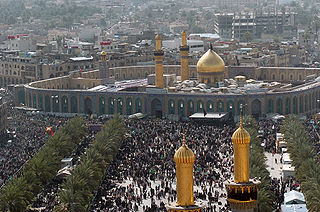
Imāmah means "leadership" and is a concept in Twelver theology. The Twelve Imams are the spiritual and political successors to Muhammad, the Prophet of Islam, in the Twelver branch of Shia Islam. According to Twelver theology, the successors to Muhammad are infallible human beings, who rule justly over the community and maintain and interpret sharia and undertake the esoteric interpretation of the Quran. The words and deeds of Muhammad and the Imams guide the community. For this, the Imams must be free from error and sin and chosen by divine decree—nass—through the Prophet.

Twelver Shīʿīsm, also known as Imāmīyyah, is the largest branch of Shīʿa Islam, comprising about 85 percent of all Shīʿa Muslims. The term Twelver refers to its adherents' belief in twelve divinely ordained leaders, known as the Twelve Imams, and their belief that the last Imam, Imam al-Mahdi, lives in Occultation and will reappear as The promised Mahdi. According to the Shīʿa tradition, the Mahdi's tenure will coincide with the Second Coming of Jesus (ʿĪsā), who, along with Mahdi, would kill the Dajjal.
Shīʿa Islam or Shīʿīsm is the second-largest branch of Islam. It holds that the Islamic prophet Muhammad designated ʿAlī ibn Abī Ṭālib as his successor (khalīfa) and the Imam after him, most notably at the event of Ghadir Khumm, but was prevented from succeeding Muhammad as the leader of the Muslims as a result of the choice made by some of Muhammad's other companions (ṣaḥāba) at Saqifah. This view primarily contrasts with that of Sunnī Islam, whose adherents believe that Muhammad did not appoint a successor before his death and consider Abū Bakr, who was appointed caliph by a group of senior Muslims at Saqifah, to be the first rightful (rāshidūn) caliph after Muhammad. Adherents of Shīʿa Islam are called Shīʿa Muslims, Shīʿītes, or simply Shīʿa or Shia.
Telemachus, Christian monk and martyr deaths

Year 404 (CDIV) was a leap year starting on Friday of the Julian calendar. At the time, it was known as the Year of the Consulship of Honorius and Aristaenetus. The denomination 404 for this year has been used since the early medieval period, when the Anno Domini calendar era became the prevalent method in Europe for naming years.

Saint Telemachus was a monk who, according to the Church historian Theodoret, tried to stop a gladiatorial fight in a Roman amphitheatre, and was stoned to death by the crowd. The Christian Emperor Honorius, however, was impressed by the monk's martyrdom and it spurred him to issue a historic ban on gladiatorial fights. Frederick George Holweck gives the year of his death as 391.
Lucius Aelius, adopted son and intended successor of Hadrian (b. 101) deaths
Year 138 (CXXXVIII) was a common year starting on Tuesday of the Julian calendar. At the time, it was known as the Year of the Consulship of Niger and Camerinus. The denomination 138 for this year has been used since the early medieval period, when the Anno Domini calendar era became the prevalent method in Europe for naming years.

Lucius Aelius Caesar was the father of Emperor Lucius Verus. In 136, he was adopted by Hadrian and named heir to the throne. He died before Hadrian and thus never became emperor. After Lucius' death, he was replaced by Antoninus Pius, who succeeded Hadrian the same year.

Hadrian was Roman emperor from 117 to 138. He was born in Italica, a Roman municipium founded by Italic settlers in Hispania Baetica and he came from a branch of the gens Aelia that originated in the Picenean town of Hadria, the Aeli Hadriani. His father was of senatorial rank and was a first cousin of Emperor Trajan. Hadrian married Trajan's grand-niece Vibia Sabina early in his career before Trajan became emperor and possibly at the behest of Trajan's wife Pompeia Plotina. Plotina and Trajan's close friend and adviser Lucius Licinius Sura were well disposed towards Hadrian. When Trajan died, his widow claimed that he had nominated Hadrian as emperor immediately before his death.
Christian feast day: Adalard of Corbie
Saint Adalard of Corbie was son of Bernard the son of Charles Martel and half-brother of Pepin; Charlemagne was his cousin.
Christian feast day: Basil the Great (Eastern Orthodox Church)

Basil of Caesarea, also called Saint Basil the Great, was a bishop of Caesarea Mazaca in Cappadocia, Asia Minor. He was an influential theologian who supported the Nicene Creed and opposed the heresies of the early Christian church, fighting against both Arianism and the followers of Apollinaris of Laodicea. His ability to balance his theological convictions with his political connections made Basil a powerful advocate for the Nicene position.

The Eastern Orthodox Church, also called the Orthodox Church, is the second-largest Christian church, with approximately 220 million baptized members. It operates as a communion of autocephalous churches, each governed by its bishops via local synods. The church has no central doctrinal or governmental authority analogous to the head of the Roman Catholic Church—the Pope—but the Ecumenical Patriarch of Constantinople is recognized by them as primus inter pares, which may be explained as a representative of the church. As one of the oldest surviving religious institutions in the world, the Eastern Orthodox Church has played a prominent role in the history and culture of Eastern and Southeastern Europe. The Eastern Orthodox Church officially calls itself the Orthodox Catholic Church.
Christian feast day: Feast of the Circumcision of Christ Feast of the Holy Name of Jesus (Anglican Communion, Lutheran Church)

The Feast of the Holy Name of Jesus is a feast of the liturgical year celebrated by Christians on varying dates.

The Anglican Communion is the third largest Christian communion after the Roman Catholic and Eastern Orthodox churches. Founded in 1867 in London, the communion has more than 85 million members within the Church of England and other autocephalous national and regional churches in full communion. The traditional origins of Anglican doctrine are summarised in the Thirty-nine Articles (1571). The Archbishop of Canterbury in England acts as a focus of unity, recognised as primus inter parescode: lat promoted to code: la , but does not exercise authority in Anglican provinces outside of the Church of England. Most, but not all, member churches of the communion are the historic national or regional Anglican churches.

Lutheranism is one of the largest branches of Protestantism, identifying primarily with the theology of Martin Luther, the 16th-century German monk and reformer whose efforts to reform the theology and practice of the Catholic Church launched the Protestant Reformation. The reaction of the government and church authorities to the international spread of his writings, beginning with the Ninety-five Theses, divided Western Christianity. During the Reformation, Lutheranism became the state religion of numerous states of northern Europe, especially in northern Germany, Scandinavia and the then Livonian Order. Lutheran clergy became civil servants and the Lutheran churches became part of the state.
Christian feast day: Feast of the Circumcision of Christ Feast of Fools (Medieval Europe)

In the history of Europe, the Middle Ages or medieval period lasted approximately from the late 5th to the late 15th centuries, similar to the post-classical period of global history. It began with the fall of the Western Roman Empire and transitioned into the Renaissance and the Age of Discovery. The Middle Ages is the middle period of the three traditional divisions of Western history: classical antiquity, the medieval period, and the modern period. The medieval period is itself subdivided into the Early, High, and Late Middle Ages.
Christian feast day: Fulgentius of Ruspe

Fabius Claudius Gordianus Fulgentius, also known as Fulgentius of Ruspe was North African Christian prelate who served as Bishop of Ruspe, in modern-day Tunisia, during the 5th and 6th century. He has been canonized as a saint.
Christian feast day: Giuseppe Maria Tomasi
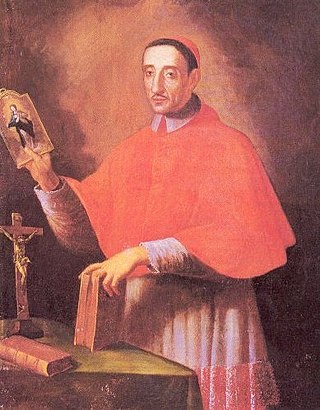
Joseph Mary Tomasi (12 September 1649 – 1 January 1713) was an Italian Theatine Catholic priest, scholar, reformer and cardinal. His scholarship was a significant source of the reforms in the liturgy of the Roman Catholic Church during the 20th century. He was beatified by Pope Pius VII in 1803, and was canonized by Pope John Paul II in 1986.
Christian feast day: Solemnity of Mary, Mother of God, the Octave Day of Christmas, considered a holy day of obligation in some countries (Catholic Church); and its related observances: World Day of Peace

The World Day of Peace is an annual celebration by the Catholic Church, dedicated to universal peace, held on 1 January, the Solemnity of Mary, Mother of God. Pope Paul VI established it in 1967, being inspired by the encyclical Pacem in Terris of Pope John XXIII and with reference to his own encyclical Populorum Progressio. The day was first observed on 1 January 1968.
Christian feast day: Telemachus

Saint Telemachus was a monk who, according to the Church historian Theodoret, tried to stop a gladiatorial fight in a Roman amphitheatre, and was stoned to death by the crowd. The Christian Emperor Honorius, however, was impressed by the monk's martyrdom and it spurred him to issue a historic ban on gladiatorial fights. Frederick George Holweck gives the year of his death as 391.
Christian feast day: Zygmunt Gorazdowski

Zygmunt Gorazdowski was a Polish Roman Catholic priest and the founder of the Sisters of Saint Joseph. Gorazdowski suffered from tuberculosis during his childhood which impeded his studies for the priesthood in what required him to take time off in order to recover before he could be ordained. Once he was ordained he served in various parishes while setting up homes for orphans and single mothers as well as hospices and other establishments for a range of people; he was a prolific writer of catechism and other religious notes for the benefit of his flock.
Christian feast day: January 1 (Eastern Orthodox liturgics)

December 31 - Eastern Orthodox liturgical calendar - January 2
Earliest day on which Handsel Monday can fall, while January 7 is the latest; celebrated on the first Monday of the year (Scotland)
In Scotland, Handsel Monday or Hansel Monday is the first Monday of the year. Traditionally, gifts were given at this time.

Scotland is a country that is part of the United Kingdom. Covering the northern third of the island of Great Britain, mainland Scotland has a 96-mile (154-kilometre) border with England to the southeast and is otherwise surrounded by the Atlantic Ocean to the north and west, the North Sea to the northeast and east, and the Irish Sea to the south. It also contains more than 790 islands, principally in the archipelagos of the Hebrides and the Northern Isles. Most of the population, including the capital Edinburgh, is concentrated in the Central Belt—the plain between the Scottish Highlands and the Southern Uplands—in the Scottish Lowlands.
Second day of Hogmanay (Scotland) December 31-January 1, in some cases until January 2.

Hogmanay is the Scots word for the last day of the old year and is synonymous with the celebration of the New Year in the Scottish manner. It is normally followed by further celebration on the morning of New Year's Day or in some cases, 2 January—a Scottish bank holiday.

Scotland is a country that is part of the United Kingdom. Covering the northern third of the island of Great Britain, mainland Scotland has a 96-mile (154-kilometre) border with England to the southeast and is otherwise surrounded by the Atlantic Ocean to the north and west, the North Sea to the northeast and east, and the Irish Sea to the south. It also contains more than 790 islands, principally in the archipelagos of the Hebrides and the Northern Isles. Most of the population, including the capital Edinburgh, is concentrated in the Central Belt—the plain between the Scottish Highlands and the Southern Uplands—in the Scottish Lowlands.
The last day of Kwanzaa (African-Americans)

Kwanzaa is an annual celebration of African-American culture from December 26 to January 1, culminating in a communal feast called Karamu, usually on the sixth day. It was created by activist Maulana Karenga, based on African harvest festival traditions from various parts of West and Southeast Africa. Kwanzaa was first celebrated in 1966.

African Americans are an ethnic group consisting of Americans with partial or total ancestry from sub-Saharan Africa. The term "African American" generally denotes descendants of enslaved Africans who are from the United States. While some Black immigrants or their children may also come to identify as African-American, the majority of first generation immigrants do not, preferring to identify with their nation of origin.
The eighth of the Twelve Days of Christmas (Western Christianity)
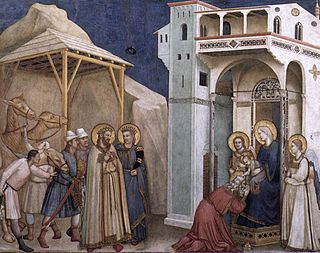
The Twelve Days of Christmas, also known as Twelvetide, is a festive Christian season celebrating the Nativity of Jesus. In some Western ecclesiastical traditions, "Christmas Day" is considered the "First Day of Christmas" and the Twelve Days are 25 December to 5 January, inclusive, with 6 January being a "thirteenth day" in some traditions and languages. However, 6 January is sometimes considered Twelfth Day/Twelfth Night with the Twelve Days "of" Christmas actually after Christmas Day from 26 December to 6 January. For many Christian denominations—for example, the Anglican Communion and Lutheran Church—the Twelve Days are identical to Christmastide, but for others, e.g. the Roman Catholic Church, Christmastide lasts longer than the Twelve Days of Christmas.

Western Christianity is one of two sub-divisions of Christianity. Western Christianity is composed of the Latin Church and Western Protestantism, together with their offshoots such as the Old Catholic Church, Independent Catholicism and Restorationism.
Constitution Day (Italy)

Constitution Day is a holiday to honour the constitution of a country. Constitution Day is often celebrated on the anniversary of the signing, promulgation or adoption of the constitution, or in some cases, to commemorate the change to constitutional monarchy.Abkhazia, 26 November (1994). See Constitution of Abkhazia. Andorra, 14 March (1993). Known locally as Dia de la Constitució. See Constitution of Andorra. Argentina, 1 May (1853). See Constitution of Argentina. Not a public holiday. Armenia, 5 July (1995). See Constitution of Armenia. Australia, 9 July (1900). See Constitution of Australia. Not a public holiday. Azerbaijan, 12 November (1995). See Constitution of Azerbaijan. Not a public holiday. Belarus, 15 March (1994). Known locally as Dzień Kanstytucyji. See Constitution of Belarus. Belgium, 21 July (1890). Known locally as Nationale feestdag van België and Fête nationale belge . Day of the Flemish Community, 11 July. Known locally as Feestdag van Vlaanderen. French Community Holiday, 27 September. Known locally as Fête de la Communauté française. Wallonia Day, third Sunday of September. Day of the German-speaking Community of Belgium, 15 November. Known locally as Feiertag der Deutschsprachigen Gemeinschaft. Brazil, 15 November (1889). Known in Brazil as Dia da Proclamação da República. See Constitution of Brazil. Public holiday.
Dissolution of Czechoslovakia-related observances: Day of the Establishment of the Slovak Republic (Slovakia)
National holidays in Slovakia

Slovakia, officially the Slovak Republic, is a landlocked country in Central Europe. It is bordered by Poland to the north, Ukraine to the east, Hungary to the south, Austria to the southwest, and the Czech Republic to the northwest. Slovakia's mostly mountainous territory spans about 49,000 square kilometres (19,000 sq mi), with a population of over 5.4 million. The capital and largest city is Bratislava, while the second largest city is Košice.
Dissolution of Czechoslovakia-related observances: Restoration Day of the Independent Czech State (Czech Republic)
Public holidays in the Czech Republic:

The Czech Republic, also known as Czechia, is a landlocked country in Central Europe. Historically known as Bohemia, it is bordered by Austria to the south, Germany to the west, Poland to the northeast, and Slovakia to the southeast. The Czech Republic has a hilly landscape that covers an area of 78,871 square kilometers (30,452 sq mi) with a mostly temperate continental and oceanic climate. The capital and largest city is Prague; other major cities and urban areas include Brno, Ostrava, Plzeň and Liberec.
Emancipation Day (United States)

Emancipation Day is observed in many former European colonies in the Caribbean and areas of the United States on various dates to commemorate the emancipation of slaves of African descent.

The United States of America, commonly known as the United States or informally America, is a country in North America. It consists of 50 states, a federal district, five major unincorporated territories, nine Minor Outlying Islands, and 326 Indian reservations. It is the third-largest country by both land and total area. The United States shares land borders with Canada to its north and with Mexico to its south. It has maritime borders with the Bahamas, Cuba, Russia, and other nations. With a population of over 331 million, it is the third most populous country in the world. The national capital is Washington, D.C., and the most populous city and financial center is New York City.
Euro Day (European Union)

The euro came into existence on 1 January 1999, although it had been a goal of the European Union (EU) and its predecessors since the 1960s. After tough negotiations, the Maastricht Treaty entered into force in 1993 with the goal of creating an economic and monetary union by 1999 for all EU states except the UK and Denmark.

The European Union (EU) is a supranational political and economic union of 27 member states that are located primarily in Europe. The union has a total area of 4,233,255.3 km2 (1,634,469.0 sq mi) and an estimated total population of about 447 million. The EU has often been described as a sui generis political entity combining the characteristics of both a federation and a confederation.
Flag Day (Lithuania) commemorates raising of the Lithuanian flag on Gediminas' Tower in 1919

A flag day is a flag-related holiday, a day designated for flying a certain flag or a day set aside to celebrate a historical event such as a nation's adoption of its flag.
Founding Day (Taiwan) commemorates the establishment of the Provisional Government in Nanjing

The following are considered holidays in Taiwan. Some are official holidays, some are not:
Global Family Day
Global Family Day One Day of Peace and Sharing, is celebrated every 1st January in the United States as a global day of peace and sharing. Global Family Day grew out of the United Nations Millennium celebration, "One Day In Peace".
Independence Day (Brunei, Cameroon, Haiti, Sudan)

An independence day is an annual event commemorating the anniversary of a nation's independence or statehood, usually after ceasing to be a group or part of another nation or state, or more rarely after the end of a military occupation. Many countries commemorate their independence from a colonial empire.

Brunei, formally Brunei Darussalam, is a country located on the north coast of the island of Borneo in Southeast Asia. Apart from its South China Sea coast, it is completely surrounded by the Malaysian state of Sarawak. It is separated into two parts by the Sarawak district of Limbang. Brunei is the only sovereign state entirely on Borneo; the remainder of the island is divided between Malaysia and Indonesia. As of 2020, its population was 460,345, of whom about 100,000 live in the capital and largest city, Bandar Seri Begawan. The government is an absolute monarchy ruled by its Sultan, entitled the Yang di-Pertuan, and implements a combination of English common law and sharia law, as well as general Islamic practices.

Cameroon, officially the Republic of Cameroon, is a country in west-central Africa. It is bordered by Nigeria to the west and north; Chad to the northeast; the Central African Republic to the east; and Equatorial Guinea, Gabon and the Republic of the Congo to the south. Its coastline lies on the Bight of Biafra, part of the Gulf of Guinea and the Atlantic Ocean. Due to its strategic position at the crossroads between West Africa and Central Africa, it has been categorized as being in both camps. Its nearly 27 million people speak 250 native languages.

Haiti, officially the Republic of Haiti, and formerly known as Hayti, is a country located on the island of Hispaniola in the Greater Antilles archipelago of the Caribbean Sea, east of Cuba and Jamaica, and south of The Bahamas and the Turks and Caicos Islands. It occupies the western three-eighths of the island which it shares with the Dominican Republic. To its south-west lies the small Navassa Island, which is claimed by Haiti but is disputed as a United States territory under federal administration. Haiti is 27,750 km2 (10,714 sq mi) in size, the third largest country in the Caribbean by area, and has an estimated population of 11.4 million, making it the most populous country in the Caribbean. The capital is Port-au-Prince.

Sudan, officially the Republic of the Sudan, is a country in Northeast Africa. It shares borders with the Central African Republic to the southwest, Chad to the west, Egypt to the north, Eritrea to the northeast, Ethiopia to the southeast, Libya to the northwest, South Sudan to the south and the Red Sea. It has a population of 45.70 million people as of 2022 and occupies 1,886,068 square kilometres, making it Africa's third-largest country by area, and the third-largest by area in the Arab League. It was the largest country by area in Africa and the Arab League until the secession of South Sudan in 2011, since which both titles have been held by Algeria. Its capital is Khartoum and its most populated city is Omdurman.
International Nepali Dhoti and Nepali Topi Day

Topi Diwas is an event celebrated by Nepali people globally on 1 January of English Calendar wearing Dhaka or Bhaad-gaaule Topi as their pride. All Nepali people wear Dhaka topi and Bhaad-gaaule topi on that day.
Jump-up Day (Montserrat)
Jump-up Day is a holiday celebrated on January 1 in Montserrat. It commemorates the emancipation of the slaves of Montserrat, and is the last day of Carnival on the island. Jump-up Day incorporates steelbands and masquerades, as well as male dancers chosen for their large size, who dance encumbered by chains to represent slavery.

Montserrat is a British Overseas Territory in the Caribbean. It is part of the Leeward Islands, the northern portion of the Lesser Antilles chain of the West Indies. Montserrat is about 16 km (10 mi) long and 11 km (7 mi) wide, with roughly 40 km (25 mi) of coastline. It is nicknamed "The Emerald Isle of the Caribbean" both for its resemblance to coastal Ireland and for the Irish ancestry of many of its inhabitants. Montserrat is the only non-fully sovereign full member of the Caribbean Community and the Organisation of Eastern Caribbean States.
Kalpataru Day (Ramakrishna Movement)

Kalpataru Day also called Kalpataru Diwas or Kalpataru Utsav is an annual religious festival observed by monks of the Ramakrishna Math monastic order of Hinduism and lay followers of the associated Ramakrishna Mission, as well as the worldwide Vedanta Societies. These organizations follow the teachings of Ramakrishna, the 19th century Indian mystic and figure in the Bengali Renaissance.

Ramakrishna Mission (RKM) is a Hindu religious and spiritual organisation which forms the core of a worldwide spiritual movement known as the Ramakrishna Movement or the Vedanta Movement. The mission is named after and inspired by the Indian spiritual Guru Ramakrishna Paramahamsa and founded by Ramakrishna's chief disciple Swami Vivekananda on 1 May 1897. The organisation mainly propagates the Hindu philosophy of Vedanta–Advaita Vedanta and four yogic ideals– Jnana, Bhakti, Karma, and Raja yoga.
Kamakura Ebisu, January 1–3 (Kamakura, Kanagawa, Japan)

The city of Kamakura in Kanagawa Prefecture has many festivals and other events in all of the seasons, usually based on its rich historical heritage. They are often sponsored by private businesses and, unlike those in Kyoto, they are relatively small-scale events attended mostly by locals and a few tourists. January in particular has many because it's the first month of the year, so authorities, fishermen, businesses and artisans organize events to pray for their own health and safety, and for a good and prosperous working year. Kamakura's numerous temples and shrines, first among them city symbols Tsurugaoka Hachiman-gū and Kenchō-ji, organize many events too, bringing the total to over a hundred.
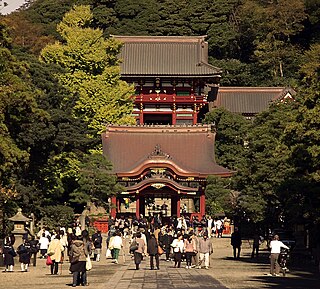
Kamakura is a city in Kanagawa Prefecture, Japan.

Japan is an island country in East Asia. It is situated in the northwest Pacific Ocean, and is bordered on the west by the Sea of Japan, while extending from the Sea of Okhotsk in the north toward the East China Sea, Philippine Sea, and Taiwan in the south. Japan is a part of the Ring of Fire, and spans an archipelago of 6852 islands covering 377,975 square kilometers (145,937 sq mi); the five main islands are Hokkaido, Honshu, Shikoku, Kyushu, and Okinawa. Tokyo is the nation's capital and largest city, followed by Yokohama, Osaka, Nagoya, Sapporo, Fukuoka, Kobe, and Kyoto.
National Bloody Mary Day (United States)
This is a list of food days by country. Many countries have designated specific days as celebrations, commemorations, or acknowledgments of certain types of food and drink.

The United States of America, commonly known as the United States or informally America, is a country in North America. It consists of 50 states, a federal district, five major unincorporated territories, nine Minor Outlying Islands, and 326 Indian reservations. It is the third-largest country by both land and total area. The United States shares land borders with Canada to its north and with Mexico to its south. It has maritime borders with the Bahamas, Cuba, Russia, and other nations. With a population of over 331 million, it is the third most populous country in the world. The national capital is Washington, D.C., and the most populous city and financial center is New York City.
National Tree Planting Day (Tanzania)

Arbor Day is a secular day of observance in which individuals and groups are encouraged to plant trees. Today, many countries observe such a holiday. Though usually observed in the spring, the date varies, depending on climate and suitable planting season.

Tanzania, officially the United Republic of Tanzania, is a country in East Africa within the African Great Lakes region. It borders Uganda to the north; Kenya to the northeast; Comoro Islands and the Indian Ocean to the east; Mozambique and Malawi to the south; Zambia to the southwest; and Rwanda, Burundi, and the Democratic Republic of the Congo to the west. Mount Kilimanjaro, Africa's highest mountain, is in northeastern Tanzania. According to the United Nations, Tanzania has a population of 63.59 million, making it the most populous country located entirely south of the equator.
New Year's Day (Gregorian calendar) Japanese New Year

The Japanese New Year is an annual festival with its own customs. Since 1873, the official Japanese New Year has been celebrated according to the Gregorian calendar, on January 1 of each year, New Year's Day . However, some traditional events of the Japanese New Year are partially celebrated on the first day of the year on the modern Tenpō calendar, the last official lunisolar calendar which was used until 1872 in Japan.
New Year's Day (Gregorian calendar) Novy God Day (Russia)
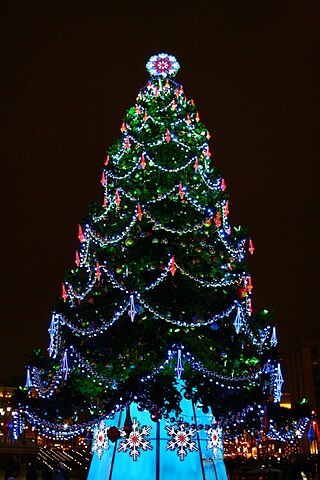
Novy God is the Russian phrase for "New Year", and also designates the Russian New Year's Eve and New Year's Day celebration.

Russia, or the Russian Federation, is a transcontinental country spanning Eastern Europe and Northern Asia. It is the largest country in the world, covering over 17,098,246 square kilometres (6,601,670 sq mi), and encompassing one-eighth of Earth's inhabitable landmass. Russia extends across eleven time zones and shares land boundaries with fourteen countries, more than any other country but China. It is the world's ninth-most populous country and Europe's most populous country, with a population of 146 million people. The country's capital and largest city is Moscow, the largest city entirely within Europe. Saint Petersburg is Russia's cultural centre and second-largest city. Other major urban areas include Novosibirsk, Yekaterinburg, Nizhny Novgorod, and Kazan.
New Year's Day (Gregorian calendar) Sjoogwachi (Okinawa Islands)
This is an overview of festivals and observances found in the Okinawa Islands, Okinawa Prefecture of southwestern Japan. The Okinawan culture is noted for extreme diversity. The following list is based on south-central Okinawa, and may not be applied to northern Okinawa. Miyako and Yaeyama hold substantially different festivals and observances.

The Okinawa Islands are an island group in Okinawa Prefecture, Japan and are the principal island group of the prefecture. The Okinawa Islands are part of the larger Ryukyu Islands group and are located between the Amami Islands of Kagoshima Prefecture to the northeast and the Sakishima Islands of Okinawa Prefecture to the southwest.
Polar Bear Swim Day (Canada and United States)

A polar bear plunge is an event held during the winter where participants enter a body of water despite the low temperature. In the United States, polar bear plunges are usually held to raise money for a charitable organization. In Canada, polar bear swims are usually held on New Year's Day to celebrate the new year.

Canada is a country in North America. Its ten provinces and three territories extend from the Atlantic Ocean to the Pacific Ocean and northward into the Arctic Ocean, covering over 9.98 million square kilometres, making it the world's second-largest country by total area. Its southern and western border with the United States, stretching 8,891 kilometres (5,525 mi), is the world's longest binational land border. Canada's capital is Ottawa, and its three largest metropolitan areas are Toronto, Montreal, and Vancouver.

The United States of America, commonly known as the United States or informally America, is a country in North America. It consists of 50 states, a federal district, five major unincorporated territories, nine Minor Outlying Islands, and 326 Indian reservations. It is the third-largest country by both land and total area. The United States shares land borders with Canada to its north and with Mexico to its south. It has maritime borders with the Bahamas, Cuba, Russia, and other nations. With a population of over 331 million, it is the third most populous country in the world. The national capital is Washington, D.C., and the most populous city and financial center is New York City.
Public Domain Day (multiple countries)

Public Domain Day (PDD) is an observance of when copyrights expire and works enter into the public domain. This legal transition of copyright works into the public domain usually happens every year on January 1 based on the individual copyright laws of each country.
Triumph of the Revolution (Cuba)
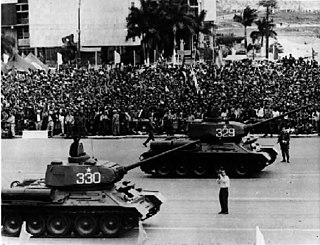
Triumph of the Revolution also known as Liberation Day is a celebration in Cuba of the anniversary of the victory of the revolution led by Fidel Castro in 1959 which established the present government in Cuba. The previous president, Fulgencio Batista fled the country on 31 December 1958. The holiday is celebrated on January 1 every year.

Cuba, officially the Republic of Cuba, is an island country comprising the island of Cuba, as well as Isla de la Juventud and several minor archipelagos. Cuba is located where the northern Caribbean Sea, Gulf of Mexico, and Atlantic Ocean meet. Cuba is located east of the Yucatán Peninsula (Mexico), south of both the American state of Florida and the Bahamas, west of Hispaniola, and north of both Jamaica and the Cayman Islands. Havana is the largest city and capital; other major cities include Santiago de Cuba and Camagüey. The official area of the Republic of Cuba is 109,884 km2 (42,426 sq mi) but a total of 350,730 km² including the exclusive economic zone. Cuba is the second-most populous country in the Caribbean after Haiti, with over 11 million inhabitants.